Supercar events are always popular, both with the owners who seem to relish the chance to show off their expensive toys in the company of others and the crowds, with many younger attendees finding such cars more of a draw than perhaps older or other themed displays would prove to be. During the course of a year there are a number of events in the UK that focus specifically on the genre and yet, with a significant and ever-growing number of supercars in the UK, there is always the potential for further events to be added to the schedule. That surely was the thinking applied by father and son duo of Robin and Mark Webb who burst into the UK events scene in 2019 with their “Supercars on the Hill” event which combined a mouth-watering array of these very high end and extreme cars with the historic location of Shelsley Walsh. They put on an impressive day which added Car Cub displays away from the Paddock as well as assembling a vast and varied array of super- and hypercars which could be inspected at close quarters and seen in action climbing the famous hill. The event was such a success that it was no surprise that news emerged not long after that they planned to repeat it in 2020, and with it came an announcement that they would do a second event, which removed the hill aspects and took advantage of a runway instead, in what was branded “Supercars on the Runway”, and which would be held at Sywell Aerodrome. Sadly, of course, Covd-19 lockdowns precluded the running of either event, but undeterred, everything was carried forward to 2021. As luck would have it, the Supercars on the Runway event was timed for the late May Bank Holiday Sunday, which was a few days after the third of four phases of opening up the country and as the event was completely outdoors, it was able to go ahead on a pre-booked and limited number of attendees basis. The weather gods decided to help out, too, with the arrival of some truly summer-like weather meaning that after a cold and damp month, this really would be a day to remember for all the right reasons. Hundreds of supercars were booked in and duly showed up, and there were a number of Car Club displays as well. Cars were able to show just what they could do on the runway, with some impressive speeds being achieved and some equally beguiling noises to be heard whilst they were so doing. Although there were a lot of people here – as evidenced by the lengthy queues to get into the event – it never felt crowded, largely because the event was spread over a large area, and there was certainly a lot to see. Read on to see just what was on show and try to figure out which significant supercars were not present (I could only think of a few!).
SUPERCAR DISPLAYS
This was obviously the core of the event, with hundreds of supercars parked up. There was a mixture of some random parking and some areas which were marque specific, and the most exclusive and valuable cars – of which there were more than a few – were to be found in a tented area with additional security guards and some roping off which made the photographer’s job both harder and easier. The latter as it meant there were not throngs around the cars, but harder as they were not in an ideal spot to get photos from many angles at all, though the solution to this was to be present as the cars were emerging or returning to their parking area from their trip to the runway. As well as the supercars themselves there were a number of dealer and trade stands, some also displaying supercars and others with cars of interest but not quite qualifying as supercars.
ALFA ROMEO
By 1963, Alfa were ready to add a Coupe version to their new 105 Series Giulia range. It evolved over a 14 year production life, with plenty of different models, though the basic design changed little. The first car was called the Alfa Romeo Giulia Sprint GT, and was revealed at a press event held at the then newly opened Arese plant on 9 September 1963, and displayed later the same month at the Frankfurt Motor Show. In its original form the Bertone body is known as scalino (step) or “step front”, because of the leading edge of the engine compartment lid which sat 1/4 an inch above the nose of the car. The Giulia Sprint GT can be distinguished from the later models by a number of features including: Exterior badging: Alfa Romeo logo on the front grille, a chrome script reading “Giulia Sprint GT” on the boot lid, and rectangular “Disegno di Bertone” badges aft of the front wheel arches; flat, chrome grille in plain, wide rectangular mesh without additional chrome bars; single-piece chrome bumpers; no overriders. Inside the cabin the padded vinyl dashboard was characterised by a concave horizontal fascia, finished in grey anti-glare crackle-effect paint. Four round instruments were inset in the fascia in front of the driver. The steering wheel was non-dished, with three aluminium spokes, a thin bakelite rim and a centre horn button. Vinyl-covered seats with cloth centres and a fully carpeted floor were standard, while leather upholstery was an extra-cost option. After initially marketing it as a four-seater, Alfa Romeo soon changed its definition of the car to a more realistic 2+2. The Giulia Sprint GT was fitted with the 1,570 cc version of Alfa Romeo’s all-aluminium twin cam inline four (78 mm bore × 82 mm stroke), which had first debuted on the 1962 Giulia Berlina. Breathing through two twin-choke Weber 40 DCOE 4 carburettors, on the Sprint GT this engine produced 105 hp at 6,000 rpm. Like all subsequent models, the Sprint GT was equipped with an all-synchromesh 5-speed manual transmission. The braking system comprised four Dunlop disc brakes and a vacuum servo. The rear brakes featured an unusual arrangement with the slave cylinders mounted on the axle tubes, operating the calipers by a system of levers and cranks. According to Alfa Romeo the car could reach a top speed of “over 180 km/h (112 mph)”. In total 21,902 Giulia Sprint GT were produced from 1963 to 1965, when the model was superseded by the Giulia Sprint GT Veloce. Of these 2,274 were right hand drive: 1,354 cars fully finished in Arese, and 920 shipped in complete knock-down kit form for foreign assembly. For 1966, the Giulia Sprint GT was replaced by the Alfa Romeo Giulia Sprint GT Veloce, which was very similar but featuring a number of improvements: a revised engine—slightly more powerful and with more torque—better interior fittings and changes to the exterior trim. Alongside the brand new 1750 Spider Veloce which shared its updated engine the Sprint GT Veloce was introduced at the 36th Geneva Motor Show in March 1966, and then tested by the international specialist press in Gardone on the Garda Lake. Production had began in 1965 and ended in 1968. The Giulia Sprint GT Veloce can be most easily distinguished from other models by the following features: badging as per Giulia Sprint GT, with the addition of round enamel badges on the C-pillar—a green Quadrifoglio (four-leaf clover) on an ivory background—and a chrome “Veloce” script on the tail panel; black mesh grille with three horizontal chrome bars; the grille heart has 7 bars instead of 6; stainless steel bumpers, as opposed to the chromed mild steel bumpers on the Giulia Sprint GT. The bumpers are the same shape, but are made in two pieces (front) and three pieces (rear) with small covers hiding the joining rivets. Inside the main changes from the Giulia Sprint GT were imitation wood dashboard fascia instead of the previous anti-glare grey finish, front seats revised to a mild “bucket” design, and a dished three aluminium spoke steering wheel, with a black rim and horn buttons through the spokes. The Veloce’s type 00536 engine, identical to the Spider 1600 Duetto’s, featured modifications compared to the Giulia Sprint GT’s type 00502—such as larger diameter exhaust valves. As a result it produced 108 hp at 6,000 rpm, an increase of 3 hp over the previous model, and significantly more torque. The top speed now exceeded 185 km/h (115 mph). Early Giulia Sprint GT Veloces featured the same Dunlop disc brake system as the Giulia Sprint GT, while later cars substituted ATE disc brakes as pioneered on the GT 1300 Junior in 1966. The ATE brakes featured an handbrake system entirely separate from the pedal brakes, using drum brakes incorporated in the rear disc castings. Though the Sprint GT Veloce’s replacement—the 1750 GT Veloce—was introduced in 1967, production continued throughout the year and thirty final cars were completed in 1968. By then total Giulia Sprint GT Veloce production amounted to 14,240 examples. 1,407 of these were right hand drive cars, and 332 right hand drive complete knock-down kits. The Alfa Romeo 1750 GT Veloce (also known as 1750 GTV) appeared in 1967 along with the 1750 Berlina sedan and 1750 Spider. The same type of engine was used to power all three versions; this rationalisation was a first for Alfa Romeo. The 1750 GTV replaced the Giulia Sprint GT Veloce and introduced many updates and modifications. Most significantly, the engine capacity was increased to 1779 cc displacement. Peak power from the engine was increased to 120 hp at 5500 rpm. The stroke was lengthened from 82 to 88.5 mm over the 1600 engine, and a reduced rev limit from 7000 rpm to 6000 rpm. Maximum torque was increased to 186 N·m (137 lb·ft) at 3000 rpm. A higher ratio final drive was fitted (10/41 instead of 9/41) but the same gearbox ratios were retained. The result was that, on paper, the car had only slightly improved performance compared to the Giulia Sprint GT Veloce, but on the road it was much more flexible to drive and it was easier to maintain higher average speeds for fast touring. For the United States market, the 1779 cc engine was fitted with a fuel injection system made by Alfa Romeo subsidiary SPICA, to meet emission control laws that were coming into effect at the time. Fuel injection was also featured on Canadian market cars after 1971. Carburettors were retained for other markets. The chassis was also significantly modified. Tyre size went to 165/14 from 155/15 and wheel size to 5 1/2J x 14 instead of 5J x 15, giving a wider section and slightly smaller rolling diameter. The suspension geometry was also revised, and an anti-roll bar was fitted to the rear suspension. ATE disc brakes were fitted from the outset, but with bigger front discs and calipers than the ones fitted to GT 1300 Juniors and late Giulia Sprint GT Veloces. The changes resulted in significant improvements to the handling and braking, which once again made it easier for the driver to maintain high average speeds for fast touring. The 1750 GTV also departed significantly from the earlier cars externally. New nose styling eliminated the “stepped” bonnet of the Giulia Sprint GT, GTC, GTA and early GT 1300 Juniors and incorporated four headlamps. For the 1971 model year, United States market 1750 GTV’s also featured larger rear light clusters (there were no 1970 model year Alfas on the US market). Besides the chrome “1750” badge on the bootlid, there was also a round Alfa Romeo badge. Similar Quadrofoglio badges to those on the Giulia Sprint GT Veloce were fitted on C pillars, but the Quadrofoglio was coloured gold instead of green. The car also adopted the higher rear wheelarches first seen on the GT 1300 Junior. The interior was also much modified over that of earlier cars. There was a new dashboard with large speedometer and tachometer instruments in twin binnacles closer to the driver’s line of sight. The instruments were mounted at a more conventional angle, avoiding the reflections caused by the upward angled flat dash of earlier cars. Conversely, auxiliary instruments were moved to angled bezels in the centre console, further from the driver’s line of sight than before. The new seats introduced adjustable headrests which merged with the top of the seat when fully down. The window winder levers, the door release levers and the quarterlight vent knobs were also restyled. The remote release for the boot lid, located on the inside of the door opening on the B-post just under the door lock striker, was moved from the right hand side of the car to the left hand side. The location of this item was always independent of whether the car was left hand drive or right hand drive. Early (Series 1) 1750 GTV’s featured the same bumpers as the Giulia Sprint GT Veloce, with the front bumper modified to mount the indicator / sidelight units on the top of its corners, or under the bumper on US market cars. The Series 2 1750 GTV of 1970 introduced other mechanical changes, including a dual circuit braking system (split front and rear, with separate servos). The brake and clutch pedals on left hand drive cars were also of an improved pendant design, instead of the earlier floor-hinged type. On right hand drive cars the floor-hinged pedals were retained, as there was no space for the pedal box behind the carburettors. Externally, the series 2 1750 GTV is identified by new, slimmer bumpers with front and rear overriders. The combined front indicator and sidelight units were now mounted to the front panel instead of the front bumper, except again on the 1971-72 US/Canadian market cars. The interior was slightly modified, with the seats retaining the same basic outline but following a simpler design. 44,269 1750 GTVs were made before their replacement came along. That car was the 2000GTV. Introduced in 1971, together with the 2000 Berlina sedan and 2000 Spider, the 2 litre cars were replacements for the 1750 range. The engine displacement was increased to 1962 cc. Oil and radiator capacities remained unchanged. The North American market cars had fuel injection, but everyone else retained carburettors. Officially, both versions generated the same power, 130 hp at 5500 rpm. The interior trim was changed, with the most notable differences being the introduction of a separate instrument cluster, instead of the gauges installed in the dash panel in earlier cars. Externally the 2000 GTV is most easily distinguished by its grille with horizontal chrome bars, featuring protruding blocks forming the familiar Alfa heart in outline, smaller hubcaps with exposed wheel nuts, optional aluminium alloy wheels of the same size as the standard 5. 1/2J × 14 steel items, styled to the “turbina” design first seen on the alloy wheels of the Alfa Romeo Montreal, and the larger rear light clusters first fitted to United States market 1750 GTV’s were standard for all markets. From 1974 on, the 105 Series coupé models were rationalised and these external features became common to post-1974 GT 1300 Junior and GT 1600 Junior models, with only few distinguishing features marking the difference between models. 37,459 2000 GTVs were made before production ended and these days they are very sought after with prices having sky-rocketed in recent years.
Rather than replacing the 916 Series GTV with a single model, Alfa elected to produce two successors., The more commodious of the two, the GT, was the first to appear, making its debut in March 2003 at the Geneva Motor Show, finally going on sale in early 2004. The other 916 series replacement cars were the Brera and Spider models. Visually similar to the 159 models at the front, the Brera and Spider boasted unique styling from the A pillars rearwards. They were offered with the same range of engines as the 159, and thanks to that strong, but rather heavy platform on which they were built, even the 3.2 litre V6 cars were more Grand Tourer than rapid sports car. Pininfarina was responsible for both models. The Brera was first to market, in 2005, with the Spider following in 2006. Production of both ceased in late 2010, by which time 12,488 units of the Spider and 21,786 units of the Brera had been built. It will be very surprising if these do not attain classic status, and the consequent rise in values, though that has not happened yet.
There is now an enthusiastic MiTo Owners Club, so where Italian cars are gathered together, it is quite common to get a whole line of the smallest current Alfa assembled, but there is just one of them in my photos. Known internally as the Tipo 955, the MiTo (the name allegedly standing for Mi-lano and To-rino, where it was designed and is built, respectively, and a pun on the Italian word for “myth”), the smallest Alfa ever made is a three-door only supermini, which was officially introduced on June 19, 2008, at Castello Sforzesco in Milan,, going on sale a few weeks later, with UK supplies reaching the country after the British Motor Show in 2008. Built on the Fiat Small platform used on the Grande Punto, and also employed by the Opel/Vauxhall Corsa, the MiTo was intended to compete with the MINI and the newer Audi A1. Designed by Centro Stile Alfa Romeo, the design is believed to be inspired by the 8C Competizione. A range of engines has been offered since launch, though sadly the GTA Concept that was shown at the 2009 Geneva Show never made it to production. And yes, the MiTo did indeed head to the runway to show just what it could do!
ARIEL
First seen in public at the British International Motor Show at the NEC in Birmingham in October 1996, the Atom began as a student project by Coventry University transport design student, Niki Smart. Known then as the LSC (Lightweight Sports Car), it was developed at the university in 1996 with input and funding from various automotive industry members, including British Steel and TWR. Ariel Motor Company boss Simon Saunders was a senior lecturer whose responsibility for the project was primarily as financial manager and design critic for Smart, whom he described as “The best all-round design student I’ve ever seen.” Since then, an operation was created in Crewkerne, Somerset, and around 100 cars a year are produced there. Each one is made by a single person, who undertakes everything from assembly to final road test before putting his name on the finished product. There have been 7 distinct models, with a wide variety of different engines ranging from a 2 litre Honda VTEC unit in naturally aspirate and supercharged guise, to the ultimate, the 500, with a 3 litre V8 that generates 500 bhp. Visually, the cars look similar at a quick glance, and it takes a real marque expert (which I am not!), to tell them apart. Never intended as an every day car, as their real raison d’etre is as a track machine, owners do take them out on public roads, and they do appear at events like this, which gives us all the chance to see them.
ASTON MARTIN
Follow on to the DB7 was the DB9 (there has never been a car called DB8 – supposedly because people might have assumed this meant a V8 engine), and there was a nice example here. The Aston Martin DB9, designed by Marek Reichmann and Hendrik Fisker, was first shown by Aston Martin at the 2003 Frankfurt Auto Show, in coupe form. It was widely praised for the beauty of its lines. This was the first model to be built at Aston Martin’s Gaydon facility. It was built on the VH platform, which would become the basis for all subsequent Aston models. The Aston Martin DB9 was initially launched equipped with a 6.0 litre V12 engine, originally taken from the V12 Vanquish. The engine produced 420 lbf·ft of torque at 5,000 rpm and a maximum power of 444 hp at 6,000 rpm, allowing the DB9 to accelerate from 0 to 60 mph in 4.7 seconds and a top speed of 299 km/h (186 mph). The engine largely sits behind the front-axle line to improve weight distribution. Changes to the engine for the 2013 model year increased the power to 503 hp and torque to 457 lb-ft, decreasing the 0 to 60 mph time to 4.50 seconds and with a new top speed is 295 km/h (183 mph). The DB9 was available with either a six-speed conventional manual gearbox from Graziano or a six-speed ZF automatic gearbox featuring paddle-operated semi-automatic mode. The gearbox is rear-mounted and is driven by a carbon-fibre tail shaft inside a cast aluminium torque tube. The DB9 was the first Aston Martin model to be designed and developed on Ford’s aluminium VH (vertical/horizontal) platform. The body structure is composed of aluminium and composites melded together by mechanically fixed self-piercing rivets and robotic assisted adhesive bonding techniques. The bonded aluminium structure is claimed to possess more than double the torsional rigidity of its predecessor’s, despite being 25 percent lighter. The DB9 also contains anti-roll bars and double wishbone suspension, supported by coil springs. To keep the back-end in control under heavy acceleration or braking, the rear suspension has additional anti-squat and anti-lift technology. Later versions of the car also features three modes for the tuning: normal, for every-day use, sport, for more precise movement at the cost of ride comfort, and track, which furthers the effects of the sport setting. The Aston Martin DB9 Volante, the convertible version of the DB9 coupe, followed a few months later. The chassis, though stiffer, uses the same base VH platform. To protect occupants from rollovers, the Volante has strengthened windscreen pillars and added two pop-up hoops behind the rear seats. The hoops cannot be disabled and will break the car’s rear window if deployed. In an effort to improve the Volante’s ride while cruising, Aston Martin have softened the springs and lightened the anti-roll bars in the Volante, leading to a gentler suspension. The retractable roof of the Volante is made of folding fabric and takes 17 seconds to be put up or down. The Volante weighs 59 kilograms (130 pounds) more than the coupe. The coupe and Volante both share the same semi-automatic and automatic gearboxes and engine. The car was limited to 266 km/h (165 mph) to retain the integrity of the roof. Like the coupe, the original Volante has 420 lb·ft of torque at 5,000 rpm and a maximum power of 450 hp at 6,000 rpm. The 0 to 60 mph slowed to 4.9 seconds due to the additional weight. The DB9 was facelifted in July 2008, which mainly amounted to an increase in engine power, to 476 hp and a redesigned centre console. Externally, the DB9 remained virtually unchanged. For the 2013 model year revision, Aston made minor changes to the bodywork by adapting designs from the Virage, including enlarging the recessed headlight clusters with bi-xenon lights and LED daytime strips, widening the front splitter, updating the grille and side heat extractors, updating the LED rear lights with clear lenses and integrating a new rear spoiler with the boot lid. .On newer models, like the coupe’s, the Volante’s horsepower and torque increased to 517 PS (510 hp) and 457 lb·ft respectively. As a finale for the model, a more powerful DB9 was released in 2015, called the DB9 GT. This had 540 bhp and 457 lb-ft of torque at 5500 rpm, giving a 0 to 60mph time of 4.4 seconds and 0 to 100mph in 10.2 seconds, with the standing quarter mile dispatched in 12.8 to 12.9 seconds and a top speed of 183mph. Production of the DB9 ended in 2016 being replaced by its successor, the DB11.
Following the unveiling of the AMV8 Vantage concept car in 2003 at the North American International Auto Show designed by Henrik Fisker, the production version, known as the V8 Vantage was introduced at the Geneva Motor Show in 2005. The two seat, two-door coupé had a bonded aluminium structure for strength and lightness. The 172.5 inch (4.38 m) long car featured a hatchback-style tailgate for practicality, with a large luggage shelf behind the seats. In addition to the coupé, a convertible, known as the V8 Vantage Roadster, was introduced later in that year. The V8 Vantage was initially powered by a 4.3 litre quad-cam 32-valve V8 which produced 380 bhp at 7,300 rpm and 409 Nm (302 lb/ft) at 5,000 rpm. However, models produced after 2008 had a 4.7-litre V8 with 420 bhp and 470 Nm (347 lbft) of torque. Though based loosely on Jaguar’s AJ-V8 engine architecture, this engine was unique to Aston Martin and featured race-style dry-sump lubrication, which enabled it to be mounted low in the chassis for an improved centre of gravity. The cylinder block and heads, crankshaft, connecting rods, pistons, camshafts, inlet and exhaust manifolds, lubrication system and engine management were all designed in house by Aston Martin and the engine was assembled by hand at the AM facility in Cologne, Germany, which also built the V12 engine for the DB9 and Vanquish. The engine was front mid-mounted with a rear-mounted transaxle, giving a 49/51 front/rear weight distribution. Slotted Brembo brakes were also standard. The original V8 Vantage could accelerate from 0 to 60 mph in 4.8 seconds before topping out at 175 mph. In 2008, Aston Martin introduced an aftermarket dealer approved upgrade package for power and handling of the 4.3-litre variants that maintained the warranty with the company. The power upgrade was called the V8 Vantage Power Upgrade, creating a more potent version of the Aston Martin 4.3-litre V8 engine with an increase in peak power of 20 bhp to 400 bhp while peak torque increased by 10 Nm to 420 Nm (310 lb/ft). This consists of the fitting of the following revised components; manifold assembly (painted Crackle Black), valved air box, right and left hand side vacuum hose assemblies, engine bay fuse box link lead (ECU to fuse box), throttle body to manifold gasket, intake manifold gasket, fuel injector to manifold seal and a manifold badge. The V8 Vantage had a retail price of GB£79,000, US$110,000, or €104,000 in 2006, Aston Martin planned to build up to 3,000 per year. Included was a 6-speed manual transmission and leather-upholstery for the seats, dash board, steering-wheel, and shift-knob. A new 6-speed sequential manual transmission, similar to those produced by Ferrari and Lamborghini, called Sportshift was introduced later as an option. An open-topped model was added to the range in 2006 and then in the quest for more power a V12 Vantage joined the range not long after.
This is a DBS. Aston Martin had used the DBS name once before on their 1967–72 grand tourer coupe. The modern car replaced the 2004 Vanquish S as the flagship of the marque, and was a V12-engined super grand tourer based on the DB9. The DBS was officially unveiled at the 2007 Pebble Beach Concours d’Elegance on 16 August 2007, which featured a brand new exterior colour (graphite grey with a blue tint) which has been dubbed “Lightning Silver”, followed by an appearance at the 2007 Frankfurt motor show. Deliveries of the DBS began in Q1 2008. The convertible version of the DBS dubbed the DBS Volante was unveiled at the 2009 Geneva Motor Show on 3 March 2009. The DBS Volante includes a motorized retractable fabric roof controlled by a button in the centre console and can fold into the compartment located behind the seats in 14 seconds after the press of the button. The roof can be opened or closed while at speeds up to 48 km/h (30 mph). Apart from the roof, changes include a new wheel design available for both the coupé and volante versions and a 2+2 seating configuration also available for both versions. Other features include rear-mounted six-speed manual or optional six-speed ‘Touchtronic 2’ automatic gearbox, Bang & Olufsen BeoSound DBS in-car entertainment system with 13 speakers. Deliveries of the DBS Volante began in Q3 2009. The model was replaced by a new generation Vanquish in 2012.
This version of the Vanquish started life as the Project AM310 Concept that was unveiled at the 2012 Concorso D’Eleganza at Villa D’Este on the shores of Lake Como, Italy. The concept car was based on the fourth generation VH platform. It included a tweaked version of Aston Martin’s familiar grille and headlight design and a more pronounced bulge in the bonnet – with the real One-77-inspired flourishes saved for the sides and the rear, the side vents run almost to the door handles (from One-77), new rear light design from One-77, and a 5.9-litre V12 engine that produced 550 PS. Aston Martin later announced that the concept would be put into production as the all new Aston Martin Vanquish. The exterior styling of the Vanquish is an evolution of the DBS with many styling cues such as the elongated side strakes being inspired by the Aston Martin One-77. The boot lid included an integrated rear spoiler designed to look as if it is impossible to make; this was done on the orders of Aston Martin Chief Executive, Dr. Ulrich Bez. The car has an exposed carbon fibre side skirt showing its all carbon fibre body. The Vanquish uses the new VH Generation IV platform which is lighter and uses more carbon fibre components than the VH Generation II platform used in the DBS. The car featured an all new interior based on the one found in the exclusive One-77. The standard interior was trimmed in hand stitched leather and alcantara and was available in a range of colours. The centre console features an revised infotainment system over the one found in the DBS. The car was available as either a 2-seater or 2+2. The Vanquish used an upgraded version of Aston Martin’s flagship 5.9-litre AM11 V12 engine called the AM28 with a power output of 565 bhp at 6,750 rpm and torque of 457 lb/ft at 5,500 rpm. The Vanquish can accelerate from 0 to 100 km/h (62 mph) in 4.1 seconds, and has a top speed of 295 km/h (183 mph). Like most Aston Martins, the engine is front mid-mounted for better weight distribution, with the power going to the rear wheels. The Vanquish has 51/49 front/rear weight distribution, and a kerb weight of 1,739 kg (3,834 lb). It uses a fully catalysed stainless steel exhaust system with active bypass valves. The Vanquish uses an updated Touchtronic II six-speed automatic gearbox. It was the first Aston Martin model to be available with launch control. The combined space of cabin and a boot that, at 368 litres, is more than 60% larger than that of the DBS. The brakes are ventilated carbon ceramic discs, 398 mm (15.7 in) six-piston callipers in the front and 360 mm (14.2 in) four-piston callipers in the rear. The suspension is a lightweight aluminium front subframe with hollow castings with independent double wishbones incorporating anti-dive geometry, coil springs, anti-roll bar, and monotube adaptive dampers in the front and independent double wishbones with anti-squat and anti-lift geometry, coil springs, anti-roll bar, and monotube adaptive dampers in the rear. It has a three-stage adjustable adaptive damping system including normal, sport and track modes. The tyres are Pirelli P Zeros, 255/ZR20 in the front and 305/30 ZR20 in the rear. The vehicle was unveiled in the London Film Museum, Covent Garden, followed by 2012 Monterey Car Week. Deliveries to UK and Continental Europe began in late 2012. In August 2014, Aston Martin revealed technical modifications to the Vanquish. The changes include a new eight-speed Touchtronic III gearbox and upgraded AM29 V12 engine that produces 568 bhp and torque of 465 lb/ft. The changes greatly enhanced performance, with an acceleration of 0 to 100 km/h (62 mph) in 3.6 seconds, and a top speed of 324 km/h (201 mph). In 2013, Aston Martin unveiled a convertible version of the Vanquish, called Volante. The Volante includes a full carbon fibre body, triple-skin lightweight fabric roof, 50% larger boot than its predecessor and the third generation Brembo 398 mm × 36 mm front and 360 mm × 32 mm CCM rear Carbon Ceramic Matrix (CCM) brake discs with six-piston front and four-piston rear brake calipers (from the One-77). The Vanquish Volante is 13% torsionally stiffer than the outgoing DBS Volante. The carbon fibre-skin of the Vanquish Volante was created by the engineering team at Aston Martin. The vehicle was unveiled at the 2013 Pebble Beach Concours d’Elegance. Deliveries to Europe began in late 2013. On 16 November 2016, Aston Martin announced the new Vanquish S model. The Vanquish S features the same AM29 V12 engine, with power now increased to 595 bhp, and a new aerodynamic package. The Vanquish S can accelerate from 0 to 100 km/h (62 mph) in 3.5 seconds, and the top speed remains unchanged at 201 mph (324 km/h). The starting price at launch was £199,950 and deliveries started in December 2016. Aston Martin also unveiled a convertible version of the Vanquish S called the Vanquish S Volante in 2017.
There were plenty of examples of the current range here, too, with a factory display of four cars as well as several which their owners had brought along. Accordingly, here were to be seen several DB11 and the latest Vantage, as well as a DBS Superleggera Volante and the newest design in the range, the DBX.
AUDI
Designed, developed and built by Quattro GmbH, Audi’s high performance private subsidiary, the Audi R8 is often heralded as the world’s best everyday supercar. Built on an aluminium monocoque chassis, the R8 has been described by 6-time le Mans winner Jacky Ickx as the “best handling road car today”, high praise indeed, and he is far from the only person to be impressed. Even the UK motoring journalists, not renowned for the positive words that they pen on Audis (in complete contrast to their German peers) almost ran out of superlatives for this car. This is one of the V8 models, dating from 2009, which means that it has 430 bhp, a 0-60 time of 4.0 seconds and a top speed of 168 mph
The second generation of the R8 (model code: Type 4S) was unveiled at the 2015 Geneva Motor Show and is based on the Modular Sports System platform shared with the Lamborghini Huracan. The development of the Type 4S commenced in late 2013 and was completed in late 2014. Initial models included the all-electric e-Tron and the V10 5.2 FSI along with the V10 plus. Unlike its predecessor, there was no manual transmission available and the entry-level V8 trim was also dropped. In 2016, the convertible (Spyder) variant was added to the line up which was initially available in the base V10 trim. In mid-2017, the high performance V10 plus Spyder was added to the range. A rear-wheel-drive model called the R8 RWS was introduced. In 2018, the R8 received a mid-cycle refresh with mechanical and exterior changes. The newer and more aggressive design language carried over from famous Audi models of the past and it’s appearance is slightly more angular up front. Some of the aerodynamic features such as the front aeroblades are shared with the Lamborghini Huracàn. The refreshed model had substantial performance improvements over its predecessor. The base R8 gets a power boost from 532 hp to 562 hp, while the V10 Plus was renamed V10 Performance Quattro and the engine saw a power increase by 10 bhp, now up to 612 bhp. The Audi R8 e-tron (2015) was an all-electric version of the second-generation R8. Unlike the earlier 2010 prototype based on the first-generation R8, it actually entered production, but only on a small scale, with less than 100 units sold. It featured a 92-kWh battery.
BAC
On 4 July 2019, BAC launched the limited-edition BAC Mono R at the Goodwood Festival of Speed. R is a higher-performance, lighter and more advanced new generation of the original BAC Mono. R is 38bhp more powerful and 25kg lighter than the standard Mono, at 343bhp and 555kg – equating to a power-to-weight ratio of 617bhp-per-tonne. Although still resembling the Mono, the R has had all surfaces designed from scratch with 44 bespoke carbon parts restyled to give the car a more aggressive, organic and futuristic stance. The new look of Mono R is defined by the imposing shark nose front. Main beam LED headlights centrally mounted on the nose are a distinguishing feature that reduce the frontal area and contribute to a more minimalist appearance. Mono R’s sleeker and tighter appearance has been achieved by reductions in visible mass across the full body; there has also been a 20mm reduction in overall height and a 25mm increase in length over the standard Mono. The Mono R’s 2.5-litre, four-cylinder engine, co-developed with long-standing engine partner Mountune, has power increased by 38bhp over the Mono to deliver 343bhp. BAC and Mountune increased the cylinder bore size and reduced new billet crankshaft stroke to optimise power and torque delivery and increased redline from 7,800rpm to 8,800rpm. The new Formula-inspired ram-air inlet system provides pressurised air into an all-new throttle body and cylinder head system to further increase power, plus a higher-spec, drive-by-wire motor allows for a quicker throttle response. As a result, the bespoke Mountune engine now offers a specific output of 137bhp per litre – a new naturally-aspirated global record for a road-legal model. Mono R is the first production car in the world fully incorporating the use of graphene-enhanced carbon fibre in every body panel. Using the revolutionary material enhances the structural properties of the fibre to make panels stronger and lighter with improved mechanical and thermal performance. The brand’s latest world first came as a result of a successful APC-funded Research & Development project into the production-readiness of graphene. The technology is now now in full series production. Mono R remains one of the most exclusive supercars ever made. The car seen here is the pre-production prototype.
BENTLEY
Slightly surprisingly, given the number that have been sold, there were next to no Bentley cars here. The only one I came across this which is one of the latest versions of the Continental GT Coupe.
BMW
BMW’s most recent supercar is the futuristic i8, and there were examples of both this and the recently added Roadster version here. The Roadster was launched at the 2017 Los Angeles Show in December, and it is only now that the first right hand drive cars are reaching the UK, three years after the first of the closed coupe models went on sale. For the Roadster, the basic parameters are the same as the Coupe: plug-in hybrid powertrain, housed an aluminium chassis with a carbon-fibre monotub. But the battery boasts a higher capacity, and the hybrid powertrain more muscle to take the i8 even further (and faster). The 1.5-litre turbocharged three-cylinder engine now produces 231 bhp (up from 228), and the electric motor 143 hp (up from 131 hp) for a combined output of 374 hp to rocket the i8 coupe from a standstill to 60 mph in 4.2 seconds, and the roadster in 4.4 as they rocket towards their electronically limited top speed of 155 mph. With a battery pack upgraded from 20 Ah to 34 Ah and from 7.1 kWh to 11.6, it’ll also travel on electric power alone at speeds of up to 65 mph (instead of just 43 mph) – or 75 mph in eDrive mode. All-electric range is up to 34 miles (for the coupe, 33 for the convertible) on the ambitious New European Driving Cycle. The key new thing in the Roadster is the folding soft-top. Aside from the slight performance penalty, it does mean sacrificing the rear seats, but with the inherent rigidity of the carbon cell, chopping the roof off nets only a 132-pound weight penalty for a curb weight quoted at 3,516 lbs. That roof, incidentally, can raise and lower in just 15 seconds at speeds of up to 31 mph, folding into a compact Z-shaped vertical stack. The suspension’s been retuned for the roadster too, and new wheels for both versions reduce unsprung weight. These changes have been applied to the Coupe as well.
Elsewhere I came across this example of the latest and somewhat controversially styled M4. Form your own conclusions!
BUGATTI
There were three examples of the Veyron here.
Also here were three examples of the Chiron. Also here was a Chiron. Taking its name from the 1920s and 1930s Grand Prix racer Louis Chiron, whose notable results included victory in the 1931 French Grand Prix at the wheel of a Bugatti Type 51, this amazing machine, first seen in production guise at the Geneva Show in 2016 had been previewed by the Vision Gran Turismo concept car at the 2015 Frankfurt Show, and a few times after that, such as at the 2016 Retromobile. The immensely powerful Chiron was conceived to occupy the position its highly celebrated predecessor held at the very top of the supercar ladder, one rung above the McLaren P1, Ferrari LaFerrari and Porsche 918 Spyder – all of which had ceased production by the time of the Chrion’s launch. Bugatti describes the second of its modern day models as the most powerful road car to ever reach series production, and it does indeed produce a colossal 1479bhp which means it can reach 62mph in less than 2.5sec – despite weighing 1995kg – and has a maximum top speed of 261mph.. The phrase “series production” is all relative, though, with volumes set to be limited to 500 and a price to match its extreme performance at an eye watering €2.4 million (about £1.9 million) it will remain out of reach for all but the seriously rich. Bugatti boss Wolfgang Dürheimer portrays the quad-turbocharged 8.0-litre W16 powered Chiron as an all-new car that uses little from the Veyron. But while the new Bugatti has been comprehensively re-engineered and now features a full carbonfibre construction, it adopts a similar mechanical package to its record-breaking predecessor. At its heart is a heavily revised version of the quad-turbocharged 8.0-litre W16 configured petrol engine used by the Veyron. With a faintly absurd 1479bhp developed at 6750rpm, the mid-mounted unit delivers 492bhp more than the engine used by the Veyron – in the process providing the Chiron with a power-to-weight ratio of 741bhp per tonne. Torque has also risen by a substantial 257lb ft, peaking at 1179lb ft on a band of revs between 2000 and 6000rpm. Among the more significant developments brought to the Bugatti powerplant is a redesigned carbonfibre inlet manifold, heavily reworked injection system featuring 32 individua l injectors, larger and more powerful turbochargers, a revised intercooler system and new titanium exhaust system with a total of six catalysers that is claimed to provide a substantial reduction in back pressure over the old system. In a bid to provide the new Chiron with what Bugatti describes as a more linear delivery of power than the Veyron, the new turbochargers are operated in a two-stage process; during step off just two turbochargers function initially, with the remaining two joining in to boost performance when the engine speed rises above 3800rpm. The colossal reserves are channelled through a reworked version of the Veyron’s seven-speed dual clutch gearbox and multi-plate clutch four-wheel-drive system; the latter has an electronically controlled differential that provides a torque-vectoring function to vary the amount of drive apportioned to each of the rear wheels and the basis for what Bugatti dubs an “easy to drift” function. While it is yet to undergo final certification testing, Bugatti has released preliminary performance figures suggesting it has achieved its stated aim of making the Chiron faster than the Veyron with claims of 0-to-62mph in under 2.5sec, 0 to 124mph in less than 6.5sec and 0 to 186mph below 13.6sec. By comparison, the Veyron posted official times of 2.5sec, 7.3sec and 16.7sec respectively. As before, top speed is limited in two stages; the so-called handling mode allows 236mph before the electrics step in, and the top-speed mode provides a maximum of 261mph, eclipsing the Veyron by 7mph. The chassis of the Chiron is a clear development of the Veyron’s. In a bid to improve ride quality without compromising body control, it adopts an adaptive suspension system, providing variable ride height and damping control. In combination with variable characteristics for a new electro-mechanical steering system and the four-wheel-drive system, the driver can choose between five driving modes: Lift, Auto, Autobahn, Handling and Top Speed. The Lift mode increases the ride height for speed bumps, while in Auto, Autobahn and Handling modes the top speed is limited to 236mph. To engage Top Speed mode, the Chiron requires a ‘Speed Key’, which alters the engine management system to provide the claimed 261mph maximum. Reining in the vast performance are 420mm front and 400mm rear carbon-ceramic discs grabbed by eight-pot and six-pot calipers respectively. They provide the Chiron with a claimed 62 to 0 mph in 31.3m, 124 to 0 mph in 125m and 186 to 0 mph in 275m – in each case eclipsing the various claimed braking distances of its predecessor. Borrowing strong visual cues from the earlier Veyron, the new Chiron features an even more dramatic design with tauter surfacing, bolder details and added aerodynamic efficiency than that of the car it replaces. The man credited with the new appearance, Bugatti design boss Achim Anscheidt, says it was developed in close collaboration with Bugatti’s engineering team to ensure greater functionality without any loss in overall impact. Key design elements include a race-grade front splitter, large horizontal air ducts, a traditional horseshoe-shaped grille sporting a Bugatti badge fashioned from silver and enamel, distinctive LED headlamps – each with four individual lenses and integrated air ducts that feed cooling air to the front brakes, shapely front wings and a flamboyant semicircular sweep of bodywork extending from the trailing edge of its front wheelarches back towards the rear and into the A-pillars – the latter flourish clearly inspired by the look originally established by Jean Bugatti on the iconic Type 57. As on the Type 57, there is also a prominent centre fin running from the top of the grille across the bonnet and into the heavily rounded roof, providing an important contribution to the Chiron’s longitudinal stability, according to Bugatti. A NACA duct formed by shapely rear pillars replaces the individual air scoops used by the Veyron, channelling air into the engine bay more efficiently and with less turbulence than on its predecessor. It is at the rear where the more significant differences in appearance between the Veyron and Chiron are apparent, with a strong trailing edge, fully integrated rear spoiler, full width LED light band housing the tail lamps, indicators and reserving lamp, sizeable air ducts, large central mounted exhaust and race grade diffuser providing the new Bugatti with a particularly purposeful appearance from behind. Dimensionally, the Chiron remains close to its predecessor. At 4544mm long, 2038mm wide and 1212mm tall, it is 82mm longer, 40mm wider and 53mm higher than the Veyron. The similarities also extend to the wheelbase, which is just 1mm longer, at 2711mm. The Chiron sits on 285/30 R20 ZR tyres at the front, with 355/25 R21 ZR rubber at the rear. The basis for the new Bugatti is provided by a newly developed carbonfibre monocoque structure of the same standard as that used in Audi and Porsche’s LMP1 cars. In a departure from that used by the Veyron, it adopts a sandwich construction for the floor and a carbonfibre-reinforced plastic engine cradle at the rear for added stiffness and lower structure weight. Yet achieving the sort of stiffness achieved by the latest LMP1 race cars, the Chiron is155kg heavier than its predecessor at 1995kg. The increase in width has brought greater space to the two-seat interior and in particular the front wheel wells of the Chiron, according to Bugatti. Greater height has also liberated 12mm extra headroom compared with the Veyron. The cabin is trimmed in a combination of leather, carbonfibre and brushed aluminium. Among the new developments is a passenger airbag that deploys through carbonfibre – a first for a production vehicle. The Chiron is assembled at Bugatti’s headquarters in Mosheim, France. So far, Bugatti has received more than 150 orders for the new car, and deliveries will begin in October, with existing Veyron owners being given priority in the queue. Further variants of the Chiron are planned to be launched, including successor models to the Veyron Grand Sport, Veyron SuperSport and Veyron Grand Vitesse. It is likely that the car will be in “production” until about 2024.
DODGE
The second generation of the Viper, codenamed “SR II” was introduced in 1996. The exposed side exhaust pipes on the roadster were relocated to a single muffler at the rear exiting via two large central tailpipes during the middle of the model year, which reduced back pressure, and therefore increased the power to 415 bhp. Torque would also increase by 23 lb/ft (31 Nm) to 488 lb/ft (662 Nm). A removable hardtop was now available along with a sliding glass window. Some steel suspension components were replaced by aluminum, resulting in a 60 lb (27 kg) weight reduction. Later in the 1996 model year, Dodge introduced the Viper GTS, a new coupé version of the Viper RT/10. Dubbed the “double bubble”, the roof featured slightly raised sections that looked like bubbles to accommodate the usage of helmets and taking design cues from the Shelby Daytona designed by Pete Brock. More than 90% of the GTS was new in comparison to the RT/10 despite similar looks. The GTS would come with the same 7,990 cc V10 engine but power would be increased to 450 hp (336 kW; 456 PS) at 5,200 rpm and 664 Nm (490 lb/ft) of torque at 3,700 rpm. The 1996 GTS would be the first Viper to be equipped with airbags and also included air conditioning, power windows and power door locks as standard equipment. The Viper GTS would be chosen as the pace car for the 1996 Indianapolis 500. Minor updates would continue in 1997 and 1998. In 1997, the RT/10 would receive a power increase to 450 hp along with air-bags and power windows. In 1998, both of the versions of the Viper were equipped with second-generation air bags, revised exhaust manifolds (saving 24 lb (11 kg) over the previous cast iron components) along with a revised camshaft. In 2000, the Dodge Viper was updated to lighter hypereutectic pistons and received factory frame improvements. While the hypereutectic pistons provided less expansion, the forged pistons were preferred by customers for the supercharged and turbocharged aftermarket packages. TSB (Technical Service Bulletin) recalls (998 and 999) were done at local dealerships to repair the 1996 to 1999 Viper frames by adding gussets with rivets near the steering box. 2001 saw the addition of anti-lock braking system. Colours would vary throughout the second generation. Dodge would offer three or four colours per model year. Some colors such as steel gray were only offered for one model year (MY2000) while other colours such as red were offered during the entire second generation. Interior colours and wheel options would also vary throughout the second generation. The cobalt blue colour of the Dodge Viper GTS seen in the Viper (TV series) was exclusively available to the series. Stripes would be an option beginning in 1996. The GTS stripes were larger, fuller stripes than the stripes offered on the 96 RT/10. The GTS had twin stripes (8 inches wide with a 4-inch gap in between) that ran from the front bumper all the way through the rear bumper. 1996 was the only model year in which the stripes would run through the rear license plate area. Stripes on later models would run from front to rear but did not run through the rear license plate area. The RT/10 was replaced by the SRT-10 roadster in 2003, and the GTS was replaced in 2006 by the SRT-10 coupé.
The Dodge Challenger SRT Hellcat is a high performance variant of the Challenger equipped with a supercharged 6.2-liter Hemi engine rated at 707 hp and 650 lb/ft (881 Nm) of torque. This engine is also available in the Dodge Charger SRT Hellcat full-sized sedan, the Jeep Grand Cherokee Trackhawk SUV, and as the Hellcrate engine swap kit. The inner driving light on the left front has been removed to allow air to get into the engine resulting in more torque, and the wheel wells are different from the standard SRT to accommodate the 20-inch aluminum wheels. The SRT Hellcat is equipped with two separate key fobs; use of the “black” fob limits engine output to 500 hp, while the “red” fob enables full output capability. The Hellcat has a quarter-mile time of 11.2 seconds; this was accomplished with street legal drag tires. On stock tyres the Hellcat was able to achieve 11.6 seconds at 125 mph (201 km/h) on the quarter-mile. The Challenger SRT Hellcat can accelerate from 0–60 mph in 3.6 seconds and can brake from 60–0 in 109 ft (33 m). Top speed is 199 mph (320 km/h). The Challenger Hellcat has a lateral acceleration of 0.94 g. The European-spec Hellcat is capable of accelerating from 0–62 mph (0–100 km/h) in 3.9 seconds, 0–124 mph (0–200 km/h) in 10.7 seconds, and 0–186 mph (0–299 km/h) in 38 seconds (although the speedometer appeared to be inaccurate by 10–15 km/h (6–9 mph)). The Challenger Hellcat was able to complete its Gingerman Raceway lap in 1:45.8,[58] the Hockenheim Short in 1:14.6 and the Motown Mile in 0:56.37. The Hellcat has remained in the Challenger range ever since launch in 2015
FERRARI
Still seen by many as the most beautiful Ferrari ever built was the 246 GT Dino and there were some lovely examples here. The Ferrari Dino was created to honour Alfredo ‘Dino’ Ferrari, Enzo Ferrari’s only legitimate son, who sadly died of muscular dystrophy in 1956. Unlike any previous road-going Ferrari, the Dino utilised a V6 engine, the Tipo 156, which Alfredo himself had helped develop and strongly advocated during his working life. Following continued motor racing success and in order to homologate Ferrari’s 1966 Formula Two campaign, a new line of mid-engined production V6 coupés with Fiat running gear went on sale in 1967 in two litre 206 GT form. However, in 1969 a larger 2.4 litre Dino was introduced, named the 246 GT or GTS in the case of the Spider. Only 3,913 definitive Dinos were built before the introduction of the completely restyled V8 engined 308 in 1973. The voluptuous bodywork of the 246, which many regard as the prettiest ever to grace a road-going Ferrari, was designed by Pininfarina and built by Scaglietti. It clothed a tubular chassis which carried wishbone independent suspension at each corner. The compact four-cam, 190bhp. engine was mounted transversely above the five-speed gearbox and just ahead of the rear axle, allowing for both a comfortable cockpit and some usable boot space.
The Dino 308 GT4 was introduced at the Paris Motor Show in 1973. It only gained the “Prancing Horse” badge in May 1976, which replaced the Dino badges on the front, wheels, rear panel and the steering wheel. This has caused major confusion over the years by owners, enthusiasts and judges. During the energy crisis at that time many prospective owners were hesitant to buy such an expensive automobile not badged “Ferrari” being confused at the significance of the Dino name. The GT4 was a groundbreaking model for Ferrari in several ways: it was the first production Ferrari to feature the mid-engined V8 layout that would become the bulk of the company’s business in the succeeding decades, and was the first production Ferrari with Bertone (rather than Pininfarina) designed bodywork. Pininfarina was upset by the decision to give cross-town rival Bertone the design, considering all they had done for Ferrari. The styling featured angular lines entirely different from its curvaceous 2-seater brother, the Dino 246, and was controversial at the time. Some journalists compared it to the Bertone-designed Lancia Stratos and Lamborghini Urraco, also penned by Marcello Gandini. From the cockpit the driver sees only the road. It has perfect 360 degree visibility, no blind spots, upright and comfortable seating position, a real boot, a back seat for soft luggage, and very easy engine access. Enzo Ferrari himself took a major role in its design, even having a mock-up made where he could sit in the car to test different steering, pedals and cockpit seating positioning. The chassis was a tubular spaceframe based on the Dino 246, but was stretched for a 115.2 in wheelbase to make room for the second row of seats. The suspension was fully independent, with double wishbones, anti-roll bars, coaxial telescopic shock absorbers and coil springs on both axles. Niki Lauda helped set up the chassis. The 2927 cc V8 was mounted transversally integrally joined with the 5-speed transaxle gearbox. The engine had an aluminium alloy block and heads, 16-valves and dual overhead camshafts driven by toothed belts; it produced 255 hp in the European version and 240 hp in the American. The induction system used four Weber 40 DCNF carburettors. The GT4 was replaced by the Mondial 8 in 1980 after a production run of 2,826 308s and 840 208s.
The 308 GTB was launched at the Paris Motor Show in 1975 as a direct replacement for the Dino 246. Designed by Pininfarina with sweeping curves and aggressive lines, the 308 has gone on to become one of the most recognised Ferraris of all time. Fitted with a 2.9 litre DOHC V8 engine fed by four Webber 40DCNF Carburettors, the power output of 255bhp was sufficient to propel the 308 from 0 to 60mph in 6.5 seconds and on to a top speed of 159 mph. Tougher emissions standards in the 1980s challenged Ferrari more than many other marques. In 1980, fuel injection was adopted for the first time on the 308 GTB and GTS models, and power dropped quite noticeably from 240 bhp to 214bhp. Two years later, at the 1982 Paris Motor Show, Ferrari launched the 308 quattrovalvole, in GTB and GTS form. The main change from the 308 GTBi/GTSi it succeeded were the 4-valves per cylinder—hence its name, which pushed output back up to 240 hp restoring some of the performance lost to the emission control equipment. The new model could be recognised by the addition of a slim louvred panel in the front lid to aid radiator exhaust air exit, power operated mirrors carrying a small enamel Ferrari badge, a redesigned radiator grille with rectangular driving lights on each side, and rectangular (in place of round) side repeaters. The interior also received some minor updates, such as a satin black three spoke steering wheel with triangular centre; cloth seat centres became available as an option to the standard full leather. Available included metallic paint, a deep front spoiler, air conditioning, wider wheels, 16-inch Speedline wheels with Pirelli P7 tyres, and a satin black roof aerofoil (standard on Japanese market models). Apart from the 32-valve cylinder heads, the V8 engine was essentially of the same design as that used in the 308 GTSi model. The gear and final drive ratios were altered to suit the revised characteristics of the four valves per cylinder engine. One other significant benefit of the QV four valve heads was the replacement of the non-QV models sodium valves which have been known to fail at the joint between the head and the stem. Bosch K-Jetronic fuel injection and Marelli Digiplex electronic ignition were carried over from the GTBi/GTSi. The car was produced in this form until the launch of the 328 models in the autumn of 1985 which had larger 3.2 litre engines and a number of styling changes. 308 GTB models are becoming increasingly sought after, with prices rising steadily and quite steeply.
Introduced at the 1985 Frankfurt Show alongside the Mondial 3.2 series, the Ferrari 328 GTB and GTS (Type F106) were the successors to the Ferrari 308 GTB and GTS which had first been seen in October 1975. While mechanically still based on the 308 GTB and GTS respectively, small modifications were made to the body style and engine, most notably an increase in engine displacement to 3185 cc for increased power and torque output. As had been the case for a generation of the smaller Ferraris, the model name referred to the total cubic capacity of the engine, 3.2 litres, and 8 for the number of cylinders. Essentially the new model was a revised and updated version of the 308 GTS, which had survived for eight years without any radical change to the overall shape, albeit with various changes to the 3-litre engine. The 328 model presented a softening of the wedge profile of its predecessor, with a redesigned nose that had a more rounded shape, which was complemented by similar treatment to the tail valance panel. The revised nose and tail sections featured body colour bumpers integral with the valance panels, which reflected the work done concurrently to present the Mondial 3.2 models, with which they also shared a similar radiator grille and front light assembly layout. Thus all the eight-cylinder cars in the range shared fairly unified front and rear aspects, providing a homogeneous family image. The exhaust air louvres behind the retractable headlight pods on the 308 series disappeared, coupled with an increase in the size of the front lid radiator exhaust air louvre, which had been introduced on the 308 Quattrovalvole models, whilst a new style and position of exterior door catch was also provided. The interior trim also had a thorough overhaul, with new designs for the seat panel upholstery and stitching, revised door panels and pulls, together with more modern switchgear, which complemented the external updating details. Optional equipment available was air conditioning, metallic paint, Pirelli P7 tyres, a leather dashboard, leather headlining to the removable roof panel plus rear window surround, and a rear aerofoil (standard on Japanese market models). In the middle of 1988 ABS brakes were made available as an option, which necessitated a redesign of the suspension geometry to provide negative offset. This in turn meant that the road wheel design was changed to accommodate this feature. The original flat spoke “star” wheels became a convex design, in the style as fitted to the 3.2 Mondial models, whether ABS was fitted or not. The main European market 328 GTS models had a tubular chassis with a factory type reference F 106 MS 100. Disc brakes, with independent suspension via wishbones, coil springs, and hydraulic shock absorbers, were provided all round, with front and rear anti roll bars. There were various world market models, each having slight differences, with right and left hand drive available. The V8 engine was essentially of the same design as that used in the 308 Quattrovalvole model, with an increase in capacity to 3185 cc. The engine retained the Bosch K-Jetronic fuel injection system of its predecessor, but was fitted with a Marelli MED 806 A electronic ignition system, to produce a claimed power output of 270 bhp at 7000 rpm. As with the preceding 308 models the engine was mounted in unit with the all synchromesh five-speed manual transmission assembly, which was below, and to the rear of the engine’s sump. The 328 GTS continued in production for four years, until replaced by the 348 ts model in the autumn of 1989, during which time 6068 examples were produced, GTS production outnumbering the GTB (1344 produced) version almost five to one.
Produced alongside the 308/328 GTB and GTS models was the Mondial, and there were a couple of examples of the car on show. Produced by Ferrari from 1980 through 1993, it replaced the 208/308 GT4. The “Mondial” name came from Ferrari’s history — the 500 Mondial race car of the early 1950s. Despite its predecessor being Bertone styled, the Mondial saw Ferrari return to Pininfarina for styling. Sold as a mid-sized coupe and, eventually a cabriolet, it was conceived as a ‘usable’ model, offering the practicality of four seats and the performance of a Ferrari. The car had a slightly higher roofline than its stablemates, with a single long door either side, offering easy access and good interior space, reasonable rear legroom while all-round visibility was excellent. The cabriolets also hold the distinction of being the only production automobile in history that has four seats, is rear mid-engined, and is a full convertible. The car body was not built as a monocoque in the same way as a conventional car. The steel outer body produced by the famous Italian coachbuilder Carrozzeria Scaglietti, in nearby Modena, was built over a lightweight steel box-section space frame. The engine cover and rear luggage compartment lids are in light alloy. The seats and interior were trimmed in Connolly hide, contrasting with the body colour. Most cars were painted rosso red, but some were black or silver, and a few were dark blue. The Mondial was the first Ferrari car where the entire engine/gearbox/rear suspension assembly is on a detachable steel subframe. This design made engine removal for a major rebuild or cylinder head removal much easier than it was on previous models. Unusually, the handbrake is situated between the driver’s seat and the inner sill. Once the handbrake is set it drops down so as, not to impede egress and ingress. Instead of the conventional “H” shift pattern, the gearbox has 1st gear situated in a “dog leg” to the left and back, behind reverse. This pattern, otherwise known as a “reverse h-gate”, allows quicker gear shifts between 2nd and 3rd gear, and also between 4th and 5th. The Mondial underwent many updates throughout production. There were four distinct iterations (8, QV, 3.2, and t), with the latter 3 having two variations each. (coupe and cabriolet). The first car was introduced as the Mondial 8 at the 1980 Geneva Auto Salon. It was the first Ferrari to depart from the company’s simple 3-digit naming scheme, and some reviews found it relatively mild, compared to other Ferraris, regarding performance, drawing criticism from some in the motoring press. It used a mid/rear-mounted Bosch K-Jetronic fuel injection V8, shared with the 308 GTBi/GTSi, mounted transversely. The engine used in the 1973 Dino 308 GT4. The K-Jetronic system is mechanical, with a high-pressure pump which streams fuel continuously to the injectors; it does not have a computer, just a few relays to handle the cold start sequence etc. The chassis was also based on the 308 GT4, but with a 3.9 inch longer wheelbase at 104.3 in. The suspension was the classic layout of unequal-length double wishbones and Koni dampers all around. Today, the Mondial 8 is considered one of the marque’s most “practical” vehicles, due to its 214 hp, proven drivetrain, four seats, and relatively low cost of maintenance (major services can be performed without removing the entire engine/transmission subframe). 703 examples were made. The first Mondial engine, although a DOHC design, used just two valves per cylinder. The 1982 Quattrovalvole or QV introduced a new four-valve head; the combustion chamber design purportedly based on the early eighties Formula 1 engine. Again, the engine was shared with the contemporary 308 GTB/GTS QV, and produced a much more respectable 240 hp. Appearance was largely as per the Mondial 8, although with red engine heads and prominent “quattrovalvole” script at the rear. 1,145 coupés built between 1982 and 1985. A new Cabriolet body style added for 1983. Body styling remained the same as the coupé variant, with the roof maintaining the ‘buttress’ design of the roof, though the Cabriolet required the rear seats to be mounted closer together laterally. The introduction of the Cabriolet saw the popularity of the Mondial rise, particularly in the American market, where the convertible body style was highly desirable. The Cabriolet has the added distinction of being the only four-seat, mid-rear engine, convertible automobile ever manufactured in regular production. 629 units were produced between 1983 and 1985, making this the rarest version of the Mondial. Like the Ferrari 328, the Mondial’s engine grew in both bore and stroke to 3,185 cc in 1985. Output was now 270 PS. The Mondial 3.2 was first presented at the 1985 Frankfurt Auto Show in September that year. Available in both Coupé and Cabriolet forms, styling refreshed with restyled and body-coloured bumpers, similar to the 328 with more integrated indicators and driving lamps, and new alloy wheels with a more rounded face. The 3.2 also boasted a major interior update, with a more ergonomic layout and a more rounded instrument binnacle. Later cars, from 1987 onwards, also sported ABS brakes. Fuel injection remained the primarily mechanical Bosch K-Jetronic (CIS) with an O2 sensor in the exhaust providing feedback to a simple computer for mixture trimming via a pulse modulated frequency valve that regulated control fuel pressure. The ignition system was Marelli Microplex, with electronic advance control and one distributor per bank of the V8. The 1988 Mondial 3.2 would be the final model year that retained the relatively low maintenance costs of the 308/328 drivetrain, allowing major service items like timing belt and clutch replacement performed with the engine/transmission package still in the car. The final Mondial evolution was 1989’s Mondial t, which was a substantially changed model. It was visually different from preceding Mondial models, the most recognizable being the redesign of the air intakes to a smaller rectangular shape. Additionally, the door-handles were of a visually different design, as were the front and rear bumpers which became body coloured. New front and rear wings cover wider tracks and are re-profiled to a fuller shape compared to previous models, which feature a rolled lip. The ‘t’ called attention to the car’s new engine/transmission layout: the previously-transverse engine mounted longitudinally while the gearbox remained transverse, thus forming a ‘t’. By adopting this layout, a longer engine could be mounted lower in the chassis, improving handling dramatically. The ‘t’ configuration was used by Ferrari’s Formula One cars of the 1980s, and would be the standard for the marque’s future mid-engined V8 cars, beginning with the 348, introduced later in the year. The transverse manual gearbox fitted with a Limited Slip Differential with a twin-plate clutch design with bevel gears driving the wheels. Later in production, a Semi-automatic transmission termed “Valeo” was available as an option; while shifting was using a traditional gear lever, the clutch was actuated automatically without a clutch pedal. The engine was up to 3405 cc and 300 hp, controlled by Bosch Motronic DME 2.5 (later DME 2.7) electronic engine management that integrated EFI and ignition control into a single computer unit. Two of these used in the car: one for each bank of the engine. Engine lubrication upgraded to a dry-sump system. The Mondial’s chassis would underpin a new generation of 2-seat Ferraris, right up to the 360, but the 2+2 Mondial would end production just four and a half years later in 1993. However, the “t” layout of the engine and transaxle, adapted from Ferrari’s Formula One cars, continues to be used in mid-engined V8 model Ferraris to date, albeit with a more sophisticated chassis. The new layout saw the engine and transmission mounted on a removable subframe; the assembly removed from the underside of the vehicle for maintenance. This process is necessary for timing belt replacement, making this a costly procedure for the owner who does not have a lift. On the other hand, the clutch was now located at the very rear of the drive train. This arrangement makes clutch replacement and service a simple, inexpensive, and readily owner-do-able proposition. The “t” was home to other Ferrari firsts: It used power assisted steering for the first time and had a 3-position electronically controlled suspension for a variable tradeoff between ride quality and road holding. It also had standard ABS. Total production of the t Coupe was 858 (45 Right Hand Drive), and the t Cabriolet of 1,017 (51 Right Hand Drive, meaning that around 6000 Mondial cars were produced over those 13 years, making it one of the most commercially significant Ferraris to date.
Object of many a poster on a young enthusiast’s bedroom wall when the car was new was the Testarossa and there was a couple of nice examples here. A replacement for the BB512i, the final iteration of Ferrari’s first ever mid-engined road car, the Testarossa was launched at the Paris Show in October 1984. The Pininfarina-designed car was produced until 1991, with the same basic design then going through two model revisions, with the 512 TR and later F512 M which were produced from 1992 to 1996 before the model was replaced by the front-engined 550 Maranello. Almost 10,000 Testarossas, 512 TRs, and F512 Ms were produced, making it one of the most-produced Ferrari models, despite its high price and exotic design. The Testarossa followed the same concept as the BB512, but was intended to fix some of the criticisms of the earlier car, such as a cabin that got increasingly hot from the indoor plumbing that ran between the front-mounted radiator and the midships-mounted engine and a lack of luggage space. This resulted in a car that was larger, and at 1,976 millimetres (78 in) wide the Testarossa was half a foot wider than the Boxer and immediately condemned for being too wide, though these days it does not appear anything like as wide as it did when new. This resulted in an increased wheelbase that stretched about 64 mm (2.5 in) to 2,550 mm (100 in) which was used to accommodate luggage in a carpeted storage space under the front forward-opening lid. The increase in length created extra storage space behind the seats in the cabin. Headroom was also increased with a roofline half an inch taller than the Boxer. The design came from Pininfarina with a team of designers led by design chief Leonardo Fioravanti, the designer of many contemporary Ferraris. The design was originated by Nicosia, but the guidance of Fioravanti was equally important. Being a trained aerodynamicist, Fioravanti applied his know-how to set the aerodynamics layout of the car. This meant the large side intakes were not only a statement of style but actually functional – they drew clean air to cool the side radiators and then went upward and left the car through the ventilation holes located at the engine lid and the tail. As a result, the Testarossa did not need a rear spoiler like Lamborghini’s Countach yet produced zero lift at its rear axle. The aerodynamic drag coefficient of 0.36 was also significantly better than the Lamborghini’s 0.42. Pininfarina’s body was a departure from the curvaceous boxer—one which caused some controversy. The side strakes sometimes referred to as “cheese graters” or “egg slicers,” that spanned from the doors to the rear wings were needed for rules in several countries outlawing large openings on cars. The Testarossa had twin radiators in the back with the engine instead of a single radiator up-front. In conjunction the strakes provided cool air to the rear-mounted side radiators, thus keeping the engine from overheating. The strakes also made the Testarossa wider at the rear than in the front, thus increasing stability and handling. One last unique addition to the new design was a single high mounted rear view mirror on the driver’s side. On US based cars, the mirror was lowered to a more normal placement in 1987 and quickly joined by a passenger side rear view mirror for the driver to be able to make safe easy lane changes. Like its predecessor, the Testarossa used double wishbone front and rear suspension systems. Ferrari improved traction by adding 10-inch-wide alloy rear wheels. The Testarossa drivetrain was also an evolution of the BB 512i. Its engine used near identical displacement and compression ratio, but unlike the BB 512i had four-valve cylinder heads that were finished in red. The capacity was 4,943 cc, in a flat-12 engine mid mounted. Each cylinder had four valves, lubricated via a dry sump system, and a compression ratio of 9.20:1. These combined to provide a maximum torque of 490 Nm (361 lb/ft) at 4500 rpm and a maximum power of 390 hp at 6300 rpm. That was enough to allow the Testarossa to accelerate from 0–60 mph in 5.2 seconds and on to 100 mph. The original Testarossa was re-engineered for 1992 and released as the 512 TR, at the Los Angeles Auto Show, effectively as a completely new car, with an improved weight distribution of 41% front: 59% rear. The F512 M was introduced at the 1994 Paris Auto Show, with the M standing for “modificata”. That car is easy to spot as it lost the pop-up headlights and gained awkward glazed in units.
With styling that had a close link to the Testarossa, the next V8 Ferrari to be launched, in 1989, was the 348, as a replacement for the 328 GTB/GTS models. At launch, the 348 series were not that enthusiastically received by the press who found much to complain about. The 348’s styling differed from previous models with straked side air intakes and rectangular taillights resembling the Testarossa. Launched in two models, a coupe badged 348 tb (Trasversale Berlinetta) and targa roofed 348 ts (Targa), these were soon joined by a fully open car, the 348 Spider. All featured a normally aspirated 3.4-litre version of the quad-cam, four-valve-per-cylinder V8 engine. As with its predecessors, the model number was derived from this configuration, with the first two digits being the displacement and the third being the number of cylinders. The engine, which produced 300 hp was mounted longitudinally and coupled to a transverse manual gearbox, like the Mondial t with which the 348 shared many components. This was a significant change for Ferrari, with most previous small Ferraris using a transverse engine with longitudinal transmission. The “T” in the model name 348 tb and ts refers to the transverse position of the gearbox. The 348 was fitted with dual-computer engine management using twin Bosch Motronic ECUs, double-redundant anti-lock brakes, and self-diagnosing air conditioning and heating systems. Late versions (1993 and beyond) have Japanese-made starter motors and Nippondenso power generators to improve reliability, as well as the battery located within the front left fender for better weight distribution. Similar to the Testarossa but departing from the BB 512 and 308/328, the oil and coolant radiators were relocated from the nose to the sides, widening the waist of the car substantially, but making the cabin much easier to cool since hoses routing warm water no longer ran underneath the cabin as in the older front-radiator cars. This also had the side effect of making the doors very wide. The 348 was equipped with a dry-sump oil system to prevent oil starvation at high speeds and during hard cornering. The oil level can only be accurately checked on the dipstick when the motor is running due to this setup. The 348 was fitted with adjustable ride-height suspension and a removable rear sub-frame to speed up the removal of the engine for maintenance. Despite trenchant criticism of the car, especially its handling, 2,895 examples of the 348 tb and 4,230 of the 348 ts were produced.
Launched in May 1994 as an evolution of the Ferrari 348, just about everything was changed, and improved for the F355, seen here in Berlinetta and Targa formats. Design emphasis for the F355 was placed on significantly improved performance, but driveability across a wider range of speeds and in different environments such as low-speed city traffic was also addressed, as the Honda NS-X had proved that you could make a supercar that could be lived with every day. Apart from the displacement increase from 3.4 to 3.5 litres, the major difference between the V8 engine in the 348 and F355 was the introduction of a 5-valve cylinder head. This new head design allowed for better intake permeability and resulted in an engine that was considerably more powerful, producing 375 hp. The longitudinal 90° V8 engine was bored 2mm over the 348’s engine, resulting in the small increase in displacement. The F355 had a Motronic system controlling the electronic fuel injection and ignition systems, with a single spark plug per cylinder, resulting in an unusual 5 valves per cylinder configuration. This was reflected in the name, which did not follow the formula from the previous decades of engine capacity in litres followed by number of cylinders such as the 246 = 2.4 litres and 6 cylinders and the 308 of 3.0 litres and 8 cylinders. For the F355, Ferrari used engine capacity followed by the number of valves per cylinder (355 = 3.5 litres engine capacity and 5 valves per cylinder) to bring the performance advances introduced by a 5 valve per cylinder configuration into the forefront. 5. The frame was a steel monocoque with tubular steel rear sub-frame with front and rear suspensions using independent, unequal-length wishbones, coil springs over gas-filled telescopic shock absorbers with electronic control servos and anti-roll bars. The car allows selection between two damper settings, “Comfort” and “Sport”. Ferrari fitted all road-going F355 models with Pirelli tires, size 225/40ZR 18 in front and 265/40 ZR 18 in the rear. Although the F355 was equipped with power-assisted steering (intended to improve low-speed driveability relative to the outgoing 348), this could optionally be replaced with a manual steering rack setup by special order. Aerodynamic designs for the car included over 1,300 hours of wind tunnel analysis. The car incorporates a Nolder profile on the upper portion of the tail, and a fairing on the underbody that generates downforce when the car is at speed. These changes not only made the car faster but also much better to drive, restoring Ferrari to the top of the tree among its rivals. At launch, two models were available: the coupe Berlinetta and the targa topped GTS, which was identical to the Berlinetta apart from the fact that the removable “targa-style” hard top roof could be stored behind the seats. The F355 would prove to be last in the series of mid-engined Ferraris with the Flying Buttress rear window, a lineage going back to the 1965 Dino 206 GT, unveiled at the Paris Auto Show. The Spider (convertible) version came later in the year. In 1997 the Formula One style paddle gear shift electrohydraulic manual transmission was introduced with the Ferrari 355 F1 adding £6,000 to the dealer asking price. This system promised faster gearchanges and allowed the driver to keep both hands on the steering wheel, It proved to be very popular and was the beginning of the end for the manual-transmission Ferrari. Ferrari produced 4,871 road-going Berlinetta models, of which 3,829 were 6-speed and 1,042 were F1 transmissions. The Spider proved to be the second-most popular F355 model, with a total production of 3,717 units, of which 2,664 were produced with the 6-speed transmission and another 1,053 produced with the F1 transmission. A total of 2,577 GTS models were produced, with 2,048 delivered with the 6-speed transmission and another 529 with the F1 transmission. This was the last GTS targa style model produced by Ferrari. This made a total production run of 11,273 units making the F355 the most-produced Ferrari at the time, though this sales record would be surpassed by the next generation 360 and later, the F430. All three body styles were here.
The F40 of 1987 was the successor to the 288 GTO. It was designed to celebrate Ferrari’s 40th anniversary and was the last Ferrari automobile personally approved by Enzo Ferrari. At the time it was Ferrari’s fastest, most powerful, and most expensive car for sale. As soon as the 288 GTO was launched, Ferrari started the development of an evolution model, intended to compete against the Porsche 959 in FIA Group B. However, when the FIA brought an end to the Group B category for the 1986 season, Enzo Ferrari was left with five 288 GTO Evoluzione development cars, and no series in which to campaign them. Enzo’s desire to leave a legacy in his final supercar allowed the Evoluzione program to be further developed to produce a car exclusively for road use. In response to the quite simple, but very expensive car with relatively little out of the ordinary being called a “cynical money-making exercise” aimed at speculators, a figure from the Ferrari marketing department was quoted as saying “We wanted it to be very fast, sporting in the extreme and Spartan,” “Customers had been saying our cars were becoming too plush and comfortable.” “The F40 is for the most enthusiastic of our owners who want nothing but sheer performance. It isn’t a laboratory for the future, as the 959 is. It is not Star Wars. And it wasn’t created because Porsche built the 959. It would have happened anyway.” Power came from an enlarged, 2936 cc version of the GTO’s twin IHI turbocharged V8 developing 478 bhp. The F40 did without a catalytic converter until 1990 when US regulations made them a requirement for emissions control reasons. The flanking exhaust pipes guide exhaust gases from each bank of cylinders while the central pipe guides gases released from the wastegate of the turbochargers. Engines with catalytic converters bear F120D code. The suspension was similar to the GTO’s double wishbone setup, though many parts were upgraded and settings were changed; the unusually low ground clearance prompted Ferrari to include the ability to raise the vehicle’s ground clearance when necessary. The body was an entirely new design by Pininfarina featuring panels made of Kevlar, carbon fibre, and aluminium for strength and low weight, and intense aerodynamic testing was employed. Weight was further minimised through the use of a plastic windscreen and windows. The cars did have air conditioning, but had no sound system, door handles, glove box, leather trim, carpets, or door panels. The first 50 cars produced had sliding Lexan windows, while later cars were fitted with wind down windows. The F40 was designed with aerodynamics in mind. For speed the car relied more on its shape than its power. Frontal area was reduced, and airflow greatly smoothed, but stability rather than terminal velocity was a primary concern. So too was cooling as the forced induction engine generated a great deal of heat. In consequence, the car was somewhat like an open-wheel racing car with a body. It had a partial undertray to smooth airflow beneath the radiator, front section, and the cabin, and a second one with diffusers behind the motor, but the engine bay was not sealed. Nonetheless, the F40 had an impressively low Cd of 0.34 with lift controlled by its spoilers and wing. The factory never intended to race the F40, but the car saw competition as early as 1989 when it debuted in the Laguna Seca Raceway round of the IMSA, appearing in the GTO category, with a LM evolution model driven by Jean Alesi, finishing third to the two faster space-framed four wheel drive Audi 90 and beating a host of other factory backed spaceframe specials that dominated the races. Despite lack of factory backing, the car would soon have another successful season there under a host of guest drivers such as Jean-Pierre Jabouille, Jacques Laffite and Hurley Haywood taking a total of three second places and one third. It would later be a popular choice by privateers to compete in numerous domestic GT series. Although the original plan was to build jyst 400 cars, such was the demand that in the end, 1311 were buil
t over a 4 year period.
It was with the 360 Modena that sales of Ferrari models really took off, with unprecedented volumes of the car being sold. The 360 Modena was launched in 1999, named after the town of Modena, the birthplace of Enzo Ferrari. A major innovation in this all new model came from Ferrari’s partnership with Alcoa which resulted in an entirely new all-aluminium space-frame chassis that was 40% stiffer than the F355 which had utilised steel. The design was 28% lighter despite a 10% increase in overall dimensions. Along with a lightweight frame the new Pininfarina body styling deviated from traditions of the previous decade’s sharp angles and flip-up headlights. The new V8 engine, common to all versions, was of 3.6 litre capacity with a flat plane crankshaft, titanium connecting rods and generates 400 bhp Despite what looks like on paper modest gains in reality the power to weight ratio was significantly improved on over the F355, this was due to the combination of both a lighter car and more power. The 0 to 100 km/h acceleration performance improved from 4.6 to 4.3 seconds. The first model to be rolled out was the 360 Modena, available as a manual, or an F1 electrohydraulic manual. Next up was an open car. The 360 was designed with a Spider variant in mind; since removing the roof of a coupe reduces the torsional rigidity, the 360 was built for strength in other areas. Ferrari designers strengthened the sills, stiffened the front of the floorpan and redesigned the windscreen frame. The rear bulkhead had to be stiffened to cut out engine noise from the cabin. The convertible’s necessary dynamic rigidity is provided by additional side reinforcements and a cross brace in front of the engine. Passenger safety is ensured by a strengthened windscreen frame and roll bars. The 360 Spider displays a curvilinear waistline. The fairings imply the start of a roof, and stable roll bars are embedded in these elevations. Due to use of light aluminium construction throughout, the Spider weighs in only 60 kg heavier than the coupé. As with the Modena version, its 3.6 litre V8 with 400 bhp is on display under a glass cover. The engine — confined in space by the convertible’s top’s storage area — acquires additional air supply through especially large side grills. The intake manifolds were moved toward the center of the engine between the air supply conduits in the Spider engine compartment, as opposed to lying apart as with the Modena. In terms of performance, the 0-60 mph time was slightly slower at 4.4 seconds due to the slight weight increase, and the top speed was reduced from 189 to 180 mph. Despite the car’s mid-mounted V8 engine, the electrically operated top is able to stow into the compartment when not in use. The convertible top was available in black, blue, grey and beige. The transformation from a closed top to an open-air convertible is a two-stage folding-action that has been dubbed “a stunning 20 second mechanical symphony”. The interior of the Spider is identical to that of the coupé. There were several examples of both the Modena Coupe and the Spider here.
Fans who wanted to see what Ferrari would do next did not have too long to wait, as the next hypercar, the F50 appeared 4 years later, in 1995. This could almost be seen as a Formula 1 car for the road, as this mid-engined two seat roadster with a removable hardtop had a 4.7 litre naturally aspirated 60-valve V12 engine that was developed from the 3.5 litre V12 used in the 1990 Ferrari 641 Formula One car. Only 349 cars were made, of which 301 were red. Just 4 of them were black, making it, along with silver the least produced colour of the limited palate offered. The last F50 was produced in July 1997. These days this is the rarest of the quintet.
The 360 was followed by F430, which debuted at the 2004 Paris Motor Show. Designed by Pininfarina, under the guidance of Frank Stephenson, the body styling of the F430 was revised from its predecessor, the Ferrari 360, to improve its aerodynamic efficiency. Although the drag coefficient remained the same, downforce was greatly enhanced. Despite sharing the same basic Alcoa Aluminium chassis, roof line, doors and glass, the car looked significantly different from the 360. A great deal of Ferrari heritage was included in the exterior design. At the rear, the Enzo’s tail lights and interior vents were added. The car’s name was etched into the Testarossa-styled driver’s side mirror. The large oval openings in the front bumper are reminiscent of Ferrari racing models from the 60s, specifically the 156 “sharknose” Formula One car and 250 TR61 Le Mans cars of Phil Hill. Designed with soft-top-convertible. The F430 featured a 4.3 litre V8 petrol engine of the “Ferrari-Maserati” F136 family. This new power plant was a significant departure for Ferrari, as all previous Ferrari V8’s were descendants of the Dino racing program of the 1950s. This fifty-year development cycle came to an end with the entirely new unit. The engine’s output was 490 hp at 8500 rpm and 343 lb/ft of torque at 5250 rpm, 80% of which was available below 3500rpm. Despite a 20% increase in displacement, engine weight grew by only 4 kg and engine dimensions were decreased, for easier packaging. The connecting rods, pistons and crankshaft were all entirely new, while the four-valve cylinder head, valves and intake trumpets were copied directly from Formula 1 engines, for ideal volumetric efficiency. The F430 has a top speed in excess of 196 mph and could accelerate from 0 to 100 km/h in 3.9 seconds, 0.6 seconds quicker than the old model. The brakes on the F430 were designed in close cooperation with Brembo (who did the calipers and discs) and Bosch (who did the electronics package),resulting in a new cast-iron alloy for the discs. The new alloy includes molybdenum which has better heat dissipation performance. The F430 was also available with the optional Carbon fibre-reinforced Silicon Carbide (C/SiC) ceramic composite brake package. Ferrari claims the carbon ceramic brakes will not fade even after 300-360 laps at their test track. The F430 featured the E-Diff, a computer-controlled limited slip active differential which can vary the distribution of torque based on inputs such as steering angle and lateral acceleration. Other notable features include the first application of Ferrari’s manettino steering wheel-mounted control knob. Drivers can select from five different settings which modify the vehicle’s ESC system, “Skyhook” electronic suspension, transmission behaviour, throttle response, and E-Diff. The feature is similar to Land Rover’s “Terrain Response” system. The Ferrari F430 was also released with exclusive Goodyear Eagle F1 GSD3 EMT tyres, which have a V-shaped tread design, run-flat capability, and OneTRED technology. The F430 Spider, Ferrari’s 21st road going convertible, made its world premiere at the 2005 Geneva Motor Show. The car was designed by Pininfarina with aerodynamic simulation programs also used for Formula 1 cars. The roof panel automatically folds away inside a space above the engine bay. The conversion from a closed top to an open-air convertible is a two-stage folding-action. The interior of the Spider is identical to that of the coupé. Serving as the successor to the Challenge Stradale, the 430 Scuderia was unveiled by Michael Schumacher at the 2007 Frankfurt Auto Show. Aimed to compete with cars like the Porsche RS-models and the Lamborghini Gallardo Superleggera it was lighter by 100 kg/220 lb and more powerful (510 PS) than the standard F430. Increased power came from a revised intake, exhaust, and an ion-sensing knock-detection system that allows for a higher compression ratio. Thus the weight-to-power ratio was reduced from 2.96 kg/hp to 2.5 kg/hp. In addition to the weight saving measures, the Scuderia semi-automatic transmission gained improved “Superfast”, known as “Superfast2”, software for faster 60 millisecond shift-times. A new traction control system combined the F1-Trac traction and stability control with the E-Diff electronic differential. The Ferrari 430 Scuderia accelerates from 0-100 km/h in 3.6 seconds, with a top speed of 202 miles per hour. Ferrari claimed that around their test track, Fiorano Circuit, it matched the Ferrari Enzo, and the Ferrari F430’s successor, the Ferrari 458. To commemorate Ferrari’s 16th victory in the Formula 1 Constructor’s World Championship in 2008, Ferrari unveiled the Scuderia Spider 16M at World Finals in Mugello. It is effectively a convertible version of the 430 Scuderia. The engine produces 510 PS at 8500 rpm. The car has a dry weight of 1,340 kg, making it 80 kg lighter than the F430 Spider, at a curb weight of 1,440 kg (3,175 lb). The chassis was stiffened to cope with the extra performance available and the car featured many carbon fibre parts as standard. Specially lightened front and rear bumpers (compared to the 430 Scuderia) were a further sign of the efforts Ferrari was putting into this convertible track car for the road. Unique 5-spoke forged wheels were produced for the 16M’s launch and helped to considerably reduce unsprung weight with larger front brakes and callipers added for extra stopping power (also featured on 430 Scuderia). It accelerates from 0-100 km/h in 3.7 seconds, with a top speed of 315 km/h (196 mph). 499 vehicles were released beginning early 2009 and all were pre-sold to select clients.
There was a bigger gap before the next hypercar came along. Widely rumoured to be called the F60, Ferrari surprised everyone at its 2002 unveiling by giving it the name Enzo. This car was built using even more Formula One technology, such as a carbon-fibre body, F1-style electrohydraulic shift transmission, and carbon fibre-reinforced silicon carbide (C/SiC) ceramic composite disc brakes. Also used were technologies not allowed in F1 such as active aerodynamics and traction control. After a downforce of 7600 N (1700 lbf) is reached at 300 km/h (186 mph) the rear wing is actuated by computer to maintain that downforce. The Enzo’s F140 B V12 engine was the first of a new generation for Ferrari. It was based on the design of the V8 found in Maserati’s Quattroporte, using the same basic design and 104 mm (4.1 in) bore spacing. The Enzo formed the basis for a whole array of other very special cars, including the FXX and FXX Evoluzione cars and the Maserati MC12 and MC12 Evoluzione as well as the Ferrari P4/5 and the Millechilli. Originally, 349 of these were going to be produced, but Ferrari decided to add another 50 to the total, meaning 400 in total were produced up until 2004.
After a gap of some years, Ferrari added a 4 seater V8 model to the range at the 2008 Paris Motor Show, with the California. According to industry rumours, the California originally started as a concept for a new Maserati, but the resulting expense to produce the car led the Fiat Group to badge it as a Ferrari in order to justify the high cost of purchase; the company denies this, however. The California heralded a number of firsts for Ferrari: the first front engined Ferrari with a V8; te first to feature a 7-speed dual-clutch transmission; the first with a folding metal roof; the first with multi-link rear suspension; and the first with direct petrol injection. Bosch produced the direct injection system. The engine displaces 4,297 cc, and used direct injection. It delivered 453 bhp at 7,750 rpm; its maximum torque produced was 358 lbf·ft at 5,000 rpm. The resulting 106 bhp per litre of engine displacement is one of the highest for a naturally aspirated engine, as other manufacturers have used supercharging or turbocharging to reach similar power levels. Ferrari spent over 1,000 hours in the wind tunnel with a one-third-scale model of the California perfecting its aerodynamics. With the top up, the California has a drag coefficient of Cd=0.32, making it the most aerodynamic Ferrari ever made until the introduction of the Ferrari F12 Berlinetta. Throughout the California’s production, only 3 cars were built with manual transmission, including one order from the UK. On 15 February 2012, Ferrari announced an upgrade, which was lighter and more powerful. Changes include reducing body weight by 30 kg (66 lb), increased power by output of 30 PS and 11 lbf·ft, acceleration from 0–100 km/h (62 mph) time reduced to 3.8 seconds, introduction of Handling Speciale package and elimination of the manual transmission option. The car was released at the 2012 Geneva Motor Show as a 2012 model in Europe. To give the clients a more dynamic driving experience, an optional HS (Handling Speciale) package was developed as part of the update. It can be recognised by a silver coloured grille and ventilation blisters behind the front wheel wells. The HS package includes Delphi MagneRide magnetorheological dampers controlled by an ECU with 50% faster response time running patented Ferrari software, stiffer springs for more precise body control and a steering rack with a 9 per cent quicker steering ratio (2.3 turns lock to lock as opposed to the standard rack’s 2.5). A more substantive update came in 2014, with the launch of the California T. It featured new sheetmetal, a new interior, a revised chassis and a new turbocharged powertrain. Production ceased in 2019 when the new Portofino model supplanted it.
An all new design, the 458 Italia was first officially unveiled at the 2009 Frankfurt Motor Show. Once more, Ferrari advised that the model incorporated technologies developed from the company’s experience in Formula 1. The body computer system was developed by Magneti Marelli Automotive Lighting. The 458 came with a 4,499 cc V8 engine of the “Ferrari/Maserati” F136 engine family, producing 570 PS ( 562 hp) at 9,000 rpm and 540 N·m (398 lb/ft) at 6,000 rpm with 80% torque available at 3,250 rpm. The engine featured direct fuel injection, a first for Ferrari mid-engine setups in its road cars. The only transmission available was a dual-clutch 7-speed Getrag gearbox, in a different state of tune shared with the Mercedes-Benz SLS AMG. There was no traditional manual option, making this the fourth road-car after the Enzo, Challenge Stradale and 430 Scuderia not to be offered with Ferrari’s classic gated manual. The car’s suspension featured double wishbones at the front and a multi-link setup at the rear, coupled with E-Diff and F1-Trac traction control systems, designed to improve the car’s cornering and longitudinal acceleration by 32% when compared with its predecessors. The brakes included a prefill function whereby the pistons in the calipers move the pads into contact with the discs on lift off to minimise delay in the brakes being applied. This combined with the ABS and standard Carbon Ceramic brakes caused a reduction in stopping distance from 100–0 km/h to 32.5 metres. Ferrari’s official 0–100 km/h (62 mph) acceleration time was quoted as 2.9–3.0 seconds with a top speed of 340 km/h (210 mph). In keeping with Ferrari tradition the body was designed by Pininfarina under the leadership of Donato Coco, the Ferrari design director. The interior design of Ferrari 458 Italia was designed by Bertrand Rapatel, a French automobile designer. The car’s exterior styling and features were designed for aerodynamic efficiency, producing a downforce of 140 kg (309 lb) at 200 km/h. In particular, the front grille features deformable winglets that lower at high speeds, in order to offer reduced drag. The car’s interior was designed using input from former Ferrari Formula 1 driver Michael Schumacher; in a layout common to racing cars, the new steering wheel incorporates many controls normally located on the dashboard or on stalks, such as turning signals or high beams. At launch the car was widely praised as being pretty much near perfect in every regard. It did lack a fresh air version, though, but that was addressed with the launch of the 458 Spider at the 2011 Frankfurt Motor Show. This convertible variant of the 458 Italia featured an aluminium retractable hardtop which, according to Ferrari, weighs 25 kilograms (55 lb) less than a soft roof such as the one found on the Ferrari F430 Spider, and can be opened in 14 seconds The engine cover was redesigned to accommodate the retractable roof system. It had the same 0–100 km/h time as the hard-top but a lower top speed of 199 mph. It quickly became the better seller of the two versions.
The 458 Speciale is part of a now long line of specially engineered cars added to complement the “regular” V8 models that started with the 100 units of the 348 Speciale produced in 1992, and followed up by the 360 Challenge Stradale, the 430 Scuderia and the 16M. In essence they are all about adding power and shedding weight. In simplistic terms, the road to the Speciale can be summed up in four words: more power, less weight. There are other, more detailed changes, too, obviously, but those are the cornerstones around which everything else is shaped. The normally aspirated, flat-plane crank V8 retains its 4497cc swept capacity but receives new cam geometry with higher valve lift, shorter inlet manifolds and different pistons providing a higher compression ratio. Internal friction is reduced, through the use of uprated materials and the upshot is 597bhp (up from 562bhp) generated at the engine’s 9000rpm limit. Torque is the same, at 398lb ft, still delivered at 6000rpm. The engine is mated to a seven-speed, dual-clutch gearbox whose upshifts, we were told at the launch of such gearboxes, are all but instant. That’s still true, but Ferrari has improved the response time to a pull on the lever and made the engine rev-match more quickly on downshifts to reduce the time that those take. The engine’s changes shave 8kg from the car’s overall weight – the exhaust is all aluminium and the intake is carbonfibre. Those 8kg form part of a claimed 90kg total saving at 1395kg now, versus 1485kg for a 458 Italia. Of this 90kg, 12kg is contributed by lighter, forged wheels, 13kg comes from bodywork and window changes (lighter glass all round and Lexan for the engine cover), and 20kg comes from the cabin. There are two flaps on the Speciale’s front valance, one either side of the prancing horse badge in its centre. Below 106mph these flaps remain closed, which diverts air towards the radiators. Above that speed, the radiators get quite enough cool air, thanks very much, so the flaps open, which reduces drag. Then, above 137mph, they move again, lowering to shift downforce to the rear of the car, in turn adjusting the balance 20 per cent rearward in order to promote high-speed cornering stability. At the rear, meanwhile, there is a new diffuser (the exhausts have been rerouted to make the most of its central section). Movable flaps in the diffuser adjust, but this time they are dependent not only on speed but also on steering angle and throttle or brake position. When lowered, the flaps stall the path of air into the diffuser and improve the Cd by 0.03. When raised, the diffuser adds downforce as it should. Bodywork changes, though, also bring some aerodynamic improvements, you’ll not be surprised to hear, with lessons applied from the LaFerrari and FXX programmes. In the front valance and under the rear diffuser, there are flaps that open at speed to reduce drag and improve downforce. Finally, there are new Michelin Pilot Sport Cup 2 tyres in a unique compound – rather a sticky one, we suspect – plus new calibration for the adaptive dampers. The carbon-ceramic brake discs also use a new compound. 499 of them were built and they sold out very quickly.
The GTC4Lusso is a successor to the Ferrari FF. Like its predecessor, the GTC4Lusso is a 3-door shooting-brake with an all-wheel drive drivetrain, and is powered by a front-mid mounted V12 engine. The GTC4Lusso’s 6,262 cc Ferrari F140 65° V12 engine is rated at 690 PS at 8,000 rpm and 697 Nm (514 lb/ft) of torque at 5,750rpm. The increase in output of the engine is due to the compression ratio raised to 13.5:1. Ferrari claims a top speed of 335 km/h (208 mph), unchanged from the FF, and a 0–100 km/h (0–62 mph) acceleration time of 3.4 seconds. The car uses an improved version (called the 4RM Evo) of Ferrari’s patented four-wheel drive system introduced on the FF, integrated with four-wheel steering into the system. Collectively, the system is called 4RM-S. The GTC4Lusso was unveiled at the 2016 Geneva Motor Show. A second version joined the range, unveiled at the 2016 Paris Motor Show. This was the GTC4Lusso T, a rear wheel drive only version of the GTC4Lusso powered by a V8 engine with lesser displacement, though the 4WS four-wheel steering system from its V12 variant is retained. The GTC4Lusso T comes with a 3,855 cc Ferrari F154 twin turbocharged V8 engine rated at 610 PS at 7,500 rpm and 760 Nm (561lb/ft) of torque at 3,000–5,250 rpm. According to the manufacturer the car can attain a top speed of over 320 km/h (199 mph) and accelerate from 0 to 100 km/h (0 to 62 mph) in 3.5 seconds. The rear features Ferrari’s signature Quad Circular Rear Lights (last seen on the F430) and the interior contains a Dual Cockpit Concept Design, separating the Driver Cockpit and the Passenger Cockpit by a central divider. The front of the car has a single grille that provides all the necessary cooling.
The Ferrari F12berlinetta (Type F152) is a front mid-engine, rear-wheel-drive grand tourer which debuted at the 2012 Geneva Motor Show, and replaces the 599 grand tourer. The naturally aspirated 6.3 litre Ferrari V12 engine used in the F12berlinetta has won the 2013 International Engine of the Year Award in the Best Performance category and Best Engine above 4.0 litres. The F12berlinetta was named “The Supercar of the Year 2012” by car magazine Top Gear. The F12berlinetta was replaced by the 812 Superfast in 2017. There were also examples of the 812 Superfast and the related 812 GTS here.
The F12 TdF was unveiled in October 2015, as a faster, lighter and more powerful special edition of the regular F12 Berlinetta. The accompanying press releases informed us that the the car was created in homage to the legendary Tour de France road races, which it dominated in the 1950s and 1960s with the likes of the 1956 250 GT Berlinetta. However, the full Tour de France name cannot be used, as this is registered to the famous annual cycle race held in France, and even the might of Ferrari’s often belligerent and bullying legal department clearly had not managed to get past that obstacle. The F12 TdF, described by its maker as “the ultimate expression of the concept of an extreme road car that is equally at home on the track”, keeps the same 6.3-litre naturally aspirated V12 engine as the regular F12 Berlinetta, but power has been boosted from 730bhp to 770bhp at 8500rpm, while torque has increased from 509lb ft to 520lb ft at 6750rpm. Ferrari says 80% of the car’s torque is available from 2500rpm. By comparison, McLaren’s 675LT features a 3.8-litre twin-turbocharged V8 engine and produces 660bhp and 516lb ft – enough to give it a 0-62mph sprint time of 2.9 seconds. The older Ferrari 458 Speciale, meanwhile, made 597bhp from its 4.5-litre naturally aspirated V8. The car is capable of reaching 62mph in 2.9sec and has a top speed of more than 211mph. Official fuel consumption is rated at 18.3mpg, with CO2 emissions of 360g/km. Ferrari says it has has used various modifications derived from its F1 cars to boost the engine’s efficiency. The F12 TdF uses a new version of the firm’s dual-clutch automatic transmission, which features shorter gear ratios. New one-piece brake calipers – the same as those used on the LaFerrari supercar – are said to provide “outstanding” stopping distances, allowing the F12 TdF to brake from 62-0mph in 30.5 metres. Ferrari says the car’s performance is “second to none”, but that it has also been conceived to be “an extremely agile and powerful car which could also be driven by less expert drivers”. The F12 TdF has lapped Ferrari’s Fiorano test track in 1min 21sec. The regular F12 Berlinetta completed the lap in 1min 23sec – the same as the new 488. The LaFerrari currently holds the fastest time on the course, with a time of 1min 19.70sec. Among the other changes made to the F12 TdF are larger front tyres, allowing greater lateral acceleration through corners. Ferrari says the car’s “natural tendency” to oversteer has been compensated for by the use of a new rear-wheel steering system. Dubbed Virtual Short Wheelbase, the system – which automatically adjusts the rear wheels for the optimum steering angle – is said to increase stability at high speeds while guaranteeing “the steering wheel response times and turn-in of a competition car”. The F12 TdF’s aggressive bodywork includes a longer and higher rear spoiler, larger air vents to channel air flow along the sides of the car, a redesigned rear diffuser and new wheel arch louvres. It sits on 20in alloy wheels. Overall, the changes combine to give the F12 TdF 30% more downforce compared to the F12. Ferrari says the redesigned bodywork has almost doubled the aerodynamic efficiency of the car compared to the standard F12, while the use of lightweight carbonfibre inside and out has reduced the F12 TdFf’s kerb weight by 110kg over the standard car, which weighs 1630kg. The cabin is deliberately stripped out. The door panels feature carbonfibre trim, while knee padding replaces the traditional glovebox. The majority of the cabin is trimmed with Alcantara instead of real leather. Aluminium plates feature on the floor instead of mats, again hinting at the car’s track-focused nature. Just 799 examples were built, around 20 of which came to the UK, with an asking price of £339,000, around £100,000 more than the regular F12 Berlinetta.
Launched at the 2015 Geneva Show, the 488GTB followed the lead set by the California T in bringing turbocharging into a modern-day, mid-engined V8 Ferrari supercar for the first time. The engine is completely new when compared with its V8 stablemate, not only in components but also in feel and character. It is a twin-turbocharged 3902cc unit whilst that in the California T is 3855cc. In the 488 GTB, it produces 660bhp at 8000rpm and 560lb ft at 3000rpm. Both outputs are significant increases over the normally aspirated 4.5-litre V8 used in the 562 bhp 458 Italia and 597 bhp 458 Speciale, and also greater than the car’s biggest rival, the McLaren 650S. The torque figure of the 488 GTB is such that it also exceeds the 509lb ft at 6000rpm of the normally aspirated V12 used in the range-topping Ferrari F12 Berlinetta. The mighty new engine in the 488 GTB drives the rear wheels through a revised seven-speed dual-clutch automatic gearbox derived from the 458. It features a new ‘Variable Torque Management’ system which, Ferrari says, “unleashes the engine’s massive torque smoothly and powerfully right across the rev range”. The gear ratios are also tuned to “deliver incredibly progressive acceleration when the driver floors the throttle”. The 488 GTB can crack 0-62mph in just 3.0sec, 0-124mph in 8.4sec and reach a top speed of 205mph. Its 0-62mph and 0-124mph times match the McLaren 650S’s, but the Woking car’s top speed is slightly higher at 207mph. The engine also accounts for the ‘488’ element of the car’s name, because each of the engine’s eight cylinders is 488cc in capacity when rounded up. The GTB suffix, standing for Gran Turismo Berlinetta, is a hallmark of previous mid-engined V8 Ferraris such as the 308 GTB. Not only is the new turbo engine more potent than the 4.5-litre V8 from the 458 Italia, but it is also more economical. Combined fuel economy is rated at 24.8mpg, compared with 21.2mpg in the 458 Italia, and CO2 emissions are 260g/km – a 47g/km improvement. Ferrari’s HELE engine stop-start system features on the 488 GTB. Developments on the dynamic side include a second generation of the Side Slip Angle Control system, called SSC2. This allows the driver to oversteer without intruding, unless it detects a loss of control. The SSC2 now controls the active dampers, in addition to the F1-Trac traction control system and E-Diff electronic differential. Ferrari says the result is “more precise and less invasive, providing greater longitudinal acceleration out of corners” and flatter, more stable behaviour during “complex manoeuvres”. Learnings from the Ferrari XX programme have also been incorporated into the 488 GTB, something that Ferrari says allows all drivers and not just professionals, to make the most of its electronic and vehicle control systems. It also claims the 488 GTB is “the most responsive production model there is”, with responses comparable to a track car. The 488 GTB has lapped Ferrari’s Fiorano test track in 1min 23sec – two seconds faster than the 458 Italia, and half a second quicker than the 458 Speciale. The dimensions of the 488 GTB – it is 4568mm in length, 1952mm in width and 1213mm in height – closely match the 458 Italia from which it has evolved. Its dry weight is 1370kg when equipped with lightweight options – 40kg more than the McLaren 650S. The new look, styled at the Ferrari Styling Centre, features several new aerodynamic features that improve downforce and reduce drag. Most notable is the addition of active aerodynamics at the rear through a ‘blown’ rear spoiler, where air is channelled from the base of the glass engine cover under the spoiler. This contributes to the 50% increase in downforce over the 458 Italia. Also new is a double front spoiler, an aerodynamic underbody, a large air intake at the front that references the 308 GTB, a diffuser with active flaps, new positioning for the exhaust flaps and new-look lights. The interior has been redesigned to be made more usable, including new switchgear, air vents and instrument panel. The multi-function steering wheel remains, while the infotainment system gets a new interface and graphics. The Spider followed the closed coupe model six months later, and it soon became the bigger seller of the pair, as was the case with the 458 models.
Latest in the line of special versions of Ferrari’s V8 models, the 488 Pista was launched at the 2018 Geneva Show but it has taken until now before UK customers have got their hands on the cars they ordered all that time ago. Compared to the regular Ferrari 488 GTB, the 488 Pista is 90 kg lighter at 1280kg dry, features a 20 percent improved aerodynamic efficiency and makes 49hp more from its twin-turbo V8 that now produces 711hp (720PS). These are some stunning specs to be honest, especially when you consider just how good the car it’s based upon is. Ferrari claims a 0-62mph (100km/h) in 2.85 seconds, 0-124mph (200km/h) in 7.6 seconds and a top speed of over 211mph (340km/h). Ferrari has opted to call the new special series sports car “Pista”, which is Italian for ‘track’, joining a celebrated lineup of hardcore models that includes the Challenge Stradale, the 430 Scuderia and the 458 Speciale. The whole bodywork has been reshaped, with the designers using innovations such as the S-Duct at the front and the unique edges of the front bumper and side sills that guide the air flow in -apparently- all the right places. The 3.9-litre V8 engine is essentially the same unit found in the Challenge race car and features specific valves and springs, a new cam profile, strengthened pistons and cylinder heads shorter inlet ducts, radiators with an inverted rake, a larger intercooler and more. It’s also 18kg lighter than the standard engine. For the first time ever in a Ferrari, the new 488 Pista can be fitted with a set of optional single-piece carbon-fibre wheels that are around 40 percent lighter than the GTB’s standard rims. A new generation of Ferrari’s Side Slip Control System is also present (SSC 6.0) because who doesn’t like to slide around a Ferrari with some help from the gods of Maranello. The 488 Pista was not a limited production model and was offered along the regular 488 GTB until it went out of production. No fewer than 20 examples of the model were to be seen here.
Completing the 488 family is this, the 488 Challenge, a replacement for the 458 Challenge Evoluzione, and the sixth car to participate in the one-make series. It boasts the same 3.9 litre V8 engine as the road car but with tuning, improved aerodynamics and shorter gear ratios it has better performance. The DCT transmission gas a new shifts enabling the car to accelerate from a standstill to maximum revs in 4th gear in just 6 seconds. The car has lapped the Fiorano circuit one second quicker than its predecessor.
First seen at the 2018 Paris Show, and inspired by the barchettas of the 1950s, such as the 750 Monza and 860 Monza, the Monza SP1 and SP2 adopt a single- and two-seater configuration, respectively. Both are equipped with Ferrari’s most powerful naturally-aspirated V12 ever made, the 812 Superfast’s 6.5-litre unit. In the SP cars, the 12-cylinder engine makes 810 PS (799 hp) at 8,500 rpm and 719 Nm (530 lb-ft) of torque at 7,000 rpm — 10 PS and 1 Nm more than in the donor car. The Monza SP1 and SP2 make extensive use of carbon fibre, and that contributes to their dry weights of 1,500 kg (3,307 lbs) and 1,520 kg (3,351 lbs), respectively. None of them has a physical windscreen, but Ferrari says owners need not worry about that. The tiny “Virtual Wind Shield” integrated into the fairing ahead of the instrument panel is apparently enough to deflect airflow over the driver’s head. In the SP2, there’s a tiny motorcycle-style physical windshield in front of the passenger seat. Despite the aerodynamic challenges a car with no windshield or roof pose, the Monza SP1 and SP2 are as quick as the 812 Superfast. 0-100 km/h (0-62 mph) takes 2.9 seconds and 0-200 km/h (0-124 mph) is dispatched in 7.9 seconds. However, the two barchettas lose a little when it comes to top speed, which is rated at over 300 km/h (186 mph).
The latest of the 2-seater V8 cars is the F8 Tributo, a surprise newcomer at the 2019 Geneva Show, and the successor to the 488 GTB and the most powerful mid-engined V8 berlinetta in the history of the brand. The new Ferrari F8 Tributo is powered by the company’s twin-turbo 3.9-litre V8 engine, here tuned to produce 710 bhp and 568lb/ft (770Nm) of peak torque. The numbers are the exact same with the special 488 Pista. Ferrari claims that the new F8 Tributo is capable of a 0-62mph (100km/h) in 2.9 seconds, with 0-124mph (200km/h) in 7.8 seconds before hitting a top speed of 211mph (340km/h). It’s not a secret that the new F8 Tributo is the latest evolution of the aluminium 458 platform, with Ferrari saying that their latest mid-engine berlinetta is “a bridge to a new design language”. The new supercar blends in new design elements with aero features such as an S-Duct at the front, which on its own increases downforce by 15 percent compared to a standard 488 GTB. The rear end of Ferrari’s McLaren 720S rival marks the return of the classic Ferrari twin light clusters, while the engine cover is now made out of Lexan and features louvres to extract hot air and remind us of the iconic F40. The chassis of the new F8 Tributo employs Ferrari’s latest version of the Side Slip Angle Control traction management system, which aims to make sliding the car around manageable even for the less experienced drivers. The changes over the 488 GTB are less prominent once you look inside the cabin; the layout of the redesigned dashboard remains the same as before, only now there are completely new door panels and a centre console, as well as a new steering wheel design. The passenger gets a 7-inch touchscreen display. First deliveries of the new Ferrari F8 Tributo started earlier in 2020.
The most recent additions to the range are the Roma and the futuristic SF90 Stradale.
FORD
Original GT40 cars are rare indeed, but almost since their production ended, there have been many companies offering replica versions, and there was a row of these here, making a very striking sight indeed. Among them was at least one GTD 40, one of many different replica versions of the original Ford GT40 of the mid 1960s. As with many of these specialist manufacturers, there is quite a complex story behind the marque. G T Racing has a history dating back to 1985 for specialist vehicle design and builds, starting with high quality customer vehicles to specific chassis and body designs. Working for another quality GT40 car manufacturer, G T Developments between 1988-1994 built over 380 built cars. Forming MDA in 1994 the customer list grew for individual car builds with more demanding levels of accuracy and design improvement. MDA GT40 LTD was started in 2003 and many more cars were produced. As a result of the 2008 recession, MDA GT40 LTD closed its doors due to economic pressure. Since then the company has still supplied GT40 parts to existing customers and owners of other GT40 models and other Race car owners under the name of G T Racing.
More recent cars were the latest GT and the Mustang GT500 Shelby.
HONDA
There were no examples of the first generation NSX here, but I did find this second generation car. In December 2007, Acura announced plans to launch a NSX successor by 2010, based on the styling of the front V10-engined Acura ASCC (Advanced Sports Car Concept). Despite prototypes being tested for production, just a year later, Honda announced that plans had been cancelled due to poor economic conditions. Instead, in March 2010, Honda unveiled the HSV-010 GT for participation in the Japanese SuperGT Championship. This car never reached production as a street-legal car. Reports that Honda was again developing a successor to the NSX remerged in April 2011. By December 2011, Honda officially announced a second generation NSX concept, which was unveiled the following month at the 2012 North American International Auto Show as the Acura NSX Concept. The production model was displayed three years later at the 2015 North American International Auto Show, for sale in 2016. Although the original name was retained, this time it was defined as “New Sports eXperience”. Unlike the first generation NSX which was manufactured in Japan, the new NSX was designed and engineered in Marysville, Ohio, at Honda’s plant, led by chief engineer Ted Klaus. The new NSX has a hybrid electric powertrain, with a 3.5 L twin-turbocharged V6 engine and three electric motors, two of which form part of the “SH-AWD” all wheel drive drivetrain, altogether capable of close to 600 hp. The transmission is a 9-speed dual-clutch automatic. Its body utilizes a space frame design—which is made from aluminium, ultra-high-strength steel, and other rigid and lightweight materials, some of which are the world’s first applications. The first production vehicle with VIN #001 was auctioned off by Barrett Jackson on 29 January 2016. NASCAR team owner Rick Hendrick won the auction with a bid for US$1,200,000. The entire bid was donated to the charities Pediatric Brain Tumor Foundation and Camp Southern Ground. The first NSX rolled off the line in Ohio on 27 May 2016. Hendrick was there to drive it off. The first sales of the new NSX were registered in the second half of 2016
JAGUAR
Successor to the C Type was the D Type. Although it shared many of its mechanical components with the C-Type, including the basic straight-6 XK engine design, initially of 3.4 litres and later enlarged to 3.8 litres in the late fifties, the structure of the car was radically different. The innovative monocoque construction brought aviation industry technology to competition car design, together with an aeronautical understanding of aerodynamic efficiency. The structural design, revolutionary at the time, applied aeronautical technology. The “tub”, or cockpit section, was of monocoque construction, mostly comprising sheets of aluminium alloy. Its elliptical shape and comparatively small cross-section provided torsional rigidity and reduced drag. To the front bulkhead was attached an aluminium tubing subframe for the engine, steering assembly, and front suspension. Rear suspension and final drive were mounted to the rear bulkhead. Fuel was carried in the tail and the designers followed aviation practice by specifying a deformable Marston Aviation Division bag in place of a conventional tank. The aerodynamic bodywork was largely the work of Malcolm Sayer, who had joined Jaguar following a stint with the Bristol Aeroplane Company during the Second World War and later worked on the C-Type. For the D-Type, he insisted on a minimal frontal area. To reduce the XK engine’s height, Jaguar’s chief engineer, William Haynes, and former Bentley engineer, Walter Hassan, developed dry sump lubrication, and it has been said that the car’s frontal area was also a consideration in canting the engine at 8½° from the vertical (which necessitated the offset bonnet bulge). Philip Porter, in his book Jaguar Sports Racing Cars, says that “[a] more likely reason was to provide extra space for the ram pipes feeding the three twin-choke Weber carburettors.” Reducing underbody drag contributed to the car’s high top speed; for the long Mulsanne Straight at Le Mans, a fin was mounted behind the driver for aerodynamic stability. For the 1955 season, factory cars were fitted with a longer nose, which lengthened the car by 7½ inches and further increased maximum speed; and the headrest fairing and aerodynamic fin were combined as a single unit that smoothed the aerodynamics and saved weight. Mechanically, many features were shared with the outgoing C-Type. Its front and rear suspension and innovative all-round disc brakes were retained, as was the XK engine. Apart from the new lubrication system, the engine was further revised as development progressed during the D-Type’s competition life. Notably in 1955 larger valves were introduced, together with asymmetrical cylinder heads to accommodate them. Jaguar D-Types fielded by a team under the leadership of Jaguar’s racing manager Lofty England were expected to perform well in their debut at the 1954 24 Hours of Le Mans race. In the event, the cars were hampered by fuel starvation caused by problems with the fuel filters, necessitating pit stops for their removal, after which the entry driven by Duncan Hamilton and Tony Rolt speeded up to finish less than a lap behind the winning Ferrari. The D-Type’s aerodynamic superiority is evident from its maximum speed of 172.8 mph on the Mulsanne Straight compared with the 4.9 litre Ferrari’s 160.1 mph. For 1955 the cars were modified with long-nose bodywork and engines uprated with larger valves. At Le Mans, they proved competitive with the Mercedes-Benz 300 SLRs, which had been expected to win. Mike Hawthorn’s D-Type had a narrow lead over Juan Manuel Fangio’s Mercedes when another Mercedes team car was involved in the most catastrophic accident in motorsport history.Driver Pierre Levegh and more than 80 spectators lost their lives, while many more were injured. Mercedes withdrew from the race. Jaguar opted to continue, and the D-Type driven by Hawthorn and Ivor Bueb went on to win. Mercedes withdrew from motorsport at the end of the 1955 season, and Jaguar again entered Le Mans in 1956. Although only one of the three factory-entered cars finished, in sixth place, the race was won by a D-Type entered by the small Edinburgh-based team Ecurie Ecosse and driven by Ron Flockhart and Ninian Sanderson, beating works teams from Aston Martin and Scuderia Ferrari. In America, the Cunningham team raced several D-Types. In 1955, for example, a 1954 works car on loan to Cunningham won the Sebring 12 Hours in the hands of Mike Hawthorn and Phil Walters, and in May 1956 the team’s entries for Maryland’s Cumberland national championship sports car race included four D-Types in Cunningham’s white and blue racing colours. Driven by John Fitch, John Gordon Benett, Sherwood Johnston and team owner Briggs Cunningham, they finished fourth, fifth, seventh and eighth, respectively. Although Jaguar withdrew from motorsport at the end of the 1956 season, 1957 proved to be the D-Type’s most successful year. Jaguar D-Types took five of the top six places at Le Mans; Ecurie Ecosse, with considerable support from Jaguar, and a 3.8-litre engine, again took the win, and also second place. This was the best result in the D-Type’s racing history. Rules for the 1958 Le Mans race limited engine sizes to three litres for sports racing cars, which ended the domination of the D-Type with its 3.8-litre XK engine. Jaguar developed a three-litre version to power D-Types in the 1958, 1959 and 1960 Le Mans races but it was unreliable, and by 1960 it no longer produced sufficient power to be competitive. The D-Type’s success waned as support from Jaguar decreased and the cars from rival manufacturers became more competitive. Although it continued to be one of the cars to beat in club racing and national events, the D-Type never again achieved a podium finish at Le Mans. By the early 1960s it was obsolete. Total D-Type production is thought to have included 18 factory team cars, 53 customer cars, and 16 XKSS versions. A 1955 car was sold at Sothebys in 2016 for £19,8 million, making it the most valuable British car ever.
The second generation of the XK debuted in 2005 at the Frankfurt Motor Show in Germany, styled by Jaguar’s chief designer Ian Callum. The X150’s grille was designed to recall the 1961 E-Type. The XK is an evolution of the Advanced Lightweight Coupé (ALC) introduced at the 2005 North American International Auto Show. The XK features a bonded and riveted aluminium chassis shared with the XJ and body panels, both a first for a Jaguar grand tourer. Compared to the XK (X100), the XK (X150) is 61.0 mm (2.4 in) wider and is 162.6 mm (6.4 in) longer. It is also 91 kg (200 lb) lighter resulting in performance and fuel consumption improvements. Unlike the X100, the X150 has no wood trim on the interior offered as standard equipment. The interior featured steering column mounted shift paddles. A more powerful XKR version having a supercharged variant of the engine was introduced in 2007. The XK received a facelift in 2009,[10] with minor alterations to front and rear lights and bumper designs, together with the introduction of a new 5.0-litre V8 for both the naturally aspirated XK and the supercharged XKR. The interior also received some changes, in particular the introduction of the XF style rotary gear selector mated to the new ZF automatic transmission. The XK received a second and more minor facelift in 2011 with new front bumper and light design, which was presented at the New York Auto Show. A higher performance variant of the XKR, the XKR-S, was introduced at the Geneva Motor Show in 2012. The XKR-S gained an additional 40 bhp over the XKR bringing the 0-60 mph acceleration time down to 4.4 seconds and the top speed up to 300 km/h (186 mph). A convertible version of the XKR-S was introduced in 2012. Production of the XK ended in July 2014 without a replacement model.
KIA
Not exactly a supercar, though the performance of the top of the range model is pretty impressive, this Stinger was on one of the trade stands.
KOENIGSEGG
LAMBORGHINI
Oldest Lamborghini in this part of the display was the Miura, a car some will say was the first true supercar. For sure, this car, produced between 1966 and 1973, is widely considered to have instigated the trend of high performance, two-seater, mid-engined sports cars. When released, it was the fastest production road car available. The Miura was originally conceived by Lamborghini’s engineering team, Gian Paolo Dallara, Paolo Stanzani, and Bob Wallace who in 1965 put their own time into developing a prototype car known as the P400. The engineers envisioned a road car with racing pedigree – one which could win on the track and be driven on the road by enthusiasts. The three men worked on its design at night, hoping to convince Lamborghini such a vehicle would neither be too expensive nor distract from the company’s focus. When finally brought aboard, Lamborghini gave his engineers a free hand in the belief the P400 was a potentially valuable marketing tool, if nothing more. The car featured a transversely-mounted mid-engine layout, a departure from previous Lamborghini cars. The V12 was also unusual in that it was effectively merged with the transmission and differential, reflecting a lack of space in the tightly-wrapped design. The rolling chassis was displayed at the Turin Salon in 1965. Impressed showgoers placed orders for the car despite the lack of a body to go over the chassis. Bertone was placed in charge of styling the prototype, which was finished just days before its debut at the 1966 Geneva motor show. Curiously, none of the engineers had found time to check if the engine would fit inside its compartment. Committed to showing the car, they decided to fill the engine bay with ballast and keep the car locked throughout the show, as they had three years earlier for the début of the 350GTV. Sales head Sgarzi was forced to turn away members of the motoring press who wanted to see the P400’s power plant. Despite this setback, the car was the highlight of the show, immediately boosting stylist Marcello Gandini’s reputation. The favourable reaction at Geneva meant the P400 was to go into production by the following year. The name “Miura”, a famous type of fighting bull, was chosen, and featured in the company’s newly created badge. The car gained the worldwide attention of automotive enthusiasts when it was chosen for the opening sequence of the original 1969 version of The Italian Job. In press interviews of the time company founder Ferruccio Lamborghini was reticent about his precise birth date, but stressed that he was born under the star sign Taurus the bull. Early Miuras, known as P400s (for Posteriore 4 litri), were powered by a version of the 3.9 litre Lamborghini V12 engine used in the 400GT at the time, only mounted transversely and producing 350 hp. Exactly 275 P400 were produced between 1966 and 1969 – a success for Lamborghini despite its then-steep price. Taking a cue from the Morris Mini, Lamborghini formed the engine and gearbox in one casting. Its shared lubrication continued until the last 96 SVs, when the case was split to allow the correct oils to be used for each element. An unconfirmed claim holds the first 125 Miuras were built of 0.9 mm steel and are therefore lighter than later cars. All cars had steel frames and doors, with aluminium front and rear skinned body sections. When leaving the factory they were originally fitted with Pirelli Cinturato 205VR15 tyres (CN72). The P400S Miura, also known as the Miura S, made its introduction at the Turin Motorshow in November 1968, where the original chassis had been introduced three years earlier. It was slightly revised from the P400, with the addition of power windows, bright chrome trim around external windows and headlights, new overhead inline console with new rocker switches, engine intake manifolds made 2 mm larger, different camshaft profiles, and notched trunk end panels (allowing for slightly more luggage space). Engine changes were reportedly good for an additional 20 hp. Other revisions were limited to creature comforts, such as a locking glovebox lid, a reversed position of the cigarette lighter and windshield wiper switch, and single release handles for front and rear body sections. Other interior improvements included the addition of power windows and optional air conditioning, available for US$800. About 338 P400S Miura were produced between December 1968 and March 1971. One S #4407 was owned by Frank Sinatra. Miles Davis also owned one, which he crashed in October 1972 under the influence of cocaine, breaking both ankles. The last and most famous Miura, the P400SV or Miura SV featured different cam timing and altered carburettors. These gave the engine an additional 15 hp to a total of 380 hp. The last 96 SV engines had a split sump. The gearbox now had its lubrication system separate from the engine, which allowed the use of the appropriate types of oil for the gearbox and the engine. This also alleviated concerns that metal shavings from the gearbox could travel into the engine with disastrous and expensive results and made the application of an optional LSD far easier. The SV can be distinguished from its predecessors from its lack of “eyelashes” around the headlamps, wider rear wings to accommodate the new 9-inch-wide rear wheels and Pirelli Cinturato tyres, and different taillights. 150 SVs were produced.
Which small boy (and perhaps car loving girl) did not lust after a Countach back in the 1970s and 1980s. A dramatic looking car, this was the stuff of dreams that you would only ever see at the London or NEC Motor Shows. Countach first made an appearance, as a concept in 1971, but it was 1973 before the production car made its debut, and despite unfortunate timing with fuel shortages and a recession, and a number of financial problems for its maker, the car sold well throughout its production life. The Countach entered production as the LP400 with a 3929 cc engine delivering 370 hp. The first production Countach was delivered to an Australian in 1974. Externally, little had altered from the final form of the prototype except at the rear, where conventional lights replaced the futuristic light clusters of the prototype. The styling had become rather more aggressive than Gandini’s original conception, with the required large air scoops and vents to keep the car from overheating, but the overall shape was still very sleek. The original LP400 rode on the quite narrow tyres of the time, but their narrowness and the slick styling meant that this version had the lowest drag coefficient of any Countach model. The emblems at the rear simply read “Lamborghini” and “Countach”, with no engine displacement or valve arrangement markings as is found on later cars. By the end of 1977, the company had produced 158 Countach LP400s. In 1978, a new LP400 S model was introduced. Though the engine was slightly downgraded from the LP400 model (350 bhp), the most radical changes were in the exterior, where the tyres were replaced with 345/35R15 Pirelli P7 tyres; the widest tyres available on a production car at the time, and fibreglass wheel arch extensions were added, giving the car the fundamental look it kept until the end of its production run. An optional V-shaped spoiler was available over the rear deck, which, while improving high-speed stability, reduced the top speed by at least 16 km/h (10 mph). Most owners ordered the wing. The LP400 S handling was improved by the wider tyres, which made the car more stable in cornering. Aesthetically, some prefer the slick lines of the original, while others prefer the more aggressive lines of the later models, beginning with the LP400 S. The standard emblems (“Lamborghini” and “Countach”) were kept at the rear, but an angular “S” emblem was added after the “Countach” on the right side. 1982 saw another improvement, this time giving a bigger, more powerful 4754 cc engine. The bodywork was unaltered, however the interior was given a refresh. This version of the car is sometimes called the 5000 S, which may cause confusion with the later 5000 QV. 321 of these cars were built. Two prototypes of the 1984 Countach Turbo S were built by Lamborghini, of which one is known to exist. The Turbo S weighed 1,515 kg (3,340 lb), while its 4.8 litre twin-turbo V12 had a claimed maximum power output of 758 PS and a torque output of 876 N·m (646 lb·ft), giving the car an acceleration of 0–100 km/h (0–62 mph) in 3.7 seconds and a top speed of 335 km/h (208 mph). A turbo adjuster, located beneath the steering wheel, could be used to adjust the boost pressure from 0.7 bar to 1.5 bar at which the engine performed its maximum power output. The Turbo S has 15″ wheels with 255/45 tyres on the front and 345/35 on the rear. In 1985 the engine design evolved again, as it was bored and stroked to 5167 cc and given four valves per cylinder—quattrovalvole in Italian, hence the model’s name, Countach 5000 Quattrovalvole or 5000 QV in short. The carburettors were moved from the sides to the top of the engine for better breathing—unfortunately this created a hump on the engine deck, reducing the already poor rear visibility to almost nothing. Some body panels were also replaced by Kevlar. In later versions of the engine, the carburettors were replaced with fuel injection. Although this change was the most notable on the exterior, the most prominent change under the engine cover was the introduction of fuel injection, with the Bosch K-Jetronic fuel injection, providing 414 bhp, rather than the six Weber carburettors providing 455 bhp. As for other markets, 1987 and 1988 model Quattrovalvoles received straked sideskirts. 610 cars were built.
At a time when the company was financed by the Swiss-based Mimran brothers, Lamborghini began development of what was codenamed Project 132 in June 1985 as a replacement for the Countach model. The brief stated that its top speed had to be at least 315 km/h (196 mph). The design of the car was contracted to Marcello Gandini, who had designed its two predecessors. When Chrysler bought the company in 1987, providing money to complete its development, its management was uncomfortable with Gandini’s designs and commissioned its design team in Detroit to execute a third extensive redesign, smoothing out the trademark’s sharp edges and corners of Gandini’s original design, and leaving him famously unimpressed. In fact, Gandini was so disappointed with the “softened” shape that he would later realise his original design in the Cizeta-Moroder V16T. The car became known as the Diablo, carrying on Lamborghini’s tradition of naming its cars after breeds of fighting bulls. The Diablo was named after a ferocious bull raised by the Duke of Veragua in the 19th century, famous for fighting an epic battle with ‘El Chicorro’ in Madrid on July 11, 1869 In the words of Top Gear presenter Jeremy Clarkson, the Diablo was designed “solely to be the biggest head-turner in the world.” The Diablo was presented to the public for sale on January 21, 1990. Its power came from a 5.7 litre 48-valve version of the existing Lamborghini V12 featuring dual overhead cams and computer-controlled multi-point fuel injection, producing a maximum output of 499 PS and 580 N·m (428 lb/ft) of torque. The vehicle could reach 100 km/h in about 4.5 seconds, with a top speed of 202 mph. The Diablo was rear-wheel drive and the engine was mid-mounted to aid its weight balance. The Diablo came better equipped than the Countach; standard features included fully adjustable seats and steering wheel, electric windows, an Alpine stereo system, and power steering from 1993 onwards. Anti-lock brakes were not initially available, although they would eventually be used. A few options were available, including a custom-moulded driver’s seat, remote CD changer and subwoofer, rear spoiler, factory fitted luggage set and an exclusive Breguet clock for the dash. The Diablo VT was introduced in 1993. Although the VT differed from the standard Diablo in a number of ways, by far the most notable change was the addition of all wheel drive, which made use of a viscous centre differential (a modified version of LM002’s 4WD system). This provided the new nomenclature for the car (VT stands for viscous traction). The new drivetrain could direct up to 25% of the torque to the front wheels to aid traction during rear wheel slip, thus significantly improving the handling characteristics of the car. Other improvements debuting on the VT included front air intakes below the driving lamps to improve brake cooling, larger intakes in the rear arches, a more ergonomic interior with a revised dashboard, electronically adjustable dampers, four-piston brake calipers, power steering, and minor engine refinements. Many of these improvements, save the four-wheel drive system, soon transferred to the base Diablo, making the cars visually nearly identical. Further updates would follow before the car gave way to the Murcielago in 2001. The Diablo sold in greater numbers than its predecessor with 2898 examples being made during its 11 year production life. There were several here, including the VT and the SV, a few of them were the late model cars with their faired-in headlights.
In its turn, the Diablo gave way to the Murcielago in 2001. Taking its name from the Spanish for “bat”, this was Lamborghini’s first new design in eleven years and more importantly, the brand’s first new model under the ownership of German parent company Audi, which was manifest in a much higher level of quality and reliability. The Murcielago was styled by Peruvian-born Belgian Luc Donckerwolke, Lamborghini’s head of design from 1998 to 2005. Initially it was only available as a Coupe. The Murciélago was an all-wheel drive, mid-engined supersports car. With an angular design and an exceptionally low slung body, the highest point of the roof is just under 4 feet above the ground. One of the vehicle’s most distinguishing features are its scissor doors. which lends to the extreme image. First-generation Murciélagos, produced between 2001 and 2006, were powered by a Lamborghini V12 that traces its roots back to the company’s beginnings in the 1960s. The rear differential is integrated with the engine itself, with a viscous coupling centre differential providing drive to the front wheels. Power is delivered through a 6-speed manual transmission. The Murciélago suspension uses an independent double-wishbone design, and bodywork features carbon fiber, steel and aluminium parts. The rear spoiler and the active air intakes integrated into the car’s shoulders are electromechanically controlled, deploying automatically only at high speeds in an effort to maximise both aerodynamic and cooling efficiency. The first generation cars were produced between 2001 and 2006, and known simply as Murciélago, sometimes Murciélago VT. Their V12 engines produced just under 580 PS (572 bhp), and powered the car to 100 km/h (62 mph) in 3.8 seconds. Subsequent versions incorporated an alphanumeric designation to the name Murciélago, which indicated their engine configuration and output. However, the original cars are never referred to as “LP 580s”. The Murciélago Roadster was introduced in 2004. Primarily designed to be an open top car, it employed a manually attached soft roof as cover from adverse weather, but a warning on the windshield header advised the driver not to exceed 100 mph (160 km/h) with the top in place. The designer used the B-2 stealth bomber, the Wally 118 WallyPower yacht, and architect Santiago Calatrava’s Ciutat de les Arts i les Ciències in Valencia, Spain as his inspiration for the roadster’s revised rear pillars and engine cover. In March 2006, Lamborghini unveiled a new version of its halo car at the Geneva Motor Show: the Murciélago LP 640. The new title incorporated the car’s name, along with an alphanumeric designation which indicated the engine’s orientation (Longitudinale Posteriore), along with the newly updated power output. With displacement now increased to 6.5 litres, the new car made 640 PS ( 631 bhp) at 8000 rpm. The Murciélago’s exterior received a minor facelift. Front and rear details were revised, and side air intakes were now asymmetrical with the left side feeding an oil cooler. A new single outlet exhaust system incorporated into the rear diffuser, modified suspension tuning, revised programming and upgraded clutch for the 6-speed “e-Gear” automated sequential transmission with launch control rounded out the performance modifications. Interior seating was also re-shaped to provide greater headroom, and a new stereo system formed part of the updated dashboard. Optional equipment included Carbon fibre-reinforced Silicon Carbide (C/SiC) ceramic composite brakes, chrome paddle shifters and a glass engine cover. At the 2006 Los Angeles Auto Show, Lamborghini announced that the roadster version of the Murciélago would also be updated to LP 640 status. At the 2009 Geneva Motor Show, Lamborghini unveiled the ultimate version of the Murciélago, the LP 670–4 SuperVeloce. The SV moniker had previously appeared on the Diablo SV, and Miura. SV variants are more extreme and track-oriented, and are released at the end of each model’s production run. The SuperVeloce’s V12 produced 670 PS (661 hp) at 8000 rpm and 660 N·
m (490 lbf·ft) of torque at 6500 rpm, thanks to revised valve timing and upgraded intake system. The car’s weight was also reduced by 100 kg (220 lb) through extensive use of carbon fibre inside and out. A new lighter exhaust system was also used. As a result of the extensive weight loss, the SV had a power-to-weight ratio of 429 bhp/ton. Also standard were the LP 640’s optional 15-inch carbon-ceramic disc brakes with 6 piston calipers. The original production plan for the SV was limited to 350 cars, but in fact only 186 LP 670-4s were produced before the factory had to make room for the new Aventador production line. Numbered cars 1–350 do not represent the order in which cars were manufactured. Only 5-6 were made with manual transmission. Production of the Murciélago ended on November 5, 2010, with a total run of 4,099 cars. Its successor, the Aventador, was released at the 2011 Geneva Motor Show.
The Lamborghini Gallardo is a sports car built by the Italian automotive manufacturer Lamborghini from 2003 to 2013. Named after a famous breed of fighting bull, the V10 powered Gallardo has been Lamborghini’s sales leader and stable-mate to a succession of V12 flagship models—first to the Murciélago (4,099 built between 2001 and 2010), then to the current flagship, the Aventador. The first generation of the Gallardo was powered with an even firing 4,961 cc (5.0 L) 90 degree V10 engine generating a maximum power output of 500 PS at 7500 rpm and 510 Nm (376 lb/ft) of torque at 4500 rpm. The Gallardo was offered with two choices of transmission; a conventional (H-pattern) six-speed manual transmission, and a six-speed electro-hydraulically actuated single-clutch automated manual transmission that Lamborghini called “E-gear”. The “E-gear” transmission provides gear changes more quickly than could be achieved through a manual shift. The driver shifts up and down via paddles behind the steering wheel, but can also change to an automatic mode via the gear selector located in place of the gear shift lever. The vehicle was designed by Luc Donckerwolke and was based on the 1995 Calà prototype designed by Italdesign Giugiaro. For the 2006 model year (launched in late 2005), Lamborghini introduced many changes to the car to counter some criticisms garnered from the press and owners. The exhaust system was changed to a more sporty one (including a flap to make it quieter during city driving), the suspension was revised, a new steering rack was fitted, the engine power was increased by 20 PS to a maximum of 520 PS and the biggest change was overall lower gearing ratios, especially in 1st to 5th gear. These changes gave the car a much better performance than the original and were also included in the limited edition Gallardo SE. The convertible variant of the Gallardo, called the Gallardo Spyder, was unveiled at the Los Angeles Auto Show in January 2006. It was considered by the company to be an entirely new model, with the engine having a power output of 520 PS (382 kW; 513 hp) and a low-ratio six-speed manual transmission. The Spyder has a retractable soft-top. At the 2007 Geneva Auto Show, Lamborghini unveiled the Gallardo Superleggera. The name paid tribute to the construction style of the first Lamborghini production model, the 350 GT, designed and built by Carrozzeria Touring and its emphasis on weight reduction. The Superleggera is lighter than the base model by 100 kg (220 lb) due to the use of carbon fibre panels for the rear diffuser, undertray, the rearview-mirror housings, the interior door panels, the central tunnel, engine cover; titanium wheel nuts and carbon fibre sports seats. The engine power was uprated by 10 PS courtesy of an improved intake, exhaust and ECU for a total power output of 530 PS. The 6-speed E-Gear transmission was standard on US spec models with the 6-speed manual transmission offered as a no cost option. Production of the Superleggera amounted to 618 units worldwide. Presented at the 2008 Geneva Motor Show, the Gallardo LP 560-4 was a significant update of the Gallardo, powered by a new, uneven firing5,200 cc V10 engine that produces 560 PS at 8,000 rpm and 540 Nm (398 lb/ft) of torque at 6,500 rpm. Featuring “Iniezione Diretta Stratificata” direct fuel injection system to improve efficiency; fuel consumption and CO2 emissions have been reduced by 18% despite the increase in performance. The car was redesigned, inspired by the Murciélago LP 640 and Reventón. The new engine, 40 PS more powerful than in the previous car, comes with two transmission choices: a 6-speed manual or 6-speed E-gear, the latter of which was revised to offer a Corsa mode which makes 40% quicker shifts than before and decreases traction control restrictions, a Thrust Mode launch control system was also added. Accompanied with a 20 kg (44 lb) weight reduction. All the improvements add up to a claimed performance of 0-100 km/h (62 mph) in 3.7 seconds, 0-200 km/h (124 mph) of 11.8 and a top speed of 325 km/h (202 mph). The MSRP base price was $198,000 in the US and £147,330 (including NavTrak vehicle tracking system and delivery package) in the UK. The first US car was sold in the 16th Annual Race to Erase MS charity auction for $198,000 to former True Religion Jeans co-founder/co-creator Kymberly Gold and music producer Victor Newman. The Lamborghini Gallardo LP 560-4 Spyder was unveiled at the 2008 LA Auto Show.as the replacement for the previous Gallardo Spyder. It is the convertible model of the Gallardo LP 560-4 and as such possess all of its features like the new uneven firing 5.2 L V10 engine, improved E-gear transmission and 20 kg (44 lb) weight reduction. Performance has been improved to 0-100 km/h (62 mph) in 3.8 seconds, 0-200 km/h (124 mph) of 13.1 and a top speed of 324 km/h (201 mph) In March 2010, Lamborghini announced the release of the Gallardo LP 570-4 Superleggera, a lightweight and more powerful version of the Gallardo LP 560–4 in the same vein as the previous Superleggera. With carbon fibre used extensively inside and out to reduce weight to just 1,340 kg (2,954 lb) making it the lightest road-going Lamborghini in the range. The odd firing 5.2 L V10 on the LP 570-4 gets a power bump over the standard Gallardo to 570 PS at 8,000 rpm and 540 Nm (398 lb/ft) at 6,500 rpm of torque. Performance has been improved to 0-100 km/h (62 mph) in 3.2 seconds, and a 329 km/h (204 mph) top speed. The Gallardo became Lamborghini’s best-selling model with 14,022 built throughout its production run. On 25 November 2013, the last Gallardo was rolled off the production line. The Gallardo was replaced by the Huracán in 2014
The Aventador has been a huge success for Lamborghini. It was first seen at the 2011 Geneva Show, with the full name of Aventador LP700-4 Coupe, the numbers denoting the output of 700 bhp from the all-new V12 engine and the 4 meaning four wheel drive, something which has featured on every Aventador since. The launch price was £250,000 but even so within a month, Lamborghini had a year’s worth of orders, and within a year, 1000 had been built. In November 2012 a Roadster version arrived, which was very similar to the Coupe, but with a lift-out roof panel. A suite of mechanical changes came at this point, with a cylinder deactiviation technology helping to improve fuel consumption and cut emissions. To mark half a century of car production, in April 2013, the LP720-4 50th Anniversary was launched, with 100 units available. As well as the extra 20 bhp, these had a mildly redesigned nose and tail, special paintwork and unique interior trim. A Roadster version followed in December 2014, the LP 700-4 Pirelli Edition. This did not have the extra power, but did feature two tone paint, unique wheels and a transparent engine cover, with the engine bay finished in carbon fibre. Lamborghini turned up the wick in march 2015 with the LP750-4 SuperVeloce, or SV for short, which featured and extra 50 bhp and a 50 kg weight reduction largely thanks to the use of more carbon fibre. A Roadster version followed a few months later.
The Aventador SVJ is the fastest Lamborghini you can buy new. With 759bhp and 531lb ft on tap, the SVJ (Superveloce Jota) matches the power output of the ultra-low-volume Centenario and is 29bhp more powerful than the Aventador S. This power figure is produced by a tuned version of Lamborghini’s naturally aspirated 6.5-litre V12 and is transmitted to the road through all four wheels. Four-wheel steering is also fitted, as per the Aventador S, but the SVJ builds upon the standard car’s agility with a second generation of its active aerodynamics system (ALA 2.0), with improvements over the first system including redesigned air inlets and aero channel designs. The system aided the SVJ in lapping the Nürburgring circuit in 6min 44.97sec – a new record for a production car. Lamborghini claims the SVJ’s downforce is 40% greater than that of the Aventador SV – its former performance flagship. Larger side air intakes, a huge rear wing, tweaked underbody with vortex generators and prominent rear diffuser and aerodynamic bodywork at the front help to achieve the improved aero figure. The chassis is tweaked for additional stiffness – a 50% stiffer anti-roll bar compared with the Aventador SV has been fitted, while the suspension’s damping force range is increased by 15% over the SV. Other tweaks to the suspension are claimed to improve the car’s on-track stability. A re-engineered exhaust system reduces back pressure and has been fettled to produce a “more emotive’ sound, as well as being lighter than the standard set-up, with higher exit points. Also among the mechanical upgrades is a tweaked seven-speed automated manual gearbox, while the four-wheel drive system now sends 3% more torque rearwards. The stability control and ABS systems are tweaked to accommodate the greater grip provided by the active aerodynamics. The car’s exclusive aluminium Nireo wheels are shod in specially made Pirelli P Zero Corsa tyres and are stiffer, with a bespoke tread design for the Aventador SVJ. Lamborghini plans to build 900 SVJs, with UK prices starting at around £356,000 when deliveries begin in early 2019. An additional 63 units will be produced in 63 Edition guise, of which the Pebble Beach reveal car is one, celebrating the brand’s 1963 inception. These feature a bespoke colour and trim and will carry a higher price tag than the regular SVJ.
Replacing Lamborghini’s sales leader and most produced car, the Gallardo, the Huracán made its auto show debut at the March 2014 Geneva Auto Show, and was released in the second quarter of 2014. The name of the Huracan LP 610-4 comes from the fact that this car has 610 metric horsepower and 4 wheel drive. Huracán (huracán being the Spanish word for hurricane) is inspired by a Spanish fighting bull. Continuing the tradition of using names from historical Spanish fighting bulls, Huracán was a bull known for its courage that fought in 1879. Also Huracan is the Mayan god of wind, storm and fire. Changes from the Gallardo included full LED illumination, a 12.3 inch full-colour TFT instrument panel, Fine Nappa leather and Alcantara interior upholstery, redesigned dashboard and central tunnel, Iniezione Diretta Stratificata (IDS, essentially an adapted version of parent Audi’s Fuel Stratified Injection) direct and indirect gasoline injections, engine Stop & Start technology, EU6 emissions regulation compliance, Lamborghini Doppia Frizione (LDF) 7-speed dual-clutch transmission with 3 modes (STRADA, SPORT and CORSA), 20 inch wheels, carbon-ceramic brake system, optional Lamborghini Dynamic Steering variable steering system and MagneRide electromagnetic damper control. In early 2015, the Huracán appeared on Top Gear. It got a neutral review from Richard Hammond who said that it was too tame to be a “proper Lamborghini.” However, it got around the Top Gear test track in 1:15.8 which is faster than any other Lamborghini to go around the track to date, including the Aventador. Now it has been available in the UK for some a couple of years, there are now quite a few on our roads, so it was no surprise to find the model here.
Latest addition to the range is the Urus, and there was one example of this quite mad SUV here.
LOTUS
It is now over 20 years since Lotus launched the Elise, a model which showed a return to the core values of simplicity and light-weight which were cornerstones of Colin Chapman’s philosophy when he founded the marque in 1955. The first generation Elise was produced for just over 4 years, with a replacement model, the Series 2 arriving in October 2000. It came about as the Series 1 could not be produced beyond the 2000 model production year due to new European crash sustainability regulations. Lacking the funding to produce a replacement, Lotus needed a development partner to take a share of investment required for the new car. General Motors offered to fund the project, in return for a badged and GM-engined version of the car for their European brands, Opel and Vauxhall. The result was therefore two cars, which although looking quite different, shared much under the skin: a Series 2 Elise and the Vauxhall VX220 and Opel Speedster duo. The Series 2 Elise was a redesigned Series 1 using a slightly modified version of the Series 1 chassis to meet the new regulations, and the same K-series engine with a brand new Lotus-developed ECU. The design of the body paid homage to the earlier M250 concept, and was the first Lotus to be designed by computer. Both the Series 2 Elise and the Opel Speedster/Vauxhall VX220 were built on the same production line, in a new facility at Hethel. Both cars shared many parts, including the chassis, although they had different drive-trains and power-plants. The VX220 carried the Lotus internal model identification Lotus 116, with the code name Skipton for the launch 2.2 normally aspirated version and Tornado for the 2 litre Turbo which came out in 2004. Fitted with 17 inch over the Elise’s 16 inch front wheels, the Vauxhall/Opel version ceased production in late 2005 and was replaced by the Opel GT for February 2007, with no RHD version for the United Kingdom. The Elise lived on. and indeed is still in production now, some 15 years later, though there have been countless different versions produced in that time. Whilst the first of the Series 2 cars came with the Rover K-Series engine, and that included the 111S model which had the VVC engine technology producing 160 hp, a change came about in 2005 when Lotus started to use Toyota engines. This was initially due to Lotus’ plans to introduce the Elise to the US market, meaning that an engine was needed which would comply with US emissions regulations. The selected 1.8 litre (and later 1.6 litre) Toyota units did, and the K-series did not. that MG-Rover went out of business in 2005 and engine production ceased confirmed the need for the change. Since then, Lotus have offered us track focused Elise models like the 135R and Sport 190, with 135 bhp and 192 bhp respectively, as well as the 111R, the Sport Racer, the Elise S and Elise R. In 2008 an even more potent SC model, with 218 bhp thanks to a non-intercooled supercharger was added to the range. In February 2010, Lotus unveiled a facelifted version of the second generation Elise. The new headlights are now single units; triangular in shape they are somewhat larger than the earlier lights. The cheapest version in Europe now has a 1.6 litre engine to comply with Euro 5 emissions, with the same power output as the earlier 1.8 136bhp car. Lotus has been through some difficult times in recent years, but things are looking more optimistic again, with production numbers having risen significantly in the last couple of years, after a period when next to no cars were made. The Elise is still very much part of the range. Seen here were an array of Series 1 and Series 2 models.
There was also a first generation Exige here. This was launched in 2000 and was effectively a closed coupe version of the Elise. It was fitted with a naturally aspirated 1.8 litre Rover K Series Inline-four engine in VHPD (Very High Performance Derivative) tune. It produces 177 bhp at 7,800 rpm in standard form. There was also a “track spec” version with 192 bhp available. The car has a five-speed manual gearbox, and a claimed top speed of 219 km/h (136 mph). 0–60 mph was achieved in 4.7 seconds and 0–100 km/h (62 mph) in 4.9 seconds. The first Exige used the round, less aggressive headlights of the first generation Elise, although the Elise was updated soon after the introduction of the Exige. The Series 1 was built until 2002, and 604 examples were made. It was not replaced until the Series 2 of 2004.
At the Frankfurt 2011 Show, the 2012 version of the Exige S was announced. It features a supercharged 3.5 litre V6 engine (from the Evora S) rated at 345 hp. In 2013, a roadster version was introduced with only minor changes to the design for the removable top. The engine and performance were virtually unchanged from the coupe. To accommodate the V6 engine, the new model is approximately 25 cm (9.8 inches) longer and 5 cm (2.0 in) wider (exterior bodywise) than the model with the inline-four engine, being 4,052 mm (159.5 inches) long, 1,802 mm (70.9 in) wide (not counting the mirrors) and 1,153 mm (45.4 in) tall. The drag coefficient is 0.433. Since that time there have been a bewildering array of different versions and you need to be a real marque expert to tell them all apart. The policy has worked, though, as sales have remained steady whilst Lotus try to amass the finances to develop any all new models. The Exige V6 Cup is a track oriented version of the Exige S while the Exige CupR is the track-only version of Exige V6 Cup. The Exige V6 Cup is offered for sale in the United States as a track only car. If purchased, US Lotus Dealers will only provide a bill of sale instead of a title. The vehicles were unveiled at the 2013 Autosport International motor show. Limited to 50 examples, the Lotus Exige 360 Cup was revealed on 14 August 2015. The car is powered by a 3.5-liter supercharged Toyota V6 delivering 355 hp. The Lotus Exige Sport 380 is a track focused and more powerful version of the Lotus Exige lineup. It was unveiled on 23 November 2016. Lotus’ CEO, Jean-Marc Gales describes it as, “The Exige Sport 380 is so good, that it is no longer the best in class, it’s now in a class of its own”, and it fulfills this statement by taking on some of the powerful and expensive super cars both on the track and the streets. The 3.5-litre, super-charged V6 engine is now uprated and produces 375 hp and 410 Nm (302 lb/ft) of torque with a 6500 rpm red line achieved by revised supercharger and ECU. It can accelerate from 0 to 60 mph in 3.5 seconds and has a top speed of 178 mph (286 km/h). The interior is also stripped out and features necessary driver aids. The Exige Sport 380 weighs 1,076 kg (2,372 lb), thanks to the extensive use of carbon fibre on the exterior as well as the interior, the application of polycarbonate windows instead of traditional glass windows and a newly designed rear transom panel which features two rear lights instead of four.The Lotus Exige Cup 380 is a more hardcore variant of the Exige Sport 380. Performance of the car remains the same as the Sport 380 but it features more aero components and a larger rear wing to produce more downforce at high speeds. The Exige Cup 380 generates 200 kg (441 lb) of downforce at its maximum speed of 175 mph (282 km/h); the top speed is reduced due to excess downforce and more drag. It features a more stripped out interior in order to save weight and other light weight carbon fiber components, Lotus states a lowest possible dry weight of only 1,057 kg (2,330 lb). On 9 November 2017, Lotus unveiled the most powerful version of the Exige to date called the Exige Cup 430, producing 430 PS (424 hp) and using the Evora GT430’s powertrain, modified to fit in the smaller Exige. The car body can produce 220 kg (485 lb) of downforce. The Cup 430 is 19 kg (42 lb) lighter than the Sport 380 due to the use of carbon fibre in body panels and interior and a titanium exhaust. The gearbox allows quicker gearshifts than the previous model. The Cup 430 is not offered with an automatic gearbox. The Lotus Exige Cup 430 is capable of covering the Hethel circuit in 1 minute 24.8 seconds – the fastest production car to lap the circuit – 1.2 seconds faster than the road going Lotus 3-Eleven.
Developed under the project name Project Eagle, this car was launched as the Evora on 22 July 2008 at the British International Motor Show. The Evora is based on the first all-new vehicle platform from Lotus Cars since the introduction of the Lotus Elise in 1995 (the Exige, introduced in 2000, and the 2006 Europa S are both derivatives of the Elise. Evora was planned to be the first vehicle of three to be built on the same platform and was the first product of a five-year plan started in 2006 to expand the Lotus line-up beyond its track-specialised offerings, with the aim of making Evora a somewhat of a more practical road car that would appeal to the mainstream. As such it is a larger car than recent Lotus models Elise and its derivatives (Exige, Europa S, etc.), with an unladen weight of 1,383 kg (3,049 lb). It is currently the only Lotus model with a 2+2 configuration, although it is also offered in a two-seater configuration, referred to as the “Plus Zero” option. It is also the only 2+2 mid engined coupé on sale. The interior is larger to allow taller persons of 6’5″ to fit. The cooled boot behind the engine is large enough to fit a set of golf clubs, although Lotus Design Head Russell Carr denies that this was intentional. Lotus intends Evora to compete with different market sectors including the Porsche Cayman. The name “Evora” keeps the Lotus tradition of beginning model names with an “E”. The name is derived from the words evolution, vogue, and aura. and it of course sounds similar to Évora, which is the name of a Portuguese city and UNESCO World Heritage Site. Sales started in summer 2009, with an annual target of 2000 cars per year, with prices between £45,000 and just over £50,000. and in America from the beginning of 2010. The Evora received several accolades at its launch from the British motoring press, including: Britain’s Best Driver’s Car 2009 from Autocar and Car of the Year 2009, from Evo. Sales, however, were far from target, as the car was seen as too costly. A more powerful Evora S was launched in 2010 with a supercharged equipped 3.5-litre V6. A facelifted and more powerful Evora 400 model was unveiled at the 2015 Geneva Motor Show.
MARCH
MARCOS
This is a Mantara, one of the many models that Marcos produced following their relaunch in the late 1980s. Designed by brothers Dennis and Peter Adams, this well-known car caused something of a sensation when it was shown at the 1964 Racing Car Show. Known as the Marcos 1800, it had a glassfibre body, with a wooden chassis and was offered for sale fully built or in kit form. This was to be the design that would become familiar to sports car enthusiasts for more than 30 years, even though the original plywood chassis would later be replaced by a steel chassis and the futuristic scalloped dashboard also vanished after a few years. The plywood chassis was glued together from 386 separate pieces and was not only light and strong, but also required a minimum up front investment to construct. The extremely low Marcos required a nearly supine driving position and fixed seats, mounted lower than the floor of the car. In return, the entire pedal set could be moved fore and aft with a knob on the dashboard. If this proved not to be enough Marcos also offered optional booster pillows. This setup, with the fixed seats, remained until the end of Marcos production in late 2007. The original Marcos 1800 had a two-spoke steering wheel and a novel dash with a prominent centre console, a rather expensive design which did not survive onto the Ford-engined cars. The entire nose portion, of a long and tapered design, was hinged at the front and was held down by latches behind the front wheelwells. It used the cast-iron four-cylinder 96 hp Volvo 1778 cc B18 unit with overdrive gearbox from the Volvo P1800S enough for a 116 mph top speed and a 0-60 mph time of 8.2 seconds. Successful in competition, the rather expensive 1800 sold very slowly, and after the first 33 cars the de Dion rear suspension was replaced by a live Ford axle. The price was dropped from ₤1500 to ₤1340, but it was not enough to make the car profitable. Cars were stockpiling in 1966, and after 106 (or 99) had been built, the 1800 was replaced by the Ford-engined 1500. Normally fitted with a four-speed manual transmission a five-speed one was also available, allowing for a higher top speed. According to some sources, a few of the last cars built had the 2 litre Volvo B20 engine fitted, as did some of the racing cars. The 1800 is the only Marcos that is eligible for historic racing and as such is considerably more valuable today than later models. In 1966 the GT was changed to a pushrod inline-four Ford Kent engine of 1500 cc, in order to lower costs as the 1800 had been rather too expensive to market. The complex dash was also replaced with a flat polished wood unit, which was soon downgraded further yet to a mass-produced “wood-effect” one. Power and performance were both down on the 1800, but sales increased considerably. To hide the fact that a common Ford engine was used, Marsh replaced the rocker covers with Marcos ones and switched from Weber to Stromberg carburettors. An overbored Lawrencetune 1650 cc version was made available in 1967 (32 built) to ameliorate the power shortage, for the Marcos 1650 GT. The 1650 also had bigger disc brakes and a standard Webasto sunroof, but proved somewhat less than reliable It and the 1500 were both replaced by Ford’s new Crossflow four not much later, in late 1967. The 1600 proved to be the most popular model yet, with 192 cars built until early 1969. Weight was 740 kg (1,631 lb) and disc brakes up front were standard, although power assist was an optional extra. Production ended in October 1969 as the new steel chassis was not well suited for the crossflow engine. A new model, the 2 litre, appeared at the January 1969 London Show with the engine changed to the Ford Essex V4 engine from the Ford Corsair – while a V6 engine had already appeared at the top of the lineup in 1968. Also in 1969, the plywood chassis was gradually replaced by a square section steel one, which shortened production time and saved on cost. These steel framed cars required a lower sill panel and have reshaped rear bumpers, as well as some subtle interior differences. The wooden chassis had also begun to meet a certain amount of resistance from buyers. There seem to have been no V4-engined wooden cars made, although there is a few months overlap between the introduction dates. The V4 received most of the same standard and optional equipment (except the overdrive) and the same central bonnet bulge as did the V6 models; very few of the Marcos 2 litres still have their V4 engines, as a V6 swap is a rather quick job and makes for a much faster car than the original’s 85 hp. It was not exactly a success story, 78 2 litres were most likely built, although numbers as low as 40 have also been mentioned. New at the October 1968 London Show was the more powerful Marcos 3 litre. Fitted with the double-carb Ford Essex V6 engine and transmission from the Ford Zodiac, production beginning in January 1969. Max power was 140 bhp and aside from the badging, this car is most easily recognised by the large, central bonnet bulge necessary to clear the larger engine. The 3 litre had a four-speed manual with a Laycock-de-Normanville Overdrive for the third and fourth gears fitted. In December 1969 a twin-carburetted 3-litre Volvo B30 straight-six became available (initially only for the US), and in 1971 eleven or twelve cars were fitted with the 150 bhp Triumph 2.5-litre straight-six. These were called the Marcos 2½ litre. As the bonnet was a close fit over the various larger engines, this resulted in a corresponding variation in the bonnet design as regards changes designed to clear engine air intakes, often the only external sign of the type of engine fitted. All inline-sixes required a rather angular bulge right of centre on the bonnet to clear the carburettors. Around this time, some V6 cars begun sporting single rectangular headlights (not on US-market cars), borrowed from the Vauxhall Viva HB. Later in 1969 the six-cylinder cars, as with their four-cylinder counterparts, received the new steel chassis. Either 100 or 119 of the wood-chassied V6 cars were built. The Ford V6 version achieved over 120 mph on test and the Volvo-engined model was not far behind it, but the heavy cast-iron engines increased nose-heaviness in comparison to the four-cylinder variants. With US sales going strong, Marcos production was up to three per week and they had to invest in a bigger space in 1969. Cars for the North Americas market had Volvo’s inline-six cylinder, 3 litre engines with a standard Borg-Warner Type 35 automatic transmissions. They sat on tubular steel space frames, have a higher ride height, and no headlight covers – all of this was in order to get US road certification. Air conditioning was also listed as an option by New York-based importers Marcos International Inc. Delays and problems with the federalised cars were beginning to mount. In 1970, 27 exported cars were impounded by US Customs for supposedly not meeting federal law, causing Marcos to withdraw entirely from the US market. Together with the development costs of the Mantis and the introduction of VAT on kit cars on the horizon, Marcos had to close its doors for what turned out to be the first time. About sixty US market cars were built, some of which were brought back after the US market dried up in 1970 and converted to RHD for sale in the home market. Production of the Volvo 3 litre continued for the rest of the world, with these cars fitted with a four-speed manual transmission. Either 80 or 172 of the Volvo I6-engined Marcos were built until early 1972, with the final one destined to become the last Marcos built for the next ten years. After Marcos had run out of money the company was sold to Hebron & Medlock Bath Engineering in mid-1971. They themselves had to call in the receivers only six months later. The Rob Walker Garage Group bought the factory only to sell off everything, including some finished cars such as all six Mark 2 1600s built. Jem Marsh bought up spares and other parts at the liquidation sale and proceeded to run a company servicing existing Marcos, until he resumed production of Marcos kits in 1981. The original GT continued to be built until 1989 or 1990, being developed into its altered Mantula form. This was further developed into more powerful and aggressively-styled designs, culminating in the 1994 LM600 (which competed in the 1995 Le Mans 24-hour race).
MASERATI
The Maserati GranTurismo and GranCabrio (Tipo M145) are a series of a grand tourers produced from 2007 to 2019. They succeeded the 2-door V8 grand tourers offered by the company, the Maserati Coupé, and Spyder. The GranTurismo set a record for the most quickly developed car in the auto industry, going from design to production stage in just nine months. The reason being that Ferrari, after selling off Maserati to the Fiat Chrysler Group, took the designs of the proposed replacement of the Maserati Coupé and after some modifications, launched it as the Ferrari California. Unveiled at the 2007 Geneva Motor Show, the GranTurismo has a drag coefficient of 0.33. The model was initially equipped with a 4.2-litre V8 engine developed in conjunction with Ferrari. The engine generates a maximum power output of 405 PS and is equipped with a 6-speed ZF automatic transmission. The 2+2 body was derived from the Maserati M139 platform, also shared with the Maserati Quattroporte V, with double-wishbone front suspension and a multilink rear suspension. The grand tourer emphasises comfort in harmony with speed and driver-enjoyment. The better equipped S variant was unveiled at the 2008 Geneva Motor Show and features the enlarged 4.7-litre V8 engine shared with the Alfa Romeo 8C Competizione, rated at 440 PS at 7,000 rpm and 490 Nm (361 lb/ft) of torque at 4,750 rpm. At the time of its introduction, it was the most powerful road-legal Maserati offered for sale (excluding the homologation special MC12). The engine is mated to the 6-speed automated manual shared with the Ferrari F430. With the transaxle layout weight distribution improved to 47% front and 53% rear. The standard suspension set-up is fixed-setting steel dampers, with the Skyhook adaptive suspension available as an option along with a new exhaust system, and upgraded Brembo brakes. The seats were also offered with various leather and Alcantara trim options. The upgrades were made to make the car more powerful and more appealing to the buyers while increasing performance, with acceleration from 0–100 km/h (0–62 mph) happening in 4.9 seconds and a maximum speed of 295 km/h (183 mph). Aside from the power upgrades, the car featured new side skirts, unique 20-inch wheels unavailable on the standard car, a small boot lip spoiler, and black headlight clusters in place of the original silver. The variant was available in the North American market only for MY2009 with only 300 units offered for sale. The GranTurismo MC is the racing version of the GranTurismo S developed to compete in the FIA GT4 European Cup and is based on the Maserati MC concept. The car included a 6-point racing harness, 120 litre fuel tank, 380 mm (15.0 in) front and 326 mm (12.8 in) rear brake discs with 6-piston calipers at the front and 4-piston calipers at the rear, 18-inch racing wheels with 305/645/18 front and 305/680/18 rear tyres, carbon fibre bodywork and lexan windows throughout along with a race interior. All the weight-saving measures lower the weight to about 3,000 lb (1,361 kg). The car shares the 4.7-litre V8 engine from the GranTurismo S but is tuned to generate a maximum power output of 450 PS along with the 6-speed automated manual transmission. The GranTurismo MC was unveiled at the Paul Ricard Circuit in France. It went on sale in October, 2009 through the Maserati Corse programme. 15 GranTurismo MC racecars were developed, homologated for the European Cup and National Endurance Series, one of which was taken to be raced by GT motorsport organization Cool Victory in Dubai in January, 2010. Introduced in 2008, the GranTurismo MC Sport Line is a customisation programme based on the GranTurismo MC concept. Changes include front and rear carbon-fibre spoilers, carbon-fibre mirror housings and door handles, 20-inch wheels, carbon-fibre interior (steering wheel rim, paddle shifters, instrument panel, dashboard, door panels), stiffer springs, shock absorbers and anti-roll bars with custom Maserati Stability Programme software and 10 mm (0.4 in) lower height than GranTurismo S. The programme was initially offered for the GranTurismo S only, with the product line expanded to all GranTurismo variants and eventually all Maserati vehicles in 2009. Replacing both the GranTurismo S and S Automatic, the Granturismo Sport was unveiled in March 2012 at the Geneva Motor Show. The revised 4.7L engine is rated at 460 PS. The Sport features a unique MC Stradale-inspired front fascia, new headlights and new, sportier steering wheel and seats. The ZF six-speed automatic gearbox is now standard, while the six-speed automated manual transaxle is available as an option. The latter has steering column-mounted paddle-shifters, a feature that’s optional with the automatic gearbox. New redesigned front bumper and air splitter lowers drag coefficient from Cd=0.33 to 0.32. In September 2010, Maserati announced plans to unveil a new version of the GranTurismo – the MC Stradale – at the 2010 Paris Motor Show. The strictly two-seat MC Stradale is more powerful than the GranTurismo at 450 PS, friction reduction accounts for the increase, says Maserati, due to the strategic use of “diamond-like coating”, an antifriction technology derived from Formula 1, on wear parts such as the cams and followers. It is also 110 kg lighter (1,670 kg dry weight) from the GranTurismo, and more aerodynamic than any previous GranTurismo model – all with the same fuel consumption as the regular GranTurismo. In addition to two air intakes in the bonnet, the MC Stradale also receives a new front splitter and rear air dam for better aerodynamics, downforce, and improved cooling of carbon-ceramic brakes and engine. The body modifications make the car 48 mm (2 in) longer. The MC Race Shift 6-speed robotised manual gearbox (which shares its electronics and some of its hardware from the Ferrari 599 GTO) usually operates in an “auto” mode, but the driver can switch this to ‘sport’ or ‘race’ (shifting happening in 60 milliseconds in ‘race’ mode), which affects gearbox operations, suspension, traction control, and even the sound of the engine. The MC Stradale is the first GranTurismo to break the 300 km/h (186 mph) barrier, with a claimed top speed of 303 km/h (188 mph). The push for the Maserati GranTurismo MC Stradale came from existing Maserati customers who wanted a road-legal super sports car that looked and felt like the GT4, GTD, and Trofeo race cars. It has been confirmed by the Maserati head office that only 497 units of 2-seater MC Stradales were built in total from 2011 to 2013 in the world, Europe: 225 units, China: 45 units, Hong Kong: 12, Taiwan: 23 units, Japan: 33 units, Oceania: 15 units and 144 units in other countries. US market MC’s do not have the “Stradale” part of the name, and they are sold with a fully automatic six-speed transmission rather than the one available in the rest of the world. US market cars also do not come with carbon fibre lightweight seats like the rest of the world. The MC Stradale’s suspension is 8% stiffer and the car rides slightly lower than the GranTurismo S following feedback from racing drivers who appreciated the better grip and intuitive driving feel of the lower profile. Pirelli has custom-designed extra-wide 20-inch P Zero Corsa tyres to fit new flow-formed alloy wheels. The Brembo braking system with carbon-ceramic discs weighs around 60% less than the traditional system with steel discs. The front is equipped with 380 x 34 mm ventilated discs, operated by a 6 piston caliper. The rear discs measure 360 x 32 mm with four-piston calipers. The stopping distance is 33 m at 100 km/h (62 mph) with an average deceleration of 1.2g. At the 2013 Geneva Motor Show, an update to the GranTurismo MC Stradale was unveiled. It features an updated 4.7 litre V8 engine rated at 460 PS at 7,000 rpm and 520 Nm (384 lb/ft) of torque at 4,750 rpm, as well as the MC Race Shift 6-speed robotized manual gearbox which shifts in 60 milliseconds in ‘race’ mode. The top speed is 303 km/h (188 mph). All models were built at the historic factory in viale Ciro Menotti in Modena. A total of 28,805 GranTurismos and 11,715 units of the convertible were produced. The final production example of the GranTurismo, called Zéda, was presented painted in a gradient of blue, black and white colours.
Still acclaimed as one of the best-looking saloons ever produced is this car, the fifth generation Quattroporte, a couple of which were on show. Around 25,000 of these cars were made between 2004 and 2012, making it the second best selling Maserati of all time, beaten only by the cheaper BiTurbo of the 1980s. The Tipo M139 was unveiled to the world at the Frankfurt Motor Show on 9 September 2003, with production starting in 2004. Exterior and interior design was done by Pininfarina, and the result was widely acclaimed to be one of the best looking saloons not just of its time, but ever, an opinion many would not disagree with even now. Built on an entirely new platform, it was 50 cm (19.7 in) longer than its predecessor and sat on a 40 cm (15.7 in) longer wheelbase. The same architecture would later underpin the GranTurismo and GranCabrio coupés and convertibles. Initially it was powered by an evolution of the naturally aspirated dry sump 4.2-litre V8 engine, mounted on the Maserati Coupé, with an improved output of 400 PS . Due to its greater weight compared to the Coupé and Spyder, the 0-62 mph (0–100 km/h) time for the Quattroporte was 5.2 seconds and the top speed 171 mph (275 km/h). Initially offered in only one configuration, equipped with the DuoSelect transmission, the gearbox was the weak point of the car, receiving most of the criticism from the press reviews. Maserati increased the range at the 2005 Frankfurt Motor Show, with the launch of the Executive GT and Sport GT trim levels. The Executive GT came equipped with a wood-rimmed steering wheel, an alcantara suede interior roof lining, ventilated, adaptive, massaging rear seats, rear air conditioning controls, veneered retractable rear tables, and curtain shades on the rear windows. The exterior was distinguished by 19 inch eight-spoke ball-polished wheels and chrome mesh front and side grilles. The Quattroporte Sport GT variant offered several performance upgrades: faster shifting transmission and firmer Skyhook suspensions thanks to new software calibrations, seven-spoke 20 inch wheels with low-profile tyres, cross-drilled brake rotors and braided brake lines. Model-specific exterior trim included dark mesh front and side grilles and red accents to the Trident badges, as on vintage racing Maseratis. Inside there were aluminium pedals, a sport steering wheel and carbon fibre in place of the standard wood inserts. A new automatic transmission was presented at the 2007 Detroit Motor Show, marketed as the Maserati Quattroporte Automatica. As all three trim levels were offered in both DuoSelect and Automatica versions, the lineup grew to six models. The Quattroporte Sport GT S was introduced at the 2007 Frankfurt Motor Show. Taking further the Sport GT’s focus on handling, this version employed Bilstein single-rate dampers in place of the Skyhook adaptive system. Other changes from the Sport GT comprised a lowered ride height and 10 mm wider 295/30 rear tyres, front Brembo iron/aluminium dual-cast brake rotors and red-painted six piston callipers. The cabin was upholstered in mixed alcantara and leather, with carbon fibre accents; outside the door handles were painted in body colour, while the exterior trim, the 20 inch wheels and the exhaust pipes were finished in a “dark chrome” shade. After Images of a facelifted Quattroporte appeared on the Internet in January 2008; the car made its official début at the 2008 Geneva Motor Show. Overseen by Pininfarina, the facelift brought redesigned bumpers, side sills and side mirrors, a convex front grille with vertical bars instead of horizontal, new headlights and tail lights with directional bi-xenon main beams and LED turn signals. Inside there was a new navigation and entertainment system. All Quattroporte models now used the ZF automatic transmission, the DuoSelect being discontinued. The 4.2-litre Quattroporte now came equipped with single-rate damping comfort-tuned suspension and 18 inch wheels. Debuting alongside it was the Quattroporte S, powered by a wet-sump 4.7-litre V8, the same engine of the Maserati GranTurismo S, with a maximum power of 424 bhp and maximum torque of 361 lb·ft. In conjunction with the engine, the braking system was upgraded to cross-drilled discs on both axles and dual-cast 360 mm rotors with six piston callipers at the front. Skyhook active damping suspension and 19 inch V-spoke wheels were standard. Trim differences from the 4.2-litre cars were limited to a chrome instead of titanium-coloured front grille. The Quattroporte Sport GT S was premièred at the North American International Auto Show in January 2009. Its 4.7-litre V8 produced 440 PS (434 hp), ten more than the Quattroporte S, thanks to revised intake and to a sport exhaust system with electronically actuated bypass valves. Other mechanical changes were to the suspensions, where as on the first Sport GT S single-rate dampers took place of the Skyhook system, ride height was further lowered and stiffer springs were adopted. The exterior was distinguished by a specific front grille with convex vertical bars, black headlight bezels, red accents to the Trident badges, the absence of chrome window trim, body colour door handles and black double oval exhaust pipes instead of the four round ones found on other Quattroporte models. Inside veneers were replaced by “Titan Tex” composite material and the cabin was upholstered in mixed Alcantara and leather. This means that there are quite a number of different versions among the 25,256 units produced, with the early DuoSelect cars being the most numerous.
Parked alongside it was the latest and still current Quattroporte, the sixth generation of the car to bear the name.
McLAREN
The MP4 12C was the first ever production car wholly designed and built by McLaren, and their first production road car produced since the McLaren F1, which ended production in 1998. McLaren started developing the car in 2007 and secretly purchased a Ferrari 360 to use as a test mule. The mule called MV1 was used to test the 3.8-litre twin-turbocharged V8 engine. The car also featured side vents for additional cooling which were later incorporated in the final production model. Later in the year, the company purchased an Ultima GTR to test the braking system and suspension components, that mule was called the MV2. The space frame and body of that car were modified in order to accommodate the new components. Later another prototype was purchased which was another Ferrari 360 dubbed the MV3 which was used to test the exhaust system. McLaren then built two prototypes themselves called CP1 and CP2 incorporating the Carbon Monocell monocoque which were used for testing the heat management system and performance. The MP4-12C features a carbon fibre composite chassis, and is powered by a longitudinally-mounted Rear mid-engine, rear-wheel-drive layout McLaren M838T 3.8 litre twin-turbocharged V8 engine, developing approximately 600 PS (592 bhp) at 7500 rpm and around 600 N⋅m (443 lbf⋅ft) of torque at 5600 rpm. The car makes use of Formula 1-sourced technologies such as “brake steer”, where the inside rear wheel is braked during fast cornering to reduce understeer. Power is transmitted to the wheels through a seven-speed dual-clutch transmission. The entire drivetrain is the first to be entirely designed and produced in house by McLaren. The chassis is based around a F1 style one-piece carbon fibre tub, called the Carbon MonoCell, weighing only 80 kg (176 lb). The MonoCell is made in a single pressing by using a set of patented processes, using Bi-Axial and Tri-Axial carbon fibre multi-axial fabrics produced by Formax UK Ltd. with the MonoCell manufactured by Carbo Tech in Salzburg, Austria. This has reduced the time required to produce a MonoCell from 3,000 hours for the F1 and 500 hours for the Mercedes-Benz SLR McLaren, to 4 hours for the MP4-12C. The McLaren MP4-12C utilizes a unique hydraulic configuration to suspend the vehicle as opposed to more traditional coil springs, dampers and anti-roll bars. What McLaren has called “ProActive Chassis Control,” the system consists of an array of high and low pressure valves interconnected from both left to right and front to back, and the typical anti-roll bars were omitted entirely. When high pressure meets high pressure under roll conditions, stiffness results; and subsequently when high pressure meets low under heave and warp, more give is allowed, ultimately providing a firmer, competent suspension setup in spirited driving, and a very plush, compliant and comfortable ride when moving at slower, constant speeds. The car has a conventional two side-by-side seating arrangement, unlike its predecessor the McLaren F1 which featured an irregular three seat formation (front centre, two behind either side). To make up for this however, the car’s central console is narrower than in other cars, seating the driver closer to the centre. Interior trim and materials can be specified in asymmetric configuration – known as “Driver Zone”. The final car was unveiled to the public on 9 September 2009 before the company’s launch in 2010. A convertible version of the car called the MP4-12C Spider, as added to the range in 2012. The name’s former prefix ‘MP4’ has been the chassis designation for all McLaren Formula 1 cars since 1981. ‘MP4′ stands for McLaren Project 4 as a result of the merger between Ron Dennis’ Project 4 organisation with McLaren. The ’12’ refers to McLaren’s internal Vehicle Performance Index through which it rates key performance criteria both for competitors and for its own cars. The criteria combine power, weight, emissions, and aerodynamic efficiency. The coalition of all these values delivers an overall performance index that has been used as a benchmark throughout the car’s development. The ‘C’ refers to Carbon, highlighting the application of carbon fibre technology to the future range of McLaren sports cars. At the end of 2012, the name of the MP4-12C was reduced to 12C – that name is usually used when referring to the coupe. The open-top version now being called the 12C Spider.
A heavily revised version was announced in February 2014, called the 650S, with revised bodywork, upgraded engine and other technical improvements. In April 2014, McLaren announced the end of production of the 12C. The 650S is the core model in the Super Series, designed and developed to give the enthusiast driver the ultimate in luxury, engagement and excitement. Fitted with the award-winning 3.8-litre twin turbo V8 engine producing 650PS (641bhp) and 678Nm (500lb ft) of torque, it is a no compromise open-top high performance supercar with optimised levels of performance, handling and driver enjoyment. The secret of its success is its carbon fibre MonoCell chassis, which needs no extra strengthening to provide the necessary rigidity or safety when developing a convertible. This keeps any weight increase to a minimum, meaning the McLaren 650S Spider offers all the enjoyment and driver appeal of the fixed-roof sibling – but with the added appeal of roof-down driving. The 650S Spider is fitted with an electrically retractable hard top, which can be automatically raised or lowered on the move in less than 17 seconds. Building on the success of the MP4 12C, with which it shares much, the 650S series, first seen at the 2014 Geneva Show has proved very popular, helping to establish the brand as a serious rival to the established supercar players. Production ended when the even faster (and costlier( 720S arrived in 2017.
Commanding a significant price premium over the regular 650S cars, the 675LT sits in the “Super” part of the range (P1s are in the “Ultimate” collection). Those who thought that the 675LT might look little different from the “regular” 650S, with a simple elongation of the rear end underestimated the engineers at Woking, as the 675LT has a style and appearance all of its own, with lots of different detailing to distinguish it from the standard car, with carbon fibre wings and twin circular titanium exhaust pipes exposed at the rear deck to improve cooling, sitting above a new bumper and diffuser both made from carbon fibre. At the front there is a larger carbon fibre splitter and new front bumper design, aimed at improving cooling and downforce. Designed to be far more track focused than the 650S, it contains many elements aimed at improving handling and performance. The biggest difference to the way it feels is apparently down to 100kg reduction in weight, but it does also contain a significantly modified 666 bhp version of the 650S’ twin turbo 3.8 litre V8. 50% of engine parts are new, including the turbos, camshafts and connecting rods, along with detailed revisions to the cylinder heads and manifolds. As a consequence, the 0-60 time is reduced to 2.9 seconds, 0.1 seconds less than the 650S, though the top speed is slightly reduced due to the extra drag of the aerodynamic pack. 500 examples were built, and they all sold out within weeks, to the surprise of no-one, as this is a very impressive machine indeed.
Now an established part of the McLaren range, the 570S along with its slightly cheaper and less powerful brother, the 540C, was revealed at the 2015 New York Auto Show, going on sale towards the end of that year. These were labelled as part of McLaren’s Sports Series. This mid-engine sportscar features the lightweight carbon fibre MonoCell II chassis, and a highly efficient 3.8-litre twin turbo V8 engine generating 562bhp and 443lb/ft of torque. Although the model has been conceived with a greater focus on day-to-day usability and refinement, it is still very much a pure McLaren, boasting a class-leading power-to-weight ratio of 434PS per tonne, and electrifying performance. The 570S Coupé accelerates from 0 to 100km/h in just 3.2 seconds, reaches 200km/h (124mph) in 9.5 seconds, and on to a top speed of 204mph. Pricing for the 570S Coupé started at £143,250, though like all cars of this type, that figure can quickly rise once you raid the options list.
In June 2018, McLaren unveiled the top-of-the-line sports series variant online. The car, called the 600LT is based on the 570S and is the third McLaren production car to receive the longtail treatment. Inspired by the 675LT and the F1 GTR Longtail, the body of the car has been extended by 73.7 mm (2.9 in). The car also features enhanced aerodynamic elements such as an extended front splitter and rear diffuser, new side sills, and an aero-enhancing fixed rear wing for increased downforce. McLaren claims that 23% parts on the 600LT are new as compared to the 570S. The carbon fibre monocoque utilised in the 600LT is modified and this combined with the extensive use of carbon fibre in the roof along with the cantrails and front wings, results in a weight saving of 96 kg (212 lb) over the 570S, with the total weight amounting to 1,247 kg (2,749 lb). Another distinguishing feature of the 600LT is the lightweight titanium exhaust system which is mounted on top of the rear of the car which harks back to its original application in the Senna. The interior features sports bucket seats from the P1 and Alcantara trim but can be optioned with the much lighter bucket seats found in the Senna. The 3.8-litre twin-turbocharged V8 engine utilised in the 600LT is tuned to produce a maximum power output of 600 PS (592 bhp) (hence the 600 in the name) and 620 N⋅m (457 lb⋅ft) of torque, achieving a power-to-weight ratio of 479 PS per tonne. Performance figures and production numbers of the car remain unknown. Production of the 600LT started in October 2018. In January 2019, McLaren unveiled the convertible variant of the 600LT at the Detroit Auto Show. Due to the use of the same carbon monocoque as the other models in the 570S lineage the 600LT Spider required did not need any extra modifications to incorporate a folding hardtop roof. As a result, the Spider weighs 50 kg (110 lb) more than the coupé while maintaining the same performance statistics. The Spider has the same engine and aerodynamic components as the coupé and share the roof folding mechanism with the standard 570S Spider which can be operated at speeds upto 40 km/h (25 mph). The car can accelerate to 100 km/h (62 mph) in 2.9 seconds, to 200 km/h (124 mph) in 8.4 seconds (0.2 seconds more than the coupé) and can attain a top speed of 315 km/h (196 mph) with the roof retracted and 323 km/h (201 mph) with the roof closed. The car can achieve a dry weight of 1,297 kg (2,859 lb) when equipped with the MSO ClubSport package which includes the removal of air-conditioning and radio, titanium wheel nuts and the replacement of the standard seats with the carbon fibre seats from the Senna. The car has received rave reviews.
The 720S – a complete replacement for the 650S – was a star of the 2017 Geneva Show, and it was clear on looking at it, that the Woking firm really is increasingly a serious threat to Ferrari’s supercar supremacy, even before learning that total sales in just five years of production had passed 10,000 units. The 720S was presented as the firm’s new core model and the first of 15 new-generation McLarens, half of which will be hybrids, promised by 2022 under CEO Mike Flewitt’s ambitious Track 22 development plan. The 720S obeys all existing McLaren design rules. It is a two-seat supercar based on an all-carbonfibre tub, with aluminium space frames carrying the front and rear suspension, and it is powered by a twin turbo V8. However, within that envelope, it has been redesigned and updated in every detail. The exterior introduces a new ‘double skin’ door construction that eliminates the need for the prominent side air scoops previously thought essential in supercar design, while the engine grows to 4.0 litres, up from 3.8-litres, and now produces 710bhp. McLaren has further developed its carbonfibre chassis tub and upper structure, taking lessons from previous models, including the P1. Now dubbed Monocage II, the structure is cited as the key to the 720S’s 1283kg dry weight, which undercuts all competitors and beats that of its predecessor by 18kg. Monocage II’s stiffness has allowed McLaren’s designers to give the 720S remarkably thin A-pillars, a deep windscreen, B-pillars set well back and slim, glazed C-pillars, all of which contribute to first-class all-round visibility for the driver. The body panels are made either of carbonfibre or superformed aluminium, and their novel shape plays a key role in the 720S’s impressive aerodynamic performance. Low down at the front there are anti-lift aero blades reminiscent of those on the P1, while ultra-compact LED headlights fit into frontal ‘eye sockets’ that allow room for vents to feed the air conditioning and oil cooler. The body sides incorporate channels, formed by two skins and flowing past the dihedral doors, so cooling air can be directed along the body into the engine bay, uninterrupted by turbulence and resulting in a 15% improvement in cooling airflow. On the outer, lower part of the doors, there are F1-inspired blades that direct air away from the front wheel arches, assisting downforce and cutting drag. A big under-body diffuser at the rear sweeps up from the 720S’s flat floor almost to its rear wing, where the two elements frame the ultra-thin LED tail-lights. Because the top of the 720S’s engine is a remarkable 120mm lower than that of the 650S, the car also has a low, teardrop-shaped engine cover that allows an uninterrupted flow of air over the roof to the hydraulically actuated rear wing, which has a DRS drag reduction setting for optimal straight-line performance, an Aero setting for downforce in corners and a Brake setting (which sets the wing a steep 56deg from the horizontal) to increase drag and improve chassis balance under heavy braking. The result, says McLaren, is that the wing has 30% more downforce and its aero efficiency (the ratio of downforce to drag) is doubled. McLaren claims “new heights of performance” from its expanded turbo V8, now re-engineered for a capacity of 3994cc, thanks to a 3.6mm lengthening of its stroke. The engine also has lighter pistons and conrods and a stiffer, lightened crank, plus twin-scroll turbochargers with faster-spooling turbines, capable of spinning at 145,000rpm, and electronically controlled wastegates. In total, 41% of the engine’s components are new. A cast aluminium air intake system, visible through the mesh engine cover, feeds extra air to the more potent engine that now uses two injectors per cylinder. But rather than simply pumping in more fuel, the improved injection system gives more accurate metering, which helps to cut CO2 emissions by around 10%, to a class-leading 249g/km. Combined economy falls by a similar percentage to 26.4mpg. The 720S’s peak output of 710bhp is produced at 7000rpm,
while maximum torque of 568lb ft is delivered at 5500rpm. The engine, longitudinally mounted behind the occupants, drives as before through a seven-speed dual-clutch automatic gearbox mounted end-on to the engine, but McLaren says further refinement of its control software brings smoother gearchanges at low speeds and faster, sharper shifts at higher speeds. The launch control has also been improved, and as before, there are three driving modes — Comfort, Sport and Track — that govern both engine and dynamics. The chassis weight savings, allied to other reductions in mass, including 2kg from the brakes, 3kg from the electrics and 1.5kg from the airboxes, contribute as much to the 720S’s enhanced performance as its 11% power increase. The power-to-weight ratio is now 553bhp per tonne (up 15%) and, according to McLaren, beats the best in the segment. As a result, McLaren claims a “crushing” 0-60mph time of just 2.8sec, 0-124mph in 7.8sec and a top speed of 212mph. The 720S will also dispatch a standing quarter-mile in 10.3sec, representing a blistering performance for a pure road car. To accompany the performance, the 720S has a carefully engineered engine note which can be further enhanced with an optional, louder, sports exhaust system. Despite its performance potential, McLaren is adamant that its new car is as easily handled by ordinary drivers as it is by experts, with throttle response calibrated to provide “the optimum blend of immediate reaction and progressive comfort”. Although only five years old, McLaren’s all-independent system of front and rear double wishbones has been completely re-engineered, both to allow wheel geometry changes and, thanks to a redesign of the uprights and wishbones, to cut unsprung mass by 16kg. The 720S has an updated version of the Proactive chassis control electronics used by the 650S. The system features hydraulically interlinked dampers at each corner that remove the need for anti-roll bars, but the big improvement for the 720S’s system, which is dubbed PCCII, results from new software developed during a six-year collaboration with the University of Cambridge and using sophisticated information gathered by 12 new sensors and accelerometers. The result is even better contact between the tyres and the road surface. The system can assess conditions and adjust the suspension every five milliseconds. It also includes a Variable Drift function, which allows you to slide the car without losing control, and McLaren Brake Steer, pioneered in F1, which enhances agility in corners and traction out of them by braking separate wheels. McLaren engineers have retained electro-hydraulic steering for the 720S, despite rivals’ adoption of electric only systems, because they still feel it gives superior “clarity of feel”. Brakes are large, ventilated carbon-ceramic discs and the tyres are specially developed Pirelli P Zeros, 245/35 ZR19s at the front (up from the 650S’s 235s) and 305/30 ZR20s at the rear. McLaren claims a 6% increase in mechanical grip, which is about the same advantage as fitting track-focused Pirelli Corsas to a 650S. Although the 720S closely follows the outgoing 650S in its major dimensions, there are differences between them. The thin pillars, the depth of the windscreen and the all-round glass give a commanding view to all points that modern supercar drivers will find surprising. The redesigned interior surfaces have been ‘pushed away’ from the occupants as much as possible, to further enhance the feeling of space. Unlock the door and various instrument and courtesy lights go through a welcome sequence as the mirrors unfold. Opening the door also triggers an elaborate sequence on the upright TFT screen which changes its configuration according to driving mode. The driver can also ‘declutter’ the instruments, for example when on a track, via a special Slim mode. There’s a central 8.0in infotainment screen on the centre console, with ventilation settings carried along the bottom. The layout of switches, most of which are machined from aluminium, is simple. Standard cabin trim and seats are plush but, as with previous models, colour and trim material upgrades are available. McLaren has already begun taking orders, with the first cars due to be delivered in May. The entry price in the UK was £207,900. All 400 units of the Launch Edition version were sold even before the general public saw the car though many of these then hit the pre-owned market quite quickly, traded in once owners could take delivery of a car in the spec that they really wanted. McLaren’s goal is to sell around 1200 – 1500 720S models a year.
Unveiled on 3 March 2020, the 765LT is a track-focused version of the 720S and the successor to the 675LT as a Super Series Longtail car. The M840T engine is now rated at 765 PS (755 bhp) at 7,500 rpm and 590 lb/ft (800 Nm) of torque at 5,500 rpm achieved with a higher-capacity fuel pump, forged aluminium pistons and a three-layer head gasket from the Senna. The top speed is lowered from the 720S’s 341 km/h (212 mph) to 330 km/h (205 mph) due to added drag created by the added high downforce parts, although the 765LT weighs 80 kg (176 lb) less than the 720S at 1,339 kg (2,952 lb) in its lightest configuration and has a quicker 0-100 km/h (0-62 mph) time of 2.8 seconds. It also can hit 0-200 km/h (0-124 mph) in 7.0 seconds and complete a quarter-mile dash in 9.9 seconds according to McLaren. The Senna’s brake callipers are also available as an extra-cost option; McLaren claims these have four times the thermal conductivity as conventional carbon ceramics, while Pirelli Trofeo R tyres are standard. Suspension changes involve a 5 mm (0.2 in) reduction in ride height and the use of lightweight main springs with secondary “helper” units as well as an upgraded Proactive Chassis Control system. The aerodynamics are redesigned to produce 25% more downforce than the 720S, featuring front fender vents, a larger front splitter and a longer active wing element at the rear at the cost of less noise insulation, thinner-gauge glass and stiffened engine mounts. The rear of the car also features a quad-exit full titanium exhaust to distinguish it from the 720S. Production was limited to 765 cars globally with customer deliveries in October 2020.
At the 2018 Geneva Motor Show, McLaren unveiled the concept version of the track-only iteration of the Senna dubbed the Senna GTR. The production Senna GTR utilises a dual-clutch race transmission for faster gear shifts, a revised suspension system and Pirelli racing slicks in order to make it the fastest non-Formula One vehicle McLaren has ever created for faster lap times. The Senna GTR is estimated to produce at least 825 PS (814 bhp) from its 4.0 L twin-turbocharged V8 engine and is meant to be faster and more agile than its road-going counterpart. On the exterior, the GTR utilizes wider front and rear fenders, a larger front splitter, new wheels and a bigger rear diffuser in order to make the car generate about 1,000 kg (2,204 lb) of downforce. The Senna GTR will be limited to only 75 examples. In reviewing the future regulations for the World Endurance Championship, the Fédération Internationale de l’Automobile (FIA) identified the Senna GTR as one of several models that fit their vision of a replacement for the Le Mans Prototype class. It was also a competitor at the 2019 Goodwood Festival of Speed.
MERCEDES-BENZ
Three successive generations of the top-line sports car were here. First up was the now little-seen Mercedes-McLaren SLR. At the 1999 North American International Auto Show, Mercedes-Benz presented their Vision SLR concept, inspired both by the Mercedes-Benz 300 SLR Uhlenhaut Coupé of 1955, which was a modified Mercedes-Benz W196S race car, and the design of closed-wheel Formula One cars, a field in which Mercedes had prior experience, as Mercedes-Benz were already designing and developing powertrains and electronics for McLaren’s Formula One Team. The car was presented as “Tomorrow Silver Arrow” in a clear reference to the Silver Arrows of the golden age of Mercedes in competition during the fifties. Later that year, during the Frankfurt Motor Show, a roadster version of the SLR concept was presented. The concept car was fitted with a 5.0-litre supercharged AMG V8 engine able to generate a power output of 565 PS (557 bhp) and 720 Nm (531 lb/ft) of torque at 4,000 rpm, mated to a 5-speed automatic gearbox with Touchshift control. Wanting to bring the concept to production following its positive reception, Mercedes joined forces with their Formula One partner, McLaren, thus creating the Mercedes-Benz SLR McLaren. The production version of the car was unveiled to the general public on 17 November 2003 having some minor design adjustments in respect of the initial design. The adjustments included more complex vents on both sides of the car, a redesigned front with the three pointed star plunged in the nose and red tinted rear lights. A new version of the SLR was introduced in 2006, called the Mercedes-Benz SLR McLaren 722 Edition. The “722” refers to the victory by Stirling Moss and his co-driver Denis Jenkinson in a Mercedes-Benz 300 SLR with the starting number 722 (indicating a start time of 7:22 a.m.) at the Mille Miglia in 1955. The “722 Edition” includes a modified version of the engine used in the SLR generating a power output of 650 PS (641 bhp) at 6,500 rpm and 820 Nm (605 lb/ft) at 4,000 rpm. 19-inch light-alloy wheels were used to reduce unsprung mass, while modifications were also made to the suspension, with a stiffer damper setup and 10 mm (0.39 in) lower ride height introduced for improved handling. Larger 15.4 in diameter front brakes and a revised front air dam and rear diffuser were fitted. Other exterior changes include red “722” badging, harking back to the original 722 racer, black tinted tail lights and headlamps. The interior has carbon fibre trim and black leather upholstery combined with Alcantara. The Mercedes-Benz SLR McLaren saw a production run of over six years. On 4 April 2008, Mercedes announced it would discontinue the SLR. The last of the coupés rolled off the production line at the end of 2009 and the roadster version was dropped in early 2010. A total of 2,157 cars were produced, rather less than the 3500 production ceiling which Mercedes initially announced .The car had a mixed reception even when new, but now it is for sure a classic.
Both the gull-wing Coupe and the Roadster version of the SLR’s successor, the SLS AMG were here, too. The SLS was the first Mercedes-Benz designed and built from scratch entirely by AMG. Upon its introduction at the 2009 Frankfurt Motor Show, the SLS AMG’s 571 PS (563 bhp) M159 engine was according to AMG “the world’s most powerful naturally aspirated production series engine” ever produced. The SLS AMG was designed by Mark Fetherston to be a modern 300SL Gullwing, adopting the feature of the gull-wing doors that swing open upwards on gas struts, and must be closed manually as AMG engineers decided against the 41 kg (90 lb) of additional weight that auto-closing systems would have added to the car. In case of a roll-over, the doors can be fully detached to allow the occupants to leave the vehicle. The SLS AMG Roadster was unveiled at the 2011 Frankfurt International Motor Show, as convertible variant, with conventional doors and three-layered fabric soft top (having a magnesium, steel and aluminium construction) which opens and closes in 11 seconds, and can be operated on the move at up to 50 km/h (31 mph). The roadster’s DIN kerb weight is 40 kg (88 lb) more than the SLS AMG Coupé. Certain reinforcements were made to the roadster in order to compensate for the loss of roof which includes side skirts with greater wall thicknesses and more chambers, a dashboard cross-member is supported against the windscreen frame and centre tunnel by additional struts, a curved strut between the soft top and the tank reinforces the rear axle, a reinforcing cross-member behind the seats to support the fixed roll-over protection system. An electric version of the car, the SLS AMG Electric Drive, was presented at the 2012 Paris Motor Show, but never entered production. The more focused Black Series, with more power and reduced weight did, though, following a presentation at the 2012 Los Angeles Show. Plenty of special editions of the car did, though, culminating in the 2014 SLS AMG GT Final Edition. The SLS was replaced by the somewhat cheaper (to build and hence to buy) AMG GT which remains in production.
There were a number of examples of the current AMG GT here, too.
Something rather different was this he Mercedes-Benz G500 4×4² (or G550 4×4² in the United States) is a special edition of the W-463 Mercedes-Benz G-Class (1990–2018), built with portal gear axles and much larger wheels and tires, for greatly increased off-road capability. In production since 2015, the model combines the body of a regular long-wheelbase Mercedes G-wagen with the portal axles with hub gearing of the much larger Mercedes-Benz G63 AMG 6×6. In addition to the greatly increased ground clearance, the G500 4×4² version also has significantly wider tracks, compared to regular G-Class models. Fitted with a twin-turbo V8 engine with up to 416 HP, the vehicle stands out by combining Humvee-like off-road specifications with sportscar performance, as well as being one of the very few production cars equipped with portal axles / geared hubs. Mercedes-Benz initially showed the G500 4×4² to the public as a concept car, called “Extreme-G”. One reason the concept was developed was due to the high demand for the G-Class — in 2014 the G-Class sold over 14,000 units, which is a lot for such an expensive type of vehicle, and with high profit margins to boot. As a result, a considerable budget for low-volume derivatives was authorised. Positive response to this show car helped endorse the development of a series production version. The car was launched at the Geneva motor show and brought into production in 2015 Though initially not available, the car was introduced to the U.S. market as a 2017 model – called the G550 4×4² – at an introduction price around $200,000. In spite of the difference in designation, it has the same drivetrain as the global version. The Mercedes-Benz G500 4×4² has a 4.0 litre twin-turbo V8 petrol engine producing 416 bhp and 450 lb/ft (610 Nm) of torque, a seven-speed automatic transmission, and three lockable differentials, like any regular G-Wagen. The special axles and wheels are complemented by suspension with dual spring and shock damper struts with adjustable damping, on all corners. The car features very aggressive styling, that uses the front fascia copied from the G63 and G65 AMG, and dual side-pipe exhausts that exit ahead of the rear wheels on both flanks. The vehicle’s ground clearance of 410 mm (16.1 in) slightly betters that of a Humvee, but it can sprint from naught to 60 mph in less than six seconds. On the inside, the car offers comfort and materials similar to a luxury saloon. Compared to the already very robust standard G550, the 4×4² still offers much more of every off-road specification: 7.9 in (20 cm) of extra ground-clearance, 15.8 in (40 cm) of additional wading depth, a 21.6-degree steeper approach-angle, 23.4 degrees greater breakover-, and 13.4 extra degrees departure-angle. The front track is wider by 9 inches (23 cm), the rear by 10 inches (25 cm). The Mercedes 4×4² beats the Hummer H1 on paper in almost every off-road measurement — except for traversing a slope. The 4×4² is limited to a 28.4 degrees bank-angle, compared with the Humvee’s 30°.
MG
This 4WD mid engined MG Metro 6R4 of 1984 (6-cylinder, rally car, four-wheel-drive) was a world away from the best selling city car to which it bore only a superficial cosmetic resemblance. The competition car effectively only shared the name of the production Metro as it featured a mid-mounted engine with four wheel drive transmission enclosed within a semi-monocoque seam-welded tubular chassis. The development of this vehicle had been entrusted to Williams Grand Prix Engineering. The resulting car was shown to the world in May 1985. It was powered by a David Wood designed bespoke 3-litre V6 powerplant which used some of the engine architecture of the Cosworth DFV. It featured twin overhead camshafts and four valves per cylinder. The engine was a break from the norm, as it wasn’t turbocharged as the majority of its competitors were. The engine was mounted back to front in the car, with the forward end of the engine facing the hatchback and the gearbox attached conventionally behind it and, therefore, in the middle of the vehicle. The four-wheel-drive was permanently engaged, and drove separate propshafts to the front and rear differentials. The rear differential was mounted on the side of the engine sump with one driveshaft running through the sump to the nearside rear wheel. Much of the outer bodywork was made of GRP, with the only exception being the roof panels (which were aluminium), the steel doors and the remaining panels from the original Metro shell. The doors were, however, concealed by plastic airboxes. Indeed, models now on show generally have stickers demonstrating where it is safe to push from when moving the vehicle, so as not to damage the bodywork. The 6R4 appeared in two guises. There was a so-called Clubman model which was the road going version which developed in the region of 250 bhp, of which around 200 were made and sold to the public for £40,000 (the homologation version). A further 20 were taken and built to International specifications which had a recorded output of over 410 bhp. At its launch in 1985, Rover announced that it would complete the necessary number of cars required for homologation by November of that year. This was undertaken at the group’s large manufacturing facility at Longbridge. The car was to participate in the Lombard RAC rally in November 1985, and an example, driven by works driver Tony Pond, finished a highly respectable third, behind two Lancia Delta S4s. This good start was unfortunately not repeated, and although a 6R4 was entered in rallies at Monte Carlo, Sweden, Portugal and Corsica during the 1986 season, none of the Metros managed to complete a course. The majority of these problems were related to the V6 powerplant which suffered teething issues. Halfway during the 1986 season, Group B was banned (following a series of fatal crashes in which both competitors and spectators lost their lives). From that point on, the 6R4 was always going to be limited in front line competition, although they were run with limited success for the remainder of the year. A number passed into private hands and have proved formidable rally and rallycross cars. Despite the expiry of the 6R4’s homologation the MSA still allow the cars to run in competition although engine sizes have been limited to 2800cc (single plenum engines) and 2500cc (multi-plenum engines). Austin Rover withdrew from the rallying scene at the end of the season, but in 1987 all the parts and engines were sold to Tom Walkinshaw Racing, whereupon the V6 engine reappeared in the Jaguar XJ220, this time with turbochargers added.
As one of Britain’s most popular classic cars, it was no surprise to find several examples of the MGB here, with cars from throughout the model’s long life, both in Roadster and MGB GT guise, as well as one of the short-lived V8 engined cars. Launched in October 1962, this car was produced for the next 18 years and it went on to become Britain’s best selling sports car. When first announced, the MGB was an innovative, modern design, with a monocoque structure instead of the traditional body-on-frame construction used on both the MGA and MG T-types and the MGB’s rival, the Triumph TR series, though components such as the brakes and suspension were developments of the earlier 1955 MGA and the B-Series engine had its origins back in 1947. The lightweight design reduced manufacturing costs while adding to overall vehicle strength, and with a 95hp 3-bearing 1798cc engine under the bonnet, performance was quite respectable with a 0–60 mph time of just over 11 seconds. The car was rather more civilised than its predecessor, with wind-up windows now fitted as standard, and a comfortable driver’s compartment offered plenty of legroom. The roadster was the first of the MGB range to be produced. The body was a pure two-seater but a small rear seat was a rare option at one point. By making better use of space the MGB was able to offer more passenger and luggage accommodation than the earlier MGA while being 3 inches shorter overall. The suspension was also softer, giving a smoother ride, and the larger engine gave a slightly higher top speed. The four-speed gearbox was an uprated version of the one used in the MGA with an optional (electrically activated) overdrive transmission. A five-bearing engine was introduced in 1964 and a number of other modifications crept into the specification. In late 1967, sufficient changes were introduced for the factory to define a Mark II model. Alterations included synchromesh on all 4 gears with revised ratios, an optional Borg-Warner automatic gearbox, a new rear axle, and an alternator in place of the dynamo with a change to a negative earth system. To accommodate the new gearboxes there were significant changes to the sheet metal in the floorpan, and a new flat-topped transmission tunnel. US market cars got a new safety padded dashboard, but the steel item continued for the rest of the world. Rostyle wheels were introduced to replace the previous pressed steel versions in 1969 and reclining seats were standardised. 1970 also saw a new front grille, recessed, in black aluminium. The more traditional-looking polished grille returned in 1973 with a black “honeycomb” insert. Further changes in 1972 were to the interior with a new fascia. To meet impact regulations, in late 1974, the chrome bumpers were replaced with new, steel-reinforced black rubber bumpers, the one at the front incorporating the grille area as well, giving a major restyling to the B’s nose, and a matching rear bumper completed the change. New US headlight height regulations also meant that the headlamps were now too low. Rather than redesign the front of the car, British Leyland raised the car’s suspension by 1-inch. This, in combination with the new, far heavier bumpers resulted in significantly poorer handling. For the 1975 model year only, the front anti-roll bar was deleted as a cost-saving measure (though still available as an option). The damage done by the British Leyland response to US legislation was partially alleviated by revisions to the suspension geometry in 1977, when a rear anti-roll bar was made standard equipment on all models. US emissions regulations also reduced horsepower. In March 1979 British Leyland started the production of black painted limited edition MGB roadsters for the US market, meant for a total of 500 examples. Due to a high demand of the limited edition model, production ended with 6682 examples. The United Kingdom received bronze painted roadsters and a silver GT model limited editions. The production run of home market limited edition MGBs was split between 421 roadsters and 579 GTs. Meanwhile, the fixed-roof MGB GT had been introduced in October 1965, and production continued until 1980, although export to the US ceased in 1974. The MGB GT sported a ground-breaking greenhouse designed by Pininfarina and launched the sporty “hatchback” style. By combining the sloping rear window with the rear deck lid, the B GT offered the utility of a station wagon while retaining the style and shape of a coupe. This new configuration was a 2+2 design with a right-angled rear bench seat and far more luggage space than in the roadster. Relatively few components differed, although the MGB GT did receive different suspension springs and anti-roll bars and a different windscreen which was more easily and inexpensively serviceable. Although acceleration of the GT was slightly slower than that of the roadster, owing to its increased weight, top speed improved by 5 mph to 105 mph because of better aerodynamics. 523,826 examples of the MGB of all model types were built, and although many of these were initially sold new in North America, a lot have been repatriated here. There were several Roadsters and MGB GT models here.
NISSAN
The R32 generation Skyline debuted in 1989 and was available as either a 2-door coupe or 4-door hardtop sedan, all previous bodystyles were dropped. The R32 featured several versions of the RB-series straight-6 engines, which had improved heads (the twelve port inlet was gone) and used the ECCS (Electronically Concentrated Control System) injection system. Also available was an 1,800 cc 4-cylinder GXi model. Most models had HICAS four-wheel steering, with the rear wheels being hydraulically linked to the front steering. The 2.5-litre GTS-25 became one of the first Japanese production cars to feature a 5-speed automatic transmission. The GTS-t came in standard and Type M configurations, with the Type M having larger five-stud 16-inch wheels, four piston front callipers and twin piston rears plus other minor differences. ABS was optional (except for the GT-R and GTS-4), mechanical LSD was standard on the GTR and viscous LSD was standard on all turbo models and optional on all but the GXi. Nissan also produced 100 Australian models of the R32. In addition, there was a 4WD version of the GTS-t Type M, called the GTS-4. This generation was considered a “compact” under Japanese legislation that determined the amount of tax liability based on exterior dimensions. The smaller engines were offered so as to provide Japanese buyers the ability to choose which annual road tax obligation they were willing to pay. The station wagon bodystyle was discontinued, and replaced by the Nissan Stagea. 296,087 of these cars were sold in its five year production run.
Like its predecessor, the R33 GT-R was the most extreme version of a range of Skyline cars, which in R33 guise were launched in 1993 and would go on to be produced for 6 years. The previous R32 model was a well proven build but the R32 wasn’t without faults and suffered with uplift and balance issues. Along with that, Nissan was as other Japanese companies were under strict restrictions on power gains. So Nissan had to combat all these areas so the sophisticated strength Programme was made. Nissan increased the width by about one inch on the R33 to the R32 and made it about 4 inches longer. This gave the R33 a longer wheelbase overall and lower stance mixed with new technology now from the computer aerodynamic age. Each line on the R33 was intended to give the car ultimate aerodynamics with wider gaps in the bumper and angles of air movement which allowed better cooling, in addition to the fuel tank lifted; the battery moved to the boot/trunk. Rigidity points were added mixed with improvements on the Attessa and Hicas all now offered the R33 with the best aerodynamics, balance, and handling. Nissan engineers also found other ways to reduce weight, even by a few grams. This includes: Hollowing out the side door beams. Using high tensile steel on body panels. Reduction in sound deadening materials. Super HICAS becoming electric. Hollowing out of rear stabiliser bar. Use of high tensile springs front and rear. Shrinking the ABS actuator. Light aluminium wheels with higher rigidity The front and rear axles were made of aluminium (as in the BNR32) but also so were engine mount insulators and brackets New plastics were used for : fuel tank, head lamps, super high strength “PP” bumpers, air cleaner, changing the headlining material, changing material of rear spoiler. All this put together meant we saw an improved time against the R32 of 21 seconds faster around the Nurburgring and 23 seconds faster in V spec trim. Still making the R33 the fastest skyline around the Nurburgring. The BCNR33 GT-R version also had the same RB26DETT engine that the BNR32 was equipped with, although torque had been improved, due to changes in the turbo compressor aerodynamics, turbo dump pipe, and intercooler. The turbo core changed from a sleeve bearing to a ball bearing, but the turbine itself remained ceramic, except on N1 turbos (steel turbine, sleeve bearing). From the R33 onward, all GT-Rs received Brembo brakes. In 1995 the GT-R received an improved version of the RB26DETT, the ATTESA-ETS four-wheel-drive system, and Super HICAS 4-wheel steering. A limited edition model was created in 1996, called the NISMO 400R, that produced 400 hp from a road-tuned version of Nissan’s Le Mans engine. A stronger six-speed Getrag gearbox was used. An R33 GT-R driven by Dirk Schoysman lapped the Nordschleife in less than 8 minutes. The Skyline GT-R R33 is reported to be the first production car to break 8 minutes, at 7 minutes and 59 seconds. Other manufacturers had caught up since the R32 was released, and the R33 never dominated motorsport to the extent of the R32. The R33 saw victory in the JGTC GT500 dominating the class and taking victory each year until its final racing year in which it was finally beaten by the Mclaren F1 GTR. The R33 saw huge favour in the tuning world with it being a popular model on the Wangan and top tuning companies building heavily tuned version from Top Secret ran by Smokey Nagata to Jun etc. and later by companies like Sumo. HKS GT-R would hold a drag series record for several years in there drag series making a record win of 7.671-second pass at Sendai Hi-Land Raceway with Tetsuya Kawasaki behind the wheel and taking it to be the World’s fastest AWD car.
NOBLE
Follow on to the Noble M10, the M12 was a two-door, two-seat model, originally planned both as a coupe and as a convertible. All M12s were powered by modified bi-turbocharged Ford Duratec V6 engines. There was a full steel roll cage, steel frame, and G.R.P. (fibreglass) composite clam shell body parts. Although looking to be track derived, the M12 was street-legal, ready for both road and track. The M12 has no anti-roll bars on the car, allowing for a comfortable feel. The coupe evolved through four versions of Noble cars, with the 425 bhp M400 as the ultimate version of the M12, following the first 2.5 litre 310 bhp car, the 352 bhp 3 litre GTO-3 and the GTO-3R. The car was sold in the US, where it proved quite popular, with 220 GTO-3Rs and M400s sold there. US production rights were sold in February 2007 to 1G Racing from Ohio. Due to high demand of these cars, 1G Racing (now Rossion Automotive) released its own improved car based on the M400, named Rossion Q1. Another company which is also producing a model developed from the M12 is Salica Cars 1 with their Salica GT and Salica GTR.
PAGANI
Launched at the Geneva Show in 2011, the Huayra is an Italian mid-engined sports car that succeeded the company’s previous offering, the Zonda. Costing €1,198,000, it is named after Wayra Tata, which means “God of the winds” in Quechua, the official language of the Inca Empire. The Huayra was named “The Hypercar of the Year 2012” by Top Gear magazine and received a very positive review when tested by Richard Hammond on Top Gear. The Huayra is currently the fastest road car to go around the Top Gear Test Track, setting a time of 1:13.8, beating the previous record of 1:15.1 set by the Ariel Atom V8 in January 2011. It was used in the movie Transformers: Age of Extinction as the KSI prototype turned Decepticon Stinger. The Huayra uses a twin-turbo, V12 engine developed by Mercedes-AMG specially for the Huayra. The Huayra’s 6.0-litre engine, the M158, produces 720 bhp and 811 lb·ft of torque. Its top speed is about 238 mph and it has a rating 0–62 mph of 3.0 seconds. Using Pirelli tires, the Pagani Huayra is capable of withstanding 1.66 g of lateral acceleration at speeds of up to 230 mph. The Huayra uses a seven-speed sequential gearbox and a single disc clutch. The choice not to use a dual-clutch in an oil bath was due to the increase in weight of over 70 kg, thus negating any advantage of the faster gear changes in a double-clutch transmission. As a result, the entire transmission weighs 96 kg. The car is equipped with Brembo brake calipers, rotors and pads. The calipers have four pistons in front and four in the rear. The rotors are drilled carbon ceramic, 380 mm in diameter and 34 mm thick. Mercedes-Benz’s AMG division provides the engine of the Huayra which is hand-built. The 5,980 cc, twin-turbo, 60° AMG M158 V12, has been designed at the request of Pagani to reduce turbo lag and improve response, realised with smaller turbos, a different intercooler configuration and re-programmed ECU settings. Like many high-performance cars, the Huayra uses dry sump lubrication. This has several key benefits including guaranteeing oil flow even when the car is subjected to extreme lateral acceleration, preventing “oil surge” which allows the engine to operate more efficiently while the lack of an oil pan allows mounting the engine lower, lowering the car’s center of gravity and improving handling. The fuel consumption of the Huayra is 10 mpg in city and 14 mpg on the highway. A water / oil heat exchanger reduces engine warm-up times on cold days and helps maintain a stable temperature for refrigerants and lubricants. To minimise the use of pipes and fittings (and the overall weight of the vehicle), the expansion tank is mounted directly on the engine. Intercooler fins act as an expansion tank circuit at low temperatures. The titanium exhaust system was designed and built by MHG-Fahrzeugtechnik. Hydroformed joints were developed to reduce back pressure and ensure a free flow exhaust. Titanium reduces the weight of the exhaust system while the Inconel silencers improve reliability in the most exposed parts of the exhaust at high temperatures. The entire system weighs less than 10 kg. The Pagani Huayra is different from its predecessor in that it incorporates active aerodynamics. It is capable of changing the height of the front from the ground and independently operating four flaps placed at the rear and front of the car. The behaviour of the flaps is managed by a dedicated control unit that is fed information from systems such as the ABS and ECU, which pass on information about the car’s speed, yaw rate, lateral acceleration, steering angle and throttle position. This is intended to achieve minimal drag coefficient or maximum downforce depending on the situation. The Huayra’s designer Horacio Pagani states that it has a variable drag coefficient of between .31 to .37. The system also prevents excess body roll in the corners by raising the “inside” flaps (i.e. the left ones in a left-handed corner and vice versa), increasing the downforce on that side of the car. The rear flaps also act as an airbrake. Under hard braking, both the front suspension and the two rear flaps are raised to counteract weight transfer to the front wheels and keep the whole car stable, for instance when entering a corner. Air from the radiator is extracted through an arch in the bonnet at an angle that is designed not to affect the streamline around the body. The side air intakes behind the front wheels create a low pressure zone, resulting in downforce. On February 11, 2015, it was reported that the Pagani Huayra has been sold out, as the Huayra was limited to just 100 units as part of Pagani’s agreement with engine supplier Mercedes-AMG.
PORSCHE
The 911 continued to evolve throughout the 1960s and early 1970s, though changes initially were quite small. The SC appeared in the autumn of 1977, proving that any earlier plans there had been to replace the car with the front engined 924 and 928 had been shelved. The SC followed on from the Carrera 3.0 of 1967 and 1977. It had the same 3 litre engine, with a lower compression ratio and detuned to provide 180 PS . The “SC” designation was reintroduced by Porsche for the first time since the 356 SC. No Carrera versions were produced though the 930 Turbo remained at the top of the range. Porsche’s engineers felt that the weight of the extra luxury, safety and emissions equipment on these cars was blunting performance compared to the earlier, lighter cars with the same power output, so in non-US cars, power was increased to 188 PS for 1980, then finally to 204 PS. However, cars sold in the US market retained their lower-compression 180 PS engines throughout. This enabled them to be run on lower-octane fuel. In model year 1980, Porsche offered a Weissach special edition version of the 911 SC, named after the town in Germany where Porsche has their research centre. Designated M439, it was offered in two colours with the turbo whale tail & front chin spoiler, body colour-matched Fuchs alloy wheels and other convenience features as standard. 408 cars were built for North America. In 1982, a Ferry Porsche Edition was made and a total of 200 cars were sold with this cosmetic package. SCs sold in the UK could be specified with the Sport Group Package (UK) which added stiffer suspension, the rear spoiler, front rubber lip and black Fuchs wheels. In 1981 a Cabriolet concept car was shown at the Frankfurt Motor Show. Not only was the car a true convertible, but it also featured four-wheel drive, although this was dropped in the production version. The first 911 Cabriolet debuted in late 1982, as a 1983 model. This was Porsche’s first cabriolet since the 356 of the mid-1960s. It proved very popular with 4,214 sold in its introductory year, despite its premium price relative to the open-top targa. Cabriolet versions of the 911 have been offered ever since. 911 SC sales totalled 58,914 cars before the next iteration, the 3.2 Carrera, which was introduced for the 1984 model year. Coupe models outsold the Targa topped cars by a big margin.
Replacing the 964, the 993 models were first seen in October 1993, with production starting a few weeks later. Its arrival marked the end of air-cooled 911 models. The 993 was much improved over, and quite different from its predecessor. According to Porsche, every part of the car was designed from the ground up, including the engine and only 20% of its parts were carried over from the previous generation. Porsche refers to the 993 as “a significant advance, not just from a technical, but also a visual perspective.” Porsche’s engineers devised a new light-alloy subframe with coil and wishbone suspension (an all new multi-link system), putting behind the previous lift-off oversteer and making significant progress with the engine and handling, creating a more civilised car overall providing an improved driving experience. The 993 was also the first 911 to receive a six speed transmission. The 993 had several variants, as its predecessors, varying in body style, engines, drivetrains and included equipment. Power was increased by the addition of the VarioRam system, which added additional power, particularly in the mid-ranges, and also resulted in more throttle noise at higher revs; as a consequence, resulted in a 15% increase in power over its predecessor. The external design of the Porsche 993, penned by English designer Tony Hatter, retained the basic body shell architecture of the 964 and other earlier 911 models, but with revised exterior panels, with much more flared wheel arches, a smoother front and rear bumper design, an enlarged retractable rear wing and teardrop mirrors. A major change was the implementation of all alloy multi-link rear suspension attached to an alloy sub frame, a completely new design derived from the 989, a four-door sedan which never went into production. The system later continued in the 993’s successor, the 996, and required the widening of the rear wheel arches, which gave better stability. The new suspension improved handling, making it more direct, more stable, and helping to reduce the tendency to oversteer if the throttle was lifted during hard cornering, a trait of earlier 911s. It also reduced interior noise and improved ride quality. The 993 was the first generation of the 911 to have a 6-speed manual transmission included as standard; its predecessors had 4 or 5-speed transmissions. In virtually every situation, it was possible to keep the engine at its best torque range above 4,500 rpm. The Carrera, Carrera S, Cabriolet and Targa models (rear wheel drive) were available with a “Tiptronic” 4-speed automatic transmission, first introduced in the 964. From the 1995 model year, Porsche offered the Tiptronic S with additional steering wheel mounted controls and refined software for smoother, quicker shifts. Since the 993’s introduction, the Tiptronic is capable of recognising climbs and descents. The Tiptronic equipped cars suffer as compared to the manual transmission equipped cars in both acceleration and also top speed, but the differences are not much notable. Tiptronic cars also suffered a 55 lb (25 kg) increase in weight. The 993’s optional all wheel drive system was refined over that of the 964. Porsche departed from the 964’s setup consisting of three differentials and revised the system based on the layout from its 959 flagship, replacing the centre differential with a viscous coupling unit. In conjunction with the 993’s redesigned suspension, this system improved handling characteristics in inclement weather and still retained the stability offered by all wheel drive without having to suffer as many compromises as the previous all-wheel-drive system. Its simpler layout also reduced weight, though the four wheel drive Carrera 4 weighs 111 lb (50 kg) more than its rear wheel drive counterpart (at 3,131 lb (1,420 kg) vs. 3,020 lb (1,370 kg)). Other improvements over the 964 include a new dual-flow exhaust system, larger brakes with drilled discs, and a revised power steering. A full range of models arrived before the arrival of the 996 generation in 1998.
The 996 was replaced with the 997 in 2005. It retains the 996’s basic profile, with an even lower 0.28 drag coefficient, but draws on the 993 for detailing. In addition, the new headlights revert to the original bug-eye design from the teardrop scheme of the 996. Its interior is also similarly revised, with strong links to the earlier 911 interiors while at the same time looking fresh and modern. The 997 shares less than a third of its parts with the outgoing 996, but is still technically similar to it. Initially, two versions of the 997 were introduced— the rear-wheel-drive Carrera and Carrera S. While the base 997 Carrera had a power output of 321 hp from its 3.6 L Flat 6, a more powerful 3.8 L 350 hp Flat 6 powers the Carrera S. Besides a more powerful engine, the Carrera S also comes standard with 19 inch “Lobster Fork” style wheels, more powerful and larger brakes (with red calipers), lowered suspension with PASM (Porsche Active Suspension Management: dynamically adjustable dampers), Xenon headlamps, and a sports steering wheel. In late 2005, Porsche introduced the all-wheel-drive versions to the 997 lineup. Carrera 4 models (both Carrera 4 and Carrera 4S) were announced as 2006 models. Both Carrera 4 models are wider than their rear-wheel-drive counterparts by 1.76 inches (32 mm) to cover wider rear tyres. The 0–100 km/h (62 mph) acceleration time for the Carrera 4S with the 350 hp engine equipped with a manual transmission was reported at 4.8 seconds. The 0–100 km/h (62 mph) acceleration for the Carrera S with the 350 hp was noted to be as fast as 4.2 seconds in a Motor Trend comparison, and Road & Track has timed it at 3.8 seconds. The 997 lineup includes both 2- and 4-wheel-drive variants, named Carrera and Carrera 4 respectively. The Targas (4 and 4S), released in November 2006, are 4-wheel-drive versions that divide the difference between the coupés and the cabriolets with their dual, sliding glass tops. The 997 received a larger air intake in the front bumper, new headlights, new rear taillights, new clean-sheet design direct fuel injection engines, and the introduction of a dual-clutch gearbox called PDK for the 2009 model year. They were also equipped with Bluetooth support. The change to the 7th generation (991) took place in the middle of the 2012 model year. A 2012 Porsche 911 can either be a 997 or a 991, depending on the month of the production.
The 991 introduced in 2012 is an entirely new platform, only the third since the original 911. Porsche revealed basic information on the new Carrera and Carrera S models on 23 August 2011. The Carrera is powered by a 350 hp 3.4-litre engine. The Carrera S features a 3.8-litre engine rated at 400 hp. A Power Kit (option X51) is available for the Carrera S, increasing power output to 430 hp. The new 991’s overall length grows by 56 mm (2.2 in) and wheelbase grows by 99 mm (3.9 in) (now 96.5 in.) Overhangs are trimmed and the rear axle moves rearward at roughly 76 mm (3 in) towards the engine (made possible by new 3-shaft transmissions whose output flanges are moved closer to the engine). There is a wider front track (51 mm (2 in) wider for the Carrera S). The design team for the 991 was headed by Michael Mauer. At the front, the new 991 has wide-set headlights that are more three-dimensional. The front fender peaks are a bit more prominent, and wedgy directionals now appear to float above the intakes for the twin coolant radiators. The stretched rear 3/4 view has changed the most, with a slightly more voluminous form and thin taillights capped with the protruding lip of the bodywork. The biggest and main change in the interior is the center console, inspired by the Carrera GT and adopted by the Panamera. The 991 is the first 911 to use a predominantly aluminium construction. This means that even though the car is larger than the outgoing model, it is still up to 50 kilograms (110 lb) lighter. The reduced weight and increased power means that both the Carrera and Carrera S are appreciably faster than the outgoing models. The 0–60 mph acceleration time for the manual transmission cars are 4.6 seconds for the Carrera and 4.3 seconds for the Carrera S. When equipped with the PDK transmission, the two 991 models can accelerate from 0–97 km/h in 4.4 seconds and 4.1 seconds. With the optional sports chrono package, available for the cars with the PDK transmission, the 991 Carrera can accelerate from 0–97 km/h in as little as 4.2 seconds and the Carrera S can do the same in 3.9 seconds. Apart from the reworked PDK transmission, the new 991 is also equipped with an industry-first 7-speed manual transmission. On vehicles produced in late 2012 (2013 model year) Rev Matching is available on the 7-speed manual transmission when equipped with the Sport Chrono package. Rev-Matching is a new feature with the manual transmission that blips the throttle during downshifts (if in Sport Plus mode). Also, the 7th gear cannot be engaged unless the car is already in 5th or 6th gear. One of Porsche’s primary objectives with the new model was to improve fuel economy as well as increase performance. In order to meet these objectives, Porsche introduced a number of new technologies in the 911. One of the most controversial of these is the introduction of electromechanical power steering instead of the previous hydraulic steering. This steering helps reduce fuel consumption, but some enthusiasts feel that the precise steering feedback for which the 911 is famous is reduced with the new system. The cars also feature an engine stop/start system that turns the engine off at red lights, as well as a coasting system that allows the engine to idle while maintaining speed on downhill gradients on highways. This allows for up to a 16% reduction in fuel consumption and emissions over the outgoing models. The new cars also have a number of technologies aimed at improving handling. The cars include a torque vectoring system (standard on the Carrera S and optional on the Carrera) which brakes the inner wheel of the car when going into turns. This helps the car to turn in quicker and with more precision. The cars also feature hydraulic engine mounts (which help reduce the inertia of the engine when going into turns) as part of the optional sports chrono package. Active suspension management is standard on the Carrera S and optional on the Carrera. This helps improve ride quality on straights while stiffening the suspension during aggressive driving. The new 991 is also equipped with a new feature called Porsche Dynamic Chassis Control (PDCC). Porsche claims that this new feature alone has shaved 4 seconds off the standard car’s lap time around the Nürburgring. PDCC helps the car corner flat and is said to improve high-speed directional stability and outright lateral body control, but according to several reviews, the car is more prone to understeer when equipped with this new technology. In January 2013, Porsche introduced the all-wheel-drive variants of the Carrera models. The ‘4’ and ‘4S’ models are distinguishable by wider tyres, marginally wider rear body-work and a red-reflector strip that sits in between the tail-lights. In terms of technology, the 4 and 4S models are equipped with an all-new variable all-wheel-drive system that sends power to the front wheels only when needed, giving the driver a sense of being in a rear-wheel-drive 911. In May 2013, Porsche announced changes to the model year 2014 911 Turbo and Turbo S models, increasing their power to 513 hp on the ‘Turbo’, and 552 hp on the ‘Turbo S’, giving them a 0–97 km/h acceleration time of 3.2 and 2.9 seconds, respectively. A rear-wheel steering system has also been incorporated on the Turbo models that steers the rear wheels in the opposite direction at low speeds or the same direction at high speeds to improve handling. During low-speed manoeuvres, this has the virtual effect of shortening the wheelbase, while at high speeds, it is virtually extending the wheelbase for higher driving stability and agility. In January 2014, Porsche introduced the new model year 2015 Targa 4 and Targa 4S models. These new models come equipped with an all-new roof technology with the original Targa design, now with an all-electric cabriolet roof along with the B-pillar and the glass ‘dome’ at the rear. In September 2015, Porsche introduced the second generation of 991 Carrera models at the Frankfurt Motor Show. Both Carrera and Carrera S models break with previous tradition by featuring a 3.0-litre turbocharged 6-cylinder boxer engine, marking the first time that a forced induction engine has been fitted to the base models within the 911 range
The RS version of the 991 GT3 was launched at the 2015 Geneva Motor Show, and featured in first drive articles in the press a few weeks later, with cars reaching the UK in the summer and another series of universally positive articles duly appearing. It had very big shoes to fill, as the 997 GT3 RS model was rated by everyone lucky enough to get behind the wheel, where the combination of extra power and reduced weight made it even better to drive than the standard non-RS version of the car. A slightly different approach was taken here, with the result weighing just 10kg less than the GT3. It is based on the extra wide body of the 991 Turbo. Compared to the 991 GT3, the front wings are now equipped with louvres above the wheels and the rear wings now include Turbo-like intakes, rather than an intake below the rear wing. The roof is made from magnesium a bonnet, whilst the front wings, rear deck and rear spoiler all in carbonfibre-reinforced plastic (CFRP), the rear apron is in a new polyurethane-carbonfibre polymer and polycarbonate glazing is used for the side and rear windows. The wider body allows the RS’s axle tracks to grow, to the point where the rear track is some 72mm wider than that of a standard 3.4-litre Carrera and the tyres are the widest yet to be fitted to a road-going 911. A long-throw crankshaft made of extra-pure tempered steel delivers the 4mm of added piston stroke necessary to take the GT3’s 3.8-litre flat six out to 3996cc . The engine also uses a new induction system, breathing through the lateral air intakes of the Turbo’s body rather than through the rear deck cover like every other 911. This gives more ram-air effect for the engine and makes more power available at high speeds. It results in an output of 500 bhp and 339 lb/ft of torque. A titanium exhaust also saves weight. The suspension has been updated and retuned, with more rigid ball-jointed mountings and helper springs fitted at the rear, while Porsche’s optional carbon-ceramic brakes get a new outer friction layer. Which is to say nothing of the RS’s biggest advancement over any other 911: downforce. The rear wing makes up to 220kg of it, while the front spoiler and body profile generates up to 110kg. In both respects, that’s double the downforce of the old 997 GT3 RS 4.0. The transmission is PDK only. The result is a 0-62 mph time of just 3.3 seconds, some 0.6 seconds quicker than the 997 GT3 RS 4.0 and 0-124 mph (0-200kmh) in 10.9 seconds. The 991 GT3 RS also comes with functions such as declutching by “paddle neutral” — comparable to pressing the clutch with a conventional manual gearbox –- and Pit Speed limiter button. As with the 991 GT3, there is rear-axle steering and Porsche Torque Vectoring Plus with fully variable rear axle differential lock. The Nürburgring Nordschleife time is 7 minutes and 20 seconds. The interior includes full bucket seats (based on the carbon seats of the 918 Spyder), carbon-fibre inserts, lightweight door handles and the Club Sport Package as standard (a bolted-on roll cage behind the front seats, preparation for a battery master switch, and a six-point safety harness for the driver and fire extinguisher with mounting bracket). Needless to say, the car was an instant sell out, even at a starting price of £131,296.
Unveiled at the 2016 Geneva Motor Show on 1 March, the 911 R shares most of its underpinnings with the GT3 RS, but does not include the roll cage, rear wing, and associated bodywork for a weight saving of 50 kg (110 lb). The 911 R comes only with a 6-speed manual transmission, and has a top speed of 323 km/h (201 mph) due to a lower drag coefficient as compared to the GT3 RS. It also offers additional options including a lighter flywheel and removal of the air conditioning and audio systems. Production was limited to 991 examples, and to secure one you had to have bought a number of other Porsche. Prices immediately rocketed and they remain high.
Whilst you do see GT3 cars surprisingly frequently, the GT2 models are rare. The car was officially launched by Porsche at the 2017 Goodwood Festival of Speed along with the introduction of the 911 Turbo S Exclusive Series. The 991 GT2 RS is powered by a 3.8 L twin-turbocharged flat-6 engine that has a maximum power output of 700 PS (691 bhp) at 7,000 rpm and 750 Nm (553 lb/ft) of torque, making it the most powerful production 911 variant ever built. Unlike the previous GT2 versions, this car is fitted with a 7-speed PDK transmission to handle the excessive torque produced from the engine. Porsche claims that the car will accelerate from 0-60 mph in 2.7 seconds, and has a top speed of 340 km/h (211 mph). The car has a roof made of magnesium, front lid, front and rear wings and boot lid made of carbon-fibre, front and rear apron made of lightweight polyurethane, rear and side windows made of polycarbonate and a exhaust system made of titanium. Porsche claims that the car has a wet weight of 1,470 kg (3,241 lb). A Weissach package option is available, which reduces weight by 30 kg (66 lb), courtesy of the additional use of carbon-fibre and titanium parts. This includes the roof, the anti-roll bars, and the coupling rods on both axles being made out of carbon-fibre, while the roll cage is made from titanium. The package also includes a set of magnesium wheels. Deliveries started in 2018 and Porsche said that they would only build 1,000 units. Production ceased in February 2019.
The latest version of the 911 is code-named the 992 and the first of these cars hit the streets in early 2019 following a premier at the 2018 Los Angeles Show. As is usually the case with Porsche, it takes some time for the full range to be announced, so even now it is still building up with the GT3 variants due here in the summer. The car seen here was a 911 Carrera.
This is the Carrera GT. The development of this car can be traced back to the 911 GT1 and LMP1-98 racing cars of the late 1990s, the career of both which had ended in 1998 not least due to FIA and ACO rule changes in 1998. Porsche had been planning a new Le Mans prototype for 1999, with the car initially intended to use a turbocharged flat-6, but later redesigned to use a new V10 engine, pushing the project back to planned completion in 2000. The V10 was a unit secretly built by Porsche for the Footwork Formula One team in 1992, but later shelved. The engine was resurrected for the Le Mans prototype and increased in size to 5.7 litres. The project was cancelled after two days of testing of the first car, in mid-1999, mostly due to Porsche’s wish to build the Cayenne SUV with involvement from Volkswagen and Audi, thus requiring engineering expertise to be pulled from the motorsports division. It was also speculated that VW-Audi chairman Ferdinand Piëch wanted Audi’s new Le Mans Prototype, the Audi R8 not to face competition from Porsche in 2004. However, Porsche did keep part of the project alive by using the 5.5 litre V10 from the prototype in a concept car shown at the 2000 Paris Motor Show, mainly in an attempt to draw attention to their display. Surprising interest in the vehicle and an influx of revenue provided from the Cayenne helped Porsche decide to produce the car, and development started on a road-legal version that would be produced in small numbers at Porsche’s new manufacturing facility in Leipzig. Porsche started a production run of Carrera GTs in 2004. Originally a production run of 1,500 cars was planned. However, Porsche announced in August 2005 that it would not continue production of the Carrera GT through to 2006, citing discontinuation was due to changing airbag regulations in the United States. By the end of production on May 6, 2006, more than 1,270 GTs had been sold, with at least 604 of those being in North America.
Much rumoured for some time, the Cayman GT4 was officially launched at the 2015 Geneva Show, positioned to sit between the Cayman GTS and the 911 GT3. By the time of the official unveiling, the car was supposedly sold out many times over, though more recently it has become apparent that at least some Porsche dealers have been holding onto cars claiming that the first purchaser changed their mind, and then offering them to those who did not get one of the allocation a year ago, at vastly inflated prices. If true, this is very sharp practice indeed, but seems to be the sort to tricks that are becoming increasingly common as enthusiasts are being fleeced in the name of extra profit. For a starting price of around £65,000 in the UK, the lucky customer would get a car which used used a stiffened and strengthened Cayman bodyshell as a starting point, but lowered by 30mm . Porsche say that in fitting as many GT parts as possible, they did not make it out of a Cayman GTS, but rather they produced an entry-level mid-engined GT3 car. That sounds like PR spin to me, as of course the car does use an awful lot of parts from the regular Cayman. However, plenty is changed, too. There is a reworked version of the Carrera S’s 3.8-litre flat six engine, producing 380bhp at 7400rpm and 310lb ft at 4750-6000rpm, hooked up to a modified version of the Cayman GTS’s six-speed manual gearbox. A PDK dual-clutch automatic was considered but rejected, meaning the Cayman GT4 is manual only. This is enough to mean that the 0-62mph sprint takes 4.4sec and the top speed is 183mph, with combined fuel economy of 27.4mpg and CO2 emissions rated at 238g/km. The front axle and suspension are borrowed from the 911 GT3 and the rear axle and forged aluminium double wishbone suspension are completely new. Dampers are taken from the 911 GT3. The electric steering system from the 911 GT3 does make it onto the Cayman GT4 but is given new software. Stopping power is provided by standard steel brakes, or optional carbon-ceramics from the 911 GT3. The forged 20in alloy wheels were new and are shod with Michelin Pilot Sport Cup 2 tyres. The rear 295/30 ZR20 tyres are bespoke, but the front 245/35 ZR20s were borrowed from the 911 GT3 as they were “a perfect match”. design-wise, the goal was to create a “zero lift car”, but thanks to the extensive aerodynamic and cooling package on the car – which includes a front splitter, a larger front grille and increased frontal air intakes, side air intakes, not one but two rear spoilers and a fully functional diffuser – the Cayman GT4 produces as much downforce at speed (100kg) as the 911 GT3. Every single part on the Cayman GT4 has a functional use. Other design features include “cool” black glass on the front and rear lights, blackened twin central exhausts and quality stitching on the twin lightweight bucket seats, taken from the 918 Spyder, as small details adding to that ‘want factor’.Despite all the extra equipment, the Cayman GT4 weighs no more than a Cayman GTS, tipping the scales at 1340kg dry. You could delete items such as the sat-nav and air-con to save weight, but few customers did, just as with the 911 GT3 RS were just 2% of buyers deleted the air-con. Inside, the steering wheel was new. The sports seats were trimmed in both leather and Alcantara. Standard equipment included bi-xenon headlights, a sports exhaust system, a Sport Chrono Package with dynamic engine mounts, the Porsche Torque Vectoring system, a mechanical limited-slip differential at the rear and the Porsche Stability Management system. On the options list were items such as carbonfibre-reinforced, plastic-backed seats for the two-seat interior. These weigh just 15kg each and were inspired by the 918 Spyder. A customised version of the Sport Chrono Package was offered, as is a Club Sport Package. Initially it was declared that production would be very limited, but Porsche soon relented and far more were built than had originally been declared.
Also here was an example of the revised model which adopted the 718 label, this being a Boxster.
The 918 Spyder was first shown as a concept at the 80th Geneva Motor Show in March 2010. On 28 July 2010, after 2,000 declarations of interest, the supervisory board of Porsche AG approved series development of the 918 Spyder. The production version was unveiled at the September 2013 Frankfurt Motor Show. Porsche also unveiled the RSR racing variant of the 918 at the 2011 North American International Auto Show, which combines hybrid technology first used in the 997 GT3 R Hybrid, with styling from the 918 Spyder. But that version didn’t make it to production. The 918 Spyder was the second plug-in hybrid car manufactured by Porsche, after the 2014 Panamera S E-Hybrid. The 918 Spyder is powered by a 4,593 cc naturally aspirated V8 engine built on the same architecture as the one used in the RS Spyder Le Mans Prototype racing car without any engine belts. The engine weighs 135 kg (298 lb) according to Porsche and delivers 599 bhp at 8,700 rpm and 540 Nm (398 lb/ft) of maximum torque at 6,700 rpm. This is supplemented by two electric motors delivering an additional 282 bhp. One 154 bhp electric motor drives the rear wheels in parallel with the engine and also serves as the main generator. This motor and engine deliver power to the rear axle via a 7-speed gearbox coupled to Porsche’s own PDK double-clutch system. The front 127 bhp electric motor directly drives the front axle; an electric clutch decouples the motor when not in use. The total system delivers 874 bhp and 1,280 Nm (944 lb/ft) of torque. Porsche provided official performance figures of 0-100 km/h (62 mph) in 2.6 seconds, 0-200 km/h (120 mph) in 7.2 seconds, 0-300 km/h (190 mph) in 19.9 seconds and a top speed of 345 km/h (214 mph). Those numbers were surpassed in independent tests which yielded 2.5 seconds for 0-100 km/h, 7.0 seconds for 0-200 km/h, 19.1 seconds for 0-300 km/h, a top speed of 351.5 km/h (218.4 mph) and 17.75 seconds for the standing kilometer with a speed of 295.9 km/h (183.9 mph). The energy storage system is a 312-cell, liquid-cooled 6.8 kWh lithium-ion battery positioned behind the passenger cell. In addition to a plug-in charge port at the passenger-side B pillar, the batteries are also charged by regenerative braking and by excess output from the engine when the car is coasting. CO2 emissions are 79 g/km and fuel consumption is 3 L/100 km (94 mpg) under the New European Driving Cycle (NEDC). The U.S. Environmental Protection Agency (EPA) under its five-cycle tests rated the 2015 model year Porsche 918 Spyder energy consumption in all-electric mode at 50 kWh per 100 miles, which translates into a combined city/highway fuel economy of 3.5 L/100 km (81 mpg). When powered only by the gasoline engine, EPA’s official combined city/highway fuel economy is 26 mpg. The 918 Spyder’s engine is based on the unit used in the Porsche RS Spyder. The 4.6 litre V8 petrol engine can recharge an empty battery on about two litres of fuel. The supplied Porsche Universal Charger requires seven hours to charge the battery on a typical 110 volt household AC socket or two hours on a dedicated Charging Dock installed with a 240 volt industrial supply. An optional DC Speed Charging Station can restore the battery to full capacity in 25 minutes. The 918 Spyder offers five different running modes: E-Drive allows the car to run under battery power alone, using the rear electric motor and front motor, giving a range of 29 kilometres (18 mi) for the concept model. The official U.S. EPA all-electric range is 12 mi (19 km). The total range with a full tank of gasoline and a fully charged battery is 420 miles (680 km) according to EPA tests. Under the E-Drive mode the car can attain a maximum speed of 150 km/h (93 mph). Two hybrid modes (Hybrid, and Race) use both the engine and electric motors to provide the desired levels of economy and performance. In Race mode a push-to-pass button initiates the Hot Lap setting, which delivers additional electrical power. The chassis is a carbon-fibre-reinforced plastic monocoque and the brakes used are electromechanical brakes. The production version was unveiled at the 2013 Frankfurt Motor Show. The 918 Spyder was produced in a limited series and it was developed in Weissach and assembled in Zuffenhausen. Pricing for the 918 Spyder started at €611,000 (US$845,000) or £511,000. Production ended in June 2015 as scheduled. The country with the most orders was the United States with 297 units, followed by China and Germany with approximately 100 orders each, and Canada ordering 35 units.
Representing the future was the Taycan, Porsche’s highly rated all electric saloon that went on sale around a year ago.
Final Porsche here was a 944. Whilst its precursor, the 924, had received largely positive reviews, it was criticised by many including Porsche enthusiasts for its Audi-sourced engine and although the Turbo model had increased performance, this model carried a high price, which caused Porsche to decide to develop the 924, as they had with generations of the 911. They re-worked the platform and a new all-alloy 2.5 litre inline-four engine, that was, in essence, half of the 928’s 5.0 litre V8, although very few parts were actually interchangeable. Not typical in luxury sports cars, the four-cylinder engine was chosen for fuel efficiency and size, because it had to be fitted from below on the Neckarsulm production line. To overcome roughness caused by the unbalanced secondary forces that are typical of four-cylinder engines, Porsche included two counter-rotating balance shafts running at twice engine speed. Invented in 1904 by British engineer Frederick Lanchester, and further developed and patented in 1975 by Mitsubishi Motors, balance shafts carry eccentric weights which produce inertial forces that balance out the unbalanced secondary forces, making a four-cylinder engine feel as smooth as a six-cylinder. The engine was factory-rated at 150 hp in its U.S. configuration. Revised bodywork with wider wheel arches, similar to that of the 924 Carrera GT, a fresh interior and upgrades to the braking and suspension systems rounded out the major changes and Porsche introduced the car as the 944 in 1982. It was slightly faster (despite having a poorer drag co-efficient than the 924), the 944 was better equipped and more refined than the 924; it had better handling and stopping power, and was more comfortable to drive. The factory-claimed 0-60 mph time of less than 9 seconds and a top speed of 130 mph which turned out to be somewhat pessimistic, In mid-1985, the 944 underwent its first significant changes. These included : a new dash and door panels, embedded radio antenna, upgraded alternator, increased oil sump capacity, new front and rear cast alloy control arms and semi-trailing arms, larger fuel tank, optional heated and powered seats, Porsche HiFi sound system, and revisions in the mounting of the transaxle to reduce noise and vibration. The “cookie cutter” style wheels used in the early 944s were upgraded to new “phone dial” style wheels (Fuchs wheels remained an option). 1985 model year cars incorporating these changes are sometimes referred to as “1985B”, “85.5” or “1985½” cars. For the 1987 model year, the 944 Motronic DME was updated, and newly incorporated anti-lock braking and air bags. Because of the ABS system, the wheel offset changed and Fuchs wheels were no longer an option. In early 1989 before the release of the 944S2, Porsche upgraded the 944 from the 2.5 to a 2.7 litre engine, with a rated 162 hp and a significant increase in torque. For the 1985 model year, Porsche introduced the 944 Turbo, known internally as the 951. This had a turbocharged and intercooled version of the standard car’s engine that produced 220 PS at 6000 rpm. In 1987, Car and Driver tested the 944 Turbo and achieved a 0-60 mph time of 5.9 seconds. The Turbo was the first car using a ceramic port liner to retain exhaust gas temperature and new forged pistons and was also the first vehicle to produce identical power output with or without a catalytic converter. The Turbo also featured several other changes, such as improved aerodynamics, notably an integrated front bumper. This featured the widest turn signals (indicators) fitted to any production car, a strengthened gearbox with a different final drive ratio, standard external oil coolers for both the engine and transmission, standard 16 inch wheels (optional forged Fuchs wheels), and a slightly stiffer suspension (progressive springs) to handle the extra weight. The Turbo’s front and rear brakes were borrowed from the Porsche 911, with Brembo 4-piston fixed calipers and 12-inch discs as ABS also came standard. Engine component revisions, more than thirty in all, were made to the 951 to compensate for increased internal loads and heat. Changes occurred for the 1987 model year. On the interior, the 1987 944 Turbo for North America became the first production car in the world to be equipped with driver and passenger side air bags as standard equipment. A low oil level light was added to the dash as well as a 180 mph (290 km/h) speedometer as opposed to the 170 mph speedometer on the 1986 model Turbos. Also included is the deletion of the transmission oil cooler, and a change in suspension control arms to reduce the car’s scrub radius. The engine remained the same M44/51 as in the 1986 model. In 1988, Porsche introduced the Turbo S. The 944 Turbo S had a more powerful engine (designation number M44/52) with 250 hp and 258 lb·ft torque (standard 944 Turbo 220 hp and 243 lb·ft. This higher output was achieved by using a larger K26-8 turbine housing and revised engine mapping which allowed maintaining maximum boost until 5800 rpm, compared to the standard 944 Turbo the boost would decrease from 1.75 bar at 3000 rpm to 1.52 bar at 5800 rpm. Top speed was factory rated at 162 mph. The 944 Turbo S’s suspension had the “M030” option consisting of Koni adjustable shocks front and rear, with ride height adjusting threaded collars on the front struts, progressive rate springs, larger hollow rear anti-roll/torsion bars, harder durometer suspension bushings, larger hollow anti-roll/torsion bars at the front, and chassis stiffening brackets in the front frame rails. The air conditioning dryer lines are routed so as to clear the front frame brace on the driver’s side. The 944 Turbo S wheels, known as the Club Sport design, were 16-inch Fuchs forged and flat-dished, similar to the Design 90 wheel. Wheel widths were 7 inches in the front, and 9 inches in the rear with 2.047 in offset; sizes of the Z-rated tyres were 225/50 in the front and 245/45 in the rear. The front and rear fender edges were rolled to accommodate the larger wheels. The manual transmission featured a higher friction clutch disc setup, an external cooler, and a limited slip differential with a 40% lockup setting. The Turbo S front brakes were borrowed from the Porsche 928 S4, with larger Brembo GT 4-piston fixed calipers and 12-inch discs; rear Brembo brakes remained the same as a standard Turbo. ABS also came standard. The 944 Turbo S interior featured power seats for both driver and passenger, where the majority of the factory-built Turbo S models sported a “Burgundy plaid” (Silver Rose edition) but other interior/exterior colours were available. A 10-speaker sound system and equalizer + amp was a common option with the Turbo S and S/SE prototypes. Only the earlier 1986, 250 bhp prototypes featured a “special wishes custom interior” options package. In 1989 and later production, the ‘S’ designation was dropped from the 944 Turbo S, and all 944 Turbos featured the Turbo S enhancements as standard, however the “M030” suspension and the Club Sport wheels were not part of that standard. The 944 Turbo S was the fastest production four cylinder car of its time. For the 1987 model year, the 944S “Super” was introduced, featuring a high performance normally aspirated, dual-overhead-cam 16-valve 190 PS version of the 2.5 litre engine (M44/40) featuring a self-adjusting timing belt tensioner. This marked the first use of four-valve-per-cylinder heads and DOHC in the 944 series, derived from the 928 S4 featuring a redesigned camshaft drive, a magnesium intake tract/passages, magnesium valve cover, larger capacity oil sump, and revised exhaust system. The alternator capacity was 115 amps. The wheel bearings were also strengthened and the brake servo action was made more powerful. Floating 944 calipers were standard, but the rear wheel brake circuit pressure regulator from the 944 turbo was used. Small ’16 Ventiler’ script badges were added on the sides in front of the body protection mouldings. Performance was quoted as 0 – 100 km/h in 6.5 seconds and a 144 mph top speed due to a 2857 lb weight. It also featured an improved programmed Bosch Digital Motronic 2 Computer/DME with dual knock sensors for improved fuel performance for the higher 10.9:1 compression ratio cylinder head. Like the 944 Turbo, the 944S received progressive springs for greater handling, Larger front and rear anti-roll bars, revised transmission and gearing to better suit the 2.5 litre DOHC higher 6800 rpm rev limit. Dual safety air bags, limited-slip differential, and ABS braking system were optional on the 944S. A Club Sport touring package (M637) was available as was the lightweight 16 inch CS/Sport Fuch 16×7 and 16×9 forged alloy wheels. This SC version car was raced in Canada, Europe and in the U.S. IMSA Firehawk Cup Series. Production was only during 1987 and 1988. It was superseded in 1989 by the ‘S2’ 944 edition. The 1987 944S power-to-weight ratio was such that it was able to accelerate from 0 to 62 mph in 6.5 seconds thus matching the acceleration of its newer larger displacement 3.0 litre 944 S2 sibling. In 1989 the 944S2 was introduced, powered by a 211 PS normally aspirated, dual-overhead-cam 16-valve 3.0 litre version of the 944S engine, the largest production 4-cylinder engine of its time. The 944S2 also received a revised transmission and gearing to better suit the 3.0 litre M44/41 powerplant. The 944S2 had the same rounded nose and a rear valance found on the Turbo model. This was the first example of the use of an integrated front bumper, where the fender and hood profiles would merge smoothly with the bumper, a design feature that has only now seen widespread adoption on the 1990 onward production cars. Performance was quoted as 0-60 mph in 6.0 seconds with a top speed of 240 km/h (150 mph) via manual transmission. A Club Sport touring package (M637) was also available. Dual air bags (left hand drive models), limited-slip differential and ABS were optional. Series 90 16-inch cast alloy wheels were standard equipment. In 1989, Porsche released the 944 S2 Cabriolet, a first for the 944 line that featured the cabriolet body built by ASC-American Sunroof Company at Weinsberg Germany. The first year of production included sixteen 944 S2 Cabriolet for the U.S. market. For the 1990 model year, Porsche produced 3,938 944 S2 Cabriolets for all markets including right-hand drive units for the United Kingdom, Australia and South Africa. This car was raced, including the British championship that was called the Porsche Motorsport Championship. Production was during 1989, 1990, and 1991. The 944 S2 power-to-weight ratio was such that it was able to accelerate from 0 to 60 mph in 6.5 seconds. In February 1991, Porsche released the 944 Turbo Cabriolet, which combined the Turbo S’s 250 hp engine with the cabriolet body built by ASC-American Sunroof Company at Weinsberg Germany. Porsche initially announced that 600 would be made; ultimately 625 were built, 100 of which were right-hand drive for the United Kingdom, Japanese, Australian, and South African market. None were imported to the U.S. and The Americas. In early 1990, Porsche engineers began working on what they had intended to be the third evolution of the 944, the S3. As they progressed with the development process, they realised that so many parts were being changed that they had produced an almost entirely new vehicle. Porsche consequently shifted development from the 944 S/S2 to the car that would replace the 944 entirely, the 968. The 944’s final year of production was 1991. A grand total 163,192 cars in the 944 family were produced between 1982 and 1991. This made it the most successful car line in Porsche’s history until the introductions of the Boxster and 997 Carrera.
PRAGA
RADICAL
RENAULT
A rather different sort of Renault is this Renault Clio V6 Renault Sport, to give the car its full and rather cumbersome name. This was a rear mid-engine, rear-wheel-drive layout hot hatch based on the Renault Clio launched in 2001, very much in the same style as the earlier mid-engined R5 Turbo models of the 1980s. Designed by Renault, the Phase 1 models were built by Tom Walkinshaw Racing and Phase 2 were designed and helped by Porsche and built by Renault Sport in Dieppe. The Clio V6 was based on the Clio Mk II, though it shared very few parts with that car. The 3.0 litre 60° V6 engine, sourced from the PSA group. It was the ES9J unit as used in the Peugeot 406, 407 and 607, and the Citroen C 5 and not the one that Renault used in the 3 litre Laguna engine, which had an PRV (Peugeot, Renault & Volvo) an earlier development 90° V based on a V8 that never was. For this car it was upgraded to around 227 bhp and placed in the middle of the vehicle where the more ordinary Clios have rear seats – making this car a two-seater hot hatch. In order to accommodate the radical change from front-engine, front-wheel drive hatchback to mid-engine, rear-wheel drive two-seater quasi-coupé, the car had to be extensively reworked structurally, leading to the Phase 1 version being some 300 kg (660 lb) heavier than the sportiest “regular” Clio, the 172 Cup. Due to this, even though the V6 model had significantly more power, it was not remarkably faster in a straight line accelerating to legal road speeds than the 172 Cup – accelerating to 60 mph in 6.2 seconds compared to the Cup’s 6.7 seconds – though its maximum speed was significantly higher at 146 mph compared to 138 mph. Opinions varied on the handling, but many found it very twitchy and the car soon a gained a reputation for breaking away with little warning. That was largely addressed by the Phase 2 cars which were launched in 2003. The front end took on the same sort of new design as had been applied to the regular models. The engine was upgraded, to make the Phase 2 Clio V6 the most powerful serial produced hot hatch in the world with 255 bhp exceeding the 247 bhp of the Alfa Romeo 147 GTA and the 222 bhp SEAT León Cupra R. Based on the Phase 1 engine, its extra performance was helped with assistance from Porsche and although the Phase 2 gained even more weight, the result was a a reduced 0–60 mph run at 5.9 seconds and a top speed of 153 mph. Though based on a utilitarian hatchback, the Clio V6 was not a practical family car. With an average fuel consumption of 24 mpg, this resulted in an empty fuel tank in just over 300 miles. The loss of the back seats and most of the boot space, due to the engine placement, resulted in a severe restriction in luggage space – there was only a small space in the front where the engine used to be, suitable for a holdall or week-end groceries, a small netted area behind the seats plus a small stash area under the tailgate. The enhanced steering made tight manoeuvring a little challenging, the turning circle being a rather awkward 13 m (42.7 ft) – around three car lengths – turning what might normally be a three-point turn into a five-point turn. Standard equipment in the car was good, this was not a stripped-out special, and it included rain sensing windscreen wipers, automatic headlights, air conditioning, and six speakers and CD changer. The Phase 2 Clio V6 retailed for £27,125 in the United Kingdom, until it was withdrawn from sale in 2005 coinciding with a facelift for the Clio range. The Phase 2 was received far more enthusiastically by the ever-critical UK press. These days there is no doubting the fact that this is a a modern classic.
RENAULT-ALPINE
The new A110 has been on sale for a couple of years now, and whilst total sales have levelled off once the initial demand was satisfied, there are often examples of the car at enthusiast events like this and so the only surprise perhaps is the fact that there was only one example here.
ROLLS ROYCE
Sole Rolls Royce that I came across was this example of the Wraith.
SHELBY
The Shelby Daytona Coupe (also referred to as the Shelby Daytona Cobra Coupe) is an American sports-coupé related to the AC Cobra roadster, loosely based on its chassis and drive-train. It was built for auto racing, specifically to take on Ferrari and its 250 GTO in the GT class. Just six Shelby Daytona Coupes were built between 1964 and 1965, as Shelby was reassigned to the Ford GT40 project to compete at the 24 hours of Le Mans, again to beat Ferrari in the highest level prototype class. With the Shelby Daytona, Shelby became the first American constructor to win a title on the international scene at the FIA World Sportscar Championship in 1965. Whilst 5 of those originals were gathered together at the 2015 Goodwood Festival of Speed, neither of the two on site here were from the extremely valuable original production. Both were replicas, of which a reasonable number have been produced over the years, as there are plenty of people who love this car and want to own one but cannot afford the millions charged for an original on the rare occasions that one comes up for sale.
SPYKER
This is a Spyker C8, the sort of car that you see, or rather used to see, at major international motor shows, and always wondered if they ever actually sold cars to real end customers, and then just occasionally you see one “in the wild”. persuading you to believe that indeed a handful were made and sold. Certainly, I’ve only ever seen a couple “in the wild”. Spyker Cars is a Dutch sports car marque. The company’s motto is “Nulla tenaci invia est via”, which is Latin for “For the tenacious, no road is impassable”. The marque’s logo displays the rotary engine of an airplane, a reference to the historic Spyker company which manufactured aircraft. The reborn company, Spyker Cars, which owns the brand name, was founded by Victor Muller and Maarten de Bruijn in 1999, and since 2000, Spyker has been building exclusive sports cars like the C8 Spyder and the C8 Laviolette (with its elegant glass roof). Spyker’s history of producing aero engines is reflected in details in these new cars as well as in the logo. Before building the C8, de Bruijn had been building small numbers of the Spyker Silvestris, which in many ways foreshadows Spyker’s later cars. The C8 Laviolette and C8 Spyder have a 4172 cc Audi V8 engine delivering 400 bhp, giving acceleration 0–60 mph in 4.5 seconds and a top speed of 300 km/h (190 mph). On July 14, 2005, it was announced that the C8 was approved for sale on the United States market. Between 2002 and 2006, Spyker built the C8 Double 12 S, which was available from the factory with 5 different levels of performance called Stage I (400 h.p.) through Stage V (620 h.p.), depending on the customer’s need for performance. Between 2003 and 2007, Spyker built the C8 Spyder T, with the Twin turbo being developed in conjunction with Cosworth. These engines were capable of 525 h.p. and acceleration times of 4.0 seconds. In 2005, the head designer and founder, Maarten de Bruijn, left the company, and founded Silvestris Aquamotive which builds aluminium space frame speed boats. On May 27, 2004, Spyker Cars listed on the Euronext Amsterdam Stock Exchange at €15.50, falling to a low of €8.28 in April 2005. The stock rebounded sharply in early 2006 to over €22 per share. Early in 2007 the stock showed a sharp decline to levels beneath €13 because of financing issues. As a result, several stock issues were announced to big investors. Notably, all shares have been sold at higher prices than the market price at the moment of announcement On November 13, 2005, Spyker Cars and Mubadala Development Company, a principal investment company wholly owned by the government of the United Arab Emirates, announced their strategic alliance, with Mubadala acquiring 17% of Spyker. Mubadala has a strong relationship with sports cars, also controlling 5% of Ferrari. In 2006, Spyker built the C12 La Turbie with an V12 engine capable of 500 horsepower and acceleration from 0–60 mph in less than 4 seconds. In September 2006, Spyker bought out the Midland F1 team. The team competed in the final 3 races of the 2006 season as Spyker MF1. In the 2007, the team competed as Spyker F1 using engines supplied by Ferrari. Driver Adrian Sutil was paired with Christijan Albers until the European Grand Prix where the latter was replaced by reserve driver Markus Winkelhock; the team then signed Sakon Yamamoto to fill in the slot for the rest of the year. The team itself had minimal success, suffering from multiple retirements (including double retirements in Malaysia, Canada and Brazil) before Sutil scored the team’s first and only point in Japan. At the end of the season, the team was sold to a consortium named “Orange India” led by Vijay Mallya and was subsequently renamed as Force India. In 2007, Spyker, in collaboration with the Italian car-design firm Zagato, produced the C12 Zagato, based on the C12 La Turbie, but with more appealing body work, faster speeds, and the Zagato trademark roof bubbles. This is perhaps the more exclusive Spyker car to date. In November 2009, Spyker announced that it would be moving production from Zeewolde to Whitley
, Coventry, where assembly would be done in partnership with CPP Manufacturing UK production began in February 2010. On 26 January 2010, General Motors confirmed that Spyker and GM had come to an agreement allowing Spyker to purchase Saab Automobile, subject to regulatory and government approval; the sale was completed on February 23, 2010. General Motors would continue to supply Saab with engines, transmissions and also completed vehicles in the shape of the new Saab 9-4x from GM’s Mexican factory. The deal included a loan from the European Investment Bank, guaranteed by the Swedish government. It comprised US$74m in cash up front, payable to GM by July 2010, and shares in Spyker to the tune of US$320m. On February 23, 2010, Spyker Cars closed the deal to buy Saab Automobile from General Motors. Spyker and Saab would operate under the parent company Swedish Automobile, named Spyker Cars N.V. Saab Automobile quickly ran out of money and Spyker was unable to fund the losses. The companies stopped paying their bills early 2011. On March 30, 2011, production was halted at Saab Automobile, because suppliers refused to deliver without payment. Spyker CEO Victor Muller made several attempts at acquiring funding. A joint venture with Chinese company Hawtai was announced on May 3, 2011, only to fall apart a week later. Shortly afterwards joint ventures with Chinese car maker Youngman, and Chinese car-dealership chain Pang Da were announced. Negotiations ended with Spyker attempting to sell all of the shares in Saab Automobile to the Chinese companies on October 28, 2011, for 100 million euros. This transaction did not have the approval of former Saab-owner General Motors, who refused to supply technological licenses to Youngman and Pang Da. The proposed deal fell apart. Spyker CEO Victor Muller applied for the bankruptcy of Saab Automobile on December 19, 2011. In February 2011, it was announced that Swedish Automobile agreed to sell its sports-car unit to Vladimir Antonov. Antonov, a former Spyker chairman and shareholder, and was expected to pay 15 million euros for the company. However, in March 2011, the deal fell through, with Spyker’s manufacturing partner CPP Manufacturing placing a bid, but this deal fell through later that month. In September 2011, it was announced that Swedish Automobile would sell Spyker Cars, in an all-cash offer to an American private equity and hedge fund North Street Capital, for €32 million. In January 2012, Swedish Automobile again offered Spyker cars up for sale, but this sale did not actually occur. In August 2012, Spyker announced that Youngman Ltd. had acquired a 29.9% stake in its parent company Spyker N.V. for €10 million. In March 2013, the B6 Venator was unveiled at the Geneva Motor Show, the B6 Venator was noted as Spyker’s first concept car in nearly four years. On September 16, 2013, Spyker Cars’ parent Spyker N.V. lost its listing on Euronext Amsterdam after failing to undergo a restructuring agreement. On November 5, 2014, the Dutch Court “Midden Nederland” ordered Spyker to leave, within seven days, the factory they rented and to pay 152.000 euro in overdue rent. The claim was made by Jacques Walch, the owner of the factory rented by Spyker. Despite this, CEO Victor Muller insisted the company would be able to pay its bills “in a matter of days.”On 2 December 2014 Spyker NV was granted a moratorium of payment (financial restructuring) by the Dutch court “Midden Nederland”. Spyker needed protection from creditors for its liquidity problems. Victor R. Muller, Spyker founder and chief executive, said “Over the past few years, Spyker has faced a number of serious difficulties and challenges resulting from, among others, the legacy of the F1 era and the acquisition of Saab Automobile AB.” On 18 December 2014 Spyker NV was declared bankrupt by the Dutch court “Midden Nederland”. Victor R. Muller, Spyker’s founder and chief executive, said “In 2000 our objective was to found a global sports car manufacturer, and we did just that. During this time we deployed several challenging activities. These have affected the company, and contributed to our decline,”. Spyker appealed the bankruptcy declaration, and on 29 January 2015, the court reversed the declaration. This meant that Spyker NV was protected from creditors, while solving its financial difficulties. This allowed Muller to pursue plans to merge Spyker with an unnamed “US based manufacturer of high performance electric aircraft.” This proposed merger partner was eventually discovered to be a company called Volta Volare. On May 13 of that year, Spyker NV closed a deal with the creditors. Spyker owed 44 million euro and agreed to pay 12.000 euro per creditor. The curator of Saab GB was the largest creditor; it claimed 24,9 million euro. Saab GB agreed to receive a payment of 61.000 euro] A following attempt by the Latvian bank Lizings to claim more money, was declined by the court.SO, a difficult time over many years. But here was evidence that a few cars were indeed produced. It is believed that about 290 were made in total, with over 90 produced in 2006 alone. The C8 Spyder, as seen here, was the original base model with an Audi 4.2 litre V8 engine. Since the start of its production in 2000, twelve different variants have been sold. A long wheelbase version was presented at the 2008 Geneva Motor Show, called the C8 Aileron. A year later, a convertible version was presented. Horsepower ranged from 400 for the original C8 Spyder to 620 for the C8 Double 12S.
SUNBEAM
The Tiger was based on the Sunbeam Alpine, and was created in 1964. Designed in part by American car designer and racing driver Carroll Shelby and produced from 1964 until 1967. Shelby had carried out a similar V8 conversion on the AC Cobra, and hoped to be offered the contract to produce the Tiger at his facility in America. Rootes decided instead to contract the assembly work to Jensen at West Bromwich in England, and pay Shelby a royalty on every car produced. Two major versions of the Tiger were built: the Series I (1964–67) which was fitted with the 260 cu in (4.3 litre) Ford V8; and the Series II, of which only 633 were built in the final year of Tiger production. This had the larger Ford 289 cu in (4.7 litre) engine. Two prototype and extensively modified versions of the Series I competed in the 1964 24 Hours of Le Mans, but neither completed the race. Rootes also entered the Tiger in European rallies with some success, and for two years it was the American Hot Rod Association’s national record holder over a quarter-mile drag strip. Production ended in 1967 soon after the Rootes Group was taken over by Chrysler, who did not have a suitable engine to replace the Ford V8. Owing to the ease and affordability of modifying the Tiger, there are few surviving cars in standard form.
ULTIMA
Although the model has been in low volume “production” for many years now, there are still plenty of people who do not know what the car is, and the fact that there are no badges on it, and now no tax disc, means that there are no clues even when you see it in person. The Ultima is manufactured by Ultima Sports Ltd of Hinckley in Leicestershire, and is generally described by commentators as a supercar. It is available both in kit form and as a “turnkey” (i.e. assembled by the factory) vehicle. The design is a mid-engined, rear wheel drive layout, with a tubular steel space frame chassis and GRP bodywork. Both close coupe and convertible versions have been made. The latter is called the Ultima Can-Am. Kit builders are free to source and fit a variety of engines and transmissions but the Chevrolet small block V8 supplied by American Speed mated to either a Porsche or Getrag transaxle is the factory recommended standard, and this configuration is fitted to all turnkey cars.
ZENVO
The Zenvo ST1 is a high performance sports car manufactured by Danish company Zenvo Automotive. It is the company’s first model and is manufactured almost entirely by the hands of a small team of workers, with the exception of a CNC router. Its Twincharged 7,011 cc LS7 V8 engine generates 1,104 PS (1,089 bhp) at 6,900 rpm and 1,430 Nm (1,055 lb/ft) of torque at 4,500 rpm. According to The Motor Report, the car set a 0–100 km/h (62 mph) time of 3.0 seconds, with 0–200 km/h (124 mph) taking 8.9 seconds, and a top speed of 375 km/h (233 mph). The ST1 is made entirely by hand with the exception of a high performance, 5 axis CNC router. The ST-1 comes equipped with keyless entry, satellite navigation, telescopic steering wheel adjustment and electrically adjustable leather racing seats. Zenvo claim the ST-1 is entirely a result of Danish design. The car was designed by Christian Brandt and Jesper Hermann.[8] The carbon fibre body was made in Germany and many components such as gauges, gas tank, ABS brakes, traction control and airbags come from American or German made cars. The Zenvo ST1 was critically panned by the British motoring program Top Gear after a series of unfortunate accidents during filming of a segment for the show, including the car catching fire after a cooling unit failure. Another car from the company eventually finished a complete timed lap of the (wet) Top Gear Test Track; the resulting time was worse than the time of a BMW M5, also on a wet track. Zenvo responded to Top Gear with a statement published on the Danish website Pro Street. The car has a list price of €660,000. The price for registering the car in Denmark is around DKK 16 million (€2,143,952) as a result of the country’s high registration taxes; however, Zenvo is aiming at the export market only. Production is limited to 15 cars.
CAR CLUB DISPLAYS
Car Clubs had always been part of the plan for this event as well, but with the 2020 event having to be aborted early on, and the uncertainty until relatively close to the 2021 event being cleared to take place, I suspect that this aspect did lost a bit of focus, so in reality there were perhaps few Clubs present than might initially have been intended. Attending Clubs were allocated space in the main event, though, a little way from the supercars and there was some nice variety of what was to be seen here.
ABARTH
I had registered Abarth Owners Club for the 2020 event, and a number of people had acquired tickets. With the potential clash of this event and Prescott Italia, I had not done much to promote the 2021 event, but even so we did amass a number of cars for our part of the Car Club display. The majority of them were 500 and 595 models as you might expect with the usual variety of particular models and versions ranging from Paul Hatton’s much loved and now much modified 500 Esseesse being the earliest example of the type, through to some much more recent Series 4 cars.
Eagerly awaited, the 124 Spider went on sale in September 2016. A quick reminder as to what this car is: The Abarth 124 Spider was developed in parallel with the Fiat model. It does cost a lot more, and there are those who think you don’t get enough extra for your money, but those who have driven it will tell you otherwise. You certainly get more power. The 1.4 MultiAir turbo unit jumps up from 138bhp to 168bhp, while torque also increases by a modest 10Nm to 250Nm, which gives it a 0-62mph time of 6.8 seconds, which is half a second quicker than the 2.0-litre Mazda MX-5. The top speed is 143mph. It weighs just 1060kg meaning a power-to-weight ratio of 158bhp-per-tonne, and with the new Record Monza exhaust system it sounds great even at idle. The Abarth version gets a stiffer suspension setup than the regular Fiat 124 Spider, with Bilstein dampers and beefed-up anti-roll bars. Bigger Brembo brakes also feature, with aluminium calipers. It can be had with a six-speed manual or six-speed automatic transmission with paddles, and the latter gets a Sport mode for quicker shifts. Many of the UK cars sport the ‘Heritage Look’ pack, which is a no-cost option. It brings a matt black bonnet and bootlid, plus red exterior trim detailing and has proved popular. The £29,565 starting price gets you standard equipment such as cruise control, climate control, Bluetooth, a DAB radio and satnav, plus Alcantara black and red (or pure black) seat trim. The automatic gearbox is a £2,035 extra, while an optional visibility pack brings LED DRLs, auto lights and wipers and rear parking sensors. As well as plenty of the standard car, there were a number of examples of the GT.
ALFA ROMEO
The Alfa Club display seemed to amount to a couple of examples of the 4C. First seen as a concept at the 2011 Geneva Show, the production model did not debut for a further 2 years. Production got underway later that year at the Maserati plant in Modena, and the first deliveries were late in 2013. Production was originally pegged at 1000 cars a year and a total of just 3500, which encouraged many speculators to put their name down in the hope of making a sizeable profit on selling their cars on. That plan backfired, and in the early months, there were lots of cars for sale for greater than list price. Press reaction to the car has been mixed, with everyone loving the looks, but most of them feeling that the driving experience is not as they would want. Owners generally disagree – as is so often the case! – and most love their car. I know I would if I could find space (and funds!) for one in my garage!
BMW
The M3 version of the E46 3 Series was produced in coupé and convertible body styles. The E46 M3 is powered by the S54 straight-six engine and has a 0-100 km/h (62 mph) acceleration time of 5.1 seconds for the coupe, with either the manual or SMG-II transmission. The skid pad cornering results are 0.89 g for the coupe and 0.81 g for the convertible.The top speed is electronically limited to 250 km/h (155 mph). The available transmissions were a Getrag 420G 6-speed manual transmission or a SMG-II 6-speed automated manual transmission, which was based on the Getrag 420G.[58] The SMG-II used an electrohydraulically actuated clutch and gearshifts could be selected via the gear knob or paddles mounted on the steering wheel. The SMG-II was praised for its fast shift times and racetrack performance, but some people found its shifts to be delayed and lurching in stop-start traffic. In 2005, a special edition was introduced which used several parts from the CSL. This model was called the M3 Competition Package (ZCP) in the United States and mainland Europe, and the M3 CS in the United Kingdom. Compared to the regular M3, the Competition Package includes: 19-inch BBS alloy wheels- 19″x 8″ at the front and 19″x 9.5″ at the rear; Stiffer springs (which were carried over to the regular M3 from 12/04); Faster ratio steering rack of 14.5:1 (compared with the regular M3’s ratio of 15.4:1) as per the CSL; Steering wheel from the CSL; M-track mode for the electronic stability control, as per the CSL; The CSL’s larger front brake discs (but with the regular M3 front calipers) and rear brake calipers with larger pistons; Alcantara steering wheel and handbrake covers; The engine, gearbox and other drivetrain components are the same as the standard M3. Total production of the E46 M3 was 56,133 coupes and 29,633 convertibles. The cars were assembled at the BMW Regensburg factory in Germany and production was from September 2000 until August 2006, production totalled 85,766.
CHEVROLET
This is a second generation Corvette, sometimes referred to as the C2, which was launched in 1963. This model introduced us to the name Sting Ray. It continued with fibreglass body panels, and overall, was smaller than the first generation. The car was designed by Larry Shinoda with major inspiration from a previous concept design called the “Q Corvette,” which was created by Peter Brock and Chuck Pohlmann under the styling direction of Bill Mitchell. Earlier, Mitchell had sponsored a car known as the “Mitchell Sting Ray” in 1959 because Chevrolet no longer participated in factory racing. This vehicle had the largest impact on the styling of this generation, although it had no top and did not give away what the final version of the C2 would look like. The third inspiration was a Mako Shark Mitchell had caught while deep-sea fishing. Production started for the 1963 model year and ended in 1967. The 1963 model was the first year for a Corvette coupé and it featured a distinctive tapering rear deck (a feature that later reappeared on the 1971 “Boattail” Buick Riviera) with, for 1963 only, a split rear window. The Sting Ray featured hidden headlamps, non-functional bonnet vents, and an independent rear suspension. Corvette chief engineer Zora Arkus-Duntov never liked the split rear window because it blocked rear vision, but Mitchell thought it to be a key part of the entire design. Maximum power for 1963 was 360 bhp, raised to 375 bhp in 1964. Options included electronic ignition, the breakerless magnetic pulse-triggered Delcotronic first offered on some 1963 Pontiac models. On 1964 models the decorative bonnet vents were eliminated and Duntov, the Corvette’s chief engineer, got his way with the split rear window changed to a full width window. Four-wheel disc brakes were introduced in 1965, as was a “big block” engine option: the 396 cu in (6.49 litre) V8. Side exhaust pipes were also optionally available in 1965, and continued to be offered through 1967. The introduction of the 425 bhp 396 cu in big block in 1965 spelled the beginning of the end for the Rochester fuel injection system. The 396 cu in option cost $292.70 while the fuel injected 327 cu in (5.36 litre) engine cost $538.00. Few people could justify spending $245.00 more for 50 bhp less, even though FI could deliver over 20 mpg on the highway and would keep delivering fuel despite high G-loading in corners taken at racing speeds. Another rare ’63 and ’64 option was the Z06 competition package, which offered stiffer suspension, bigger, multi-segment lined brakes with finned drums and more, only a couple hundred coupes and ONE convertible were factory-equipped this way in 1963. With only 771 fuel-injected cars built in 1965, Chevrolet discontinued the option at the end of the ’65 production, having introduced a less-expensive big block 396 engine rated at 425 hp in the middle of the production year and selling over 2,000 in just a few months. For 1966, Chevrolet introduced an even larger 427 cu in 7 litre Big Block version. Other options available on the C2 included the Wonderbar auto-tuning AM radio, AM-FM radio (mid-1963), air conditioning (late-1963), a telescopic steering wheel (1965), and headrests (1966). The Sting Ray’s independent rear suspension was successfully adapted for the new-for-1965 Chevrolet Corvair, which solved the quirky handling problems of that unique rear-engine compact. 1967 was the final year for the C2 generation. The 1967 model featured restyled bumper vents, less ornamentation, and back-up lamps which were on the inboard in 1966 were now rectangular and centrally located. The first use of all four taillights in red started in 1961 and was continued thru the C-2 line-up except for the 1966. The 1967 and subsequent models continuing on all Corvettes since. 1967 had the first L88 engine option which was rated at 430 bhp, but unofficial estimates place the actual output at 560 bhp or more. Only twenty such engines were installed at the factory. From 1967 (to 1969), the Holley triple two-barrel carburettor, or Tri-Power, was available on th
e 427 L89 (a $368 option, on top of the cost for the high-performance 427). Despite these changes, sales slipped over 15%, to 22,940 – 8,504 coupes and 14,436 convertibles.
FORD
No question, the Mustang Owners Club had by far the largest Car Club display, with several long lines of this American sporting legend. The majority of the cars were the current model, the first to be offered as a brand new right hand drive car, and which has proved deservedly popular. There were also a number of examples of previous generations as well.
The Bullitt Mustang returned for the third time for the 2019-2020 model years. It was revealed on stage during the 2018 North American International Auto Show alongside the one of the original surviving vehicles from the 1968 film. Molly McQueen, Steve McQueen’s granddaughter was the presenter on stage. The s550 variant of the Bullitt was offered in either its signature Dark Highland Green or in Shadow Black paint and had unique exterior features such as: 19″ black Torq-Thrust style wheels, spoiler delete, removed badges and a chrome trim along its side windows and front grille. The faux gas cap was back as was the white cue ball style shifter knob. Performance-wise, the Bullitt came equipped with the Gen 3 Coyote V8 but with the intake manifold, throttle body and airbox from the Shelby GT350 that helped the engine to produce an additional 20 horsepower over the GT at 480. The engine was only offered with the MT-82 6-speed manual transmission. Lastly, the active-valve exhaust was tuned to produce a sound more reminiscent of the movie car. The car proved very popular.
HONDA
The S2000 was first alluded to at the 1995 Tokyo Motor Show, with the Honda Sport Study Model (SSM) concept car, a rear-wheel-drive roadster powered by a 2.0 litre inline 4-cylinder engine and featuring a rigid ‘high X-bone frame’ which Honda claimed improved the vehicle’s rigidity and collision safety. The concept car was constructed with aluminium body panels and featured a 50:50 weight distribution. The SSM appeared at many automotive shows for several years afterwards, hinting at the possibility of a production version, which Honda finally announced in 1999. It featured a front mid-engine, rear-wheel-drive layout with power being delivered by a 1,997 cc inline 4-cylinder DOHC-VTEC engine. The engine produced outputs of 237–247 hp, and 153–161 lb/ft depending on the target market., and it was mated to a six-speed manual transmission and Torsen limited slip differential. The S2000 achieved what Honda claimed as “the world’s top level, high performance 4-cylinder naturally aspirated engine”. Features included independent double wishbone suspension, electrically assisted steering and integrated roll hoops. The compact and lightweight engine, mounted entirely behind the front axle, allowed the S2000 to achieve a 50:50 front/rear weight distribution and lower rotational inertia. An electrically powered vinyl top with internal cloth lining was standard, with an aluminium hardtop available as an optional extra. Although the S2000 changed little visually during its production run, there were some alterations, especially in 2004, at which point production of the S2000 moved to Suzuka. The facelifted car introduced 17 in wheels and Bridgestone RE-050 tyres along with a retuned suspension to reduce oversteer. The spring rates and shock absorber damping were altered and the suspension geometry modified to improve stability by reducing toe-in changes under cornering loads. The subframe has also received a revision in design to achieve a high rigidity. In the gearbox the brass synchronisers were replaced with carbon fibre. In addition, cosmetic changes were made to the exterior with new front and rear bumpers, revised headlight assemblies, new LED tail-lights, and oval-tipped exhausts. Although all the cosmetic, suspension and most drivetrain upgrades were included on the Japanese and European S2000s, they retained the 2.0l F20C engine and remained designated as an AP1. A number of special editions were made, such as the more track-oriented Club Racer version offered in the US in 2007/8 and the Type S for Japan in 2008/9. The UK received a GT for 2009, which featured a removable hard-top and an outside temperature gauge. The S2000 Ultimate Edition (continental Europe) and GT Edition 100 (UK) were limited versions of the S2000 released to commemorate the end of production. Both included Grand Prix White body colour, removable hard top, graphite-coloured alloy wheels, red leather interior with red colouring for stitching on the gear lever gaiter. The Ultimate Edition was unveiled at the 2009 Geneva Motor Show and went on sale in March 2009. The GT Edition 100 was a limited run of 100 units released for the UK market. In addition to the Ultimate Edition’s specification, it featured a black S2000 badge and a numbered plaque on the kick-plate indicating which vehicle in the series it was. The car was never replaced, as Honda decided to head off in the same direction as Toyota, producing a series of very dull appliance-like cars that focused on low emissions and dependability but of no appeal to the sort of enthusiast who bought (and probably kept!) an S2000.
NISSAN
There was a Z car theme for the displayed Nissans. Released in July 2002 in Japan at reorganized Nissan Japanese dealerships called Nissan Blue Stage, and August 20, 2002 in the US., the 350Z coupé was available in 5 trim packages: ‘350Z’ (Base), ‘Enthusiast’, ‘Performance’, ‘Touring’, and ‘Track’ editions. In Europe, only the ‘Track’ trim was available, although it was badged and marketed as ‘350Z’. The Base model did not include a VLSD or Traction Control and was only available with cloth seats. It did not include cruise control, nor power or heated seats. The Enthusiast model came with traction control, a VLSD, and cruise control. The Performance model came with bigger 18-inch wheels, front air dam, rear spoiler, optional Brembo brakes, and VDC instead of Traction Control. Touring was made more of the luxury model. It had power, leather, heated seats, VDC, a VLSD, xenon headlamps, optional Brembos, 18-inch wheels, and optional GPS. The Track model included Brembo brakes, front air dam, rear spoiler, traction control, cloth seats, 18-inch wheels, VLSD, and optional GPS. In 2004 Nissan introduced the 350Z Roadster with an electrically retractable soft-top roof. In the U.S. market the car was available in two trim packages (Enthusiast and Touring), while in Europe, the same versions as the coupé were offered. Nissan added the Grand Touring (GT) trim to the Roadster trim packages for 2005. In 2005 Nissan launched a 35th Anniversary edition, with a revised exterior and interior. Early 2005 model-year 35th anniversary edition models were equipped with the original VQ35DE with 287 hp and automatic transmission. In January 2005, Nissan introduced the 35th Anniversary 6-speed manual models and Track models (mid-year introduction), which included the updated VQ35DE 300 hp Rev-up engine and new updated CD009 manual transmission. As well as minor changes to suspension tuning and parts. For the 2006 model year, the 350Z received changes for its mid-cycle facelift. The VQ35DE 300 hp Rev-up engine that was introduced mid-year 2005 on the Track and 35th Anniversary Edition with 6-speed manual transmission models was offered for every trim level that had a manual transmission option. The VQ35DE with 287 hp continued to be offered with only the 5-speed automatic. Additions included bi-xenon projectors, a revised front fascia, new LED rear lights, changes to the interior trim and speed sensitive steering. Touring and Grand Touring models had radio-steering controls standard, MP3 CD compatibility, and Satellite Radio became an available option. For the 2007 model year, the 350Z was again moderately revised. The VQ35DE V6 was replaced with a new VQ35HR V6. It produced 306 hp at 6800 rpm with 268 ft·lb at 4800 rpm using the revised SAE certified power benchmark. The VQ35HR had a raised redline to 7500 rpm and more torque across the rpm range. The bonnet was redesigned with a bulge reminiscent of the original 240Z to accommodate the raised deck height of the new VQ35HR. In the US, trim levels were narrowed down to 350Z (base), Enthusiast, Touring, and Grand Touring, while in Europe the same trim levels remained. Bluetooth was added for the 2007 model year. The car was replaced by the 370Z for the 2009 model year. It has never found quite the same levels of enthusiasm that greeted – and have stayed with – the 350Z.
Also here were examples of the still-current 370Z.
IN THE CAR PARK
An event like this is always going to attract not just a lot of spectators but also plenty of people with an interesting car in its own right even if it cannot form part of the event’s attractions, so I knew it would be well worth wandering around the main car park, a plan certainly reinforced by the fact that as I was queueing to get into the event, I saw several supercars being directed to the public car park, presumably too late to have secured an event place itself. Parking was across the main road from the event – which did create a lot of traffic flow problems and contributed to the massively long queues to get into – in a grass field, with long double lines of cars, so it took quite a while to walk up and down and see just what was parked up, but it was well worth it as this section of the report evidences. ,
ABARTH
I came across quite a number more Abarth models, all of them 595s, in the main car park.
ALFA ROMEO
First of the all-new Giulia models to appear was the Berlina, launched in 1962. The styling was quite straight forward, but great attention was paid to detail. The engine bay, cabin and boot were all square shaped. But the grille, the rooflines and details on the bonnet and boot made for an integrated design from bumper to bumper. Thanks to Alfa Romeo using a wind tunnel during its development, the Giulia was very aerodynamic with a drag coefficient of Cd=0.34, which was particularly low for a saloon of the era and not a bad figure even for cars of today. Couple that with the fact that Alfa Romeo was one of the first manufacturers to put a powerful engine in a light-weight car (it weighed about 1,000 kilograms) and thanks to an array of light alloy twin overhead camshaft four-cylinder engine, similar to that of the earlier Giulietta models range, the car had a lively performance which bettered that of many sports cars of the day. The Tipo 105.14 was the first model, with a 1,570 cc Twin Cam engine with single down-draft carburettor generating 91 hp at 6500 rpm. The “TI” nomenclature referred to a class of Italian saloon car racing known as “Turismo Internazionale”, and had previously been applied to higher-performance versions of the 1900 and Giulietta saloons in the 1950s. However, for the Giulia saloon, the Ti was at first the only version available, and later, with the introduction of the TI Super and Super, the TI became the base version for the 1,600 cc engine class. The steering column gearchange (the only one in the Giulia range) was replaced with a floor change for 1964 (Tipo 105.08). Right hand drive cars, available from 1964, only ever had a floor change (Tipo 105.09). Brakes were by drums all around at first. Discs were introduced later, first at the front, and later all around. A brake servo was not fitted at first, but was introduced in later cars. The steering wheel featured the only horn ring ever in the Giulia range. The dashboard with a strip speedo is a notable feature, as is the steering wheel with a horn ring. The Giulia TI was phased out in 1968 and re-introduced as the austerity model 1600 S. Tipo 105.16 was a special racing model introduced in 1963. Quadrifoglio Verde stickers on the front wings were a distinguishing feature. Only 501 were made for homologation and today it is very rare and desirable. The 1,570 cc engine was fitted with two double-choke horizontal Weber 45DCOE carburettors for 110 hp at 6500 rpm. The body was lightened and a floor gearchange was fitted as standard, as were alloy wheels of very similar appearance to the standard steel ones of the TI. The TI’s instrument cluster with its strip speedometer was replaced with a three-instrument binnacle comprising speedometer, tachometer and a multi-gauge instrument (fuel, water temperature, oil temperature and pressure) – these instruments were similar to those fitted to the contemporary Giulia Sprint and Sprint Speciale coupes and Spider convertibles. The steering wheel was a three-spoke item with centre hornpush, also similar to that of the more sporting models. Braking was by discs all around, although the first cars used drums and early disc models lacked a servo which was introduced later. The police cars seen in The Italian Job were of this type. Tipo 105.06 was an austerity model made from 1964 to 1970 with a 1,290 cc single-carburettor engine for 77 hp at 6000 rpm. Four-speed gearbox with floor change fitted as standard (the 1300 was the only Giulia model not fitted with a five-speed gearbox). Though the engine was given a 105 series type number, it was basically the engine from the 101 series Giulietta Ti. This model appears not to have been exported to many markets outside Italy, if at all. Braking was by discs all around, without a servo at first, later with a servo. Tipo 105.26 was introduced in 1965. It transferred the technology from the racing TI Super to a road car, to make the most successful Giulia saloon. 1,570 cc engine with two double-choke Weber 40DCOE carburettors for a milder, but torquier tune than the TI Super
– 97 hp at 5500 rpm. There was a new dashboard with two large round instruments (speedo and tacho) and clock, a sportier steering wheel with three aluminium spokes and centre horn push, similar to that of the Ti Super, later changed for one with the horn pushes in the spokes. All-around disc brakes with servo were fitted as standard from the outset. The serpent crest of the Sforza family appears in a badge on the C-pillar and is a distinguishing feature of the Super. For 1968, there was a suspension update, including revised geometry and a rear anti-roll bar. The wheels were changed in size from 5J x 15 to 5J x 14, and tyres from 155/15 to 165/14. For 1970, updates included dual-circuit brakes, centre-mounted handbrake lever to replace under-dash “umbrella handle”, larger external doorhandles, and top-hinged pedals (the latter in left hand drive models only; right hand drive continued with bottom-hinged pedals to the end of production). In 1972, Tipo 105.26 was rationalised into the Giulia 1.3 – Giulia 1.6 range. Tipo 105.39 built from 1965 to 1972. Right hand drive model replaced in 1970 by the 1300 Super. 1,290 cc engine with single down-draft carburettor for 81 hp at 6000 rpm. Unlike the re-deployed 101-series Giulietta engine of the austerity-model 1300, the 1300 ti motor was a 105 series engine, basically that of the sportier GT1300 Junior coupe with different camshaft timing (but the same camshafts) and induction system. Five-speed gearbox. Three-spoke bakelite steering wheel with plastic horn push covering the centre and spokes. Dashboard initially with strip speedo like that of the TI. For 1968, updates included a dashboard based on that of the Super, but with a simpler instrument binnacle, still featuring two large round instruments (speedo and tacho) and a separate fuel gauge, and the same suspension, wheel and tire updates applied to the Giulia Super in the same year. For 1970, updates included dual-circuit brakes, centre handbrake, larger external doorhandles and top-hinged pedals (on left hand drive cars only), again as applied to the Super for that year. Tipo 105.85 was basically a Giulia TI re-introduced in 1968 as a lower-level model to come between the 1300 and 1300 ti on one hand, and the Super on the other. It had a re-interpretation of the 1,570 cc single-carburettor engine for 94 hp at 5500 rpm and similar trim to the 1300 ti. Replaced in 1970 by the 1300 Super which offered similar performance in a lower tax bracket. The last cars from 1970 featured the top-hinged pedals, centre handbrake and dual-circuit brakes as for the Super and 1300 ti. Tipo 115.09 was introduced in 1970. It was basically a 1300 ti fitted with the engine from the GT 1300 Junior coupe that featured two double-choke horizontal carburettors; the engine actually had the GT 1300 Junior type number. This model was rationalised into the Giulia Super 1.3 – Giulia Super 1.6 range in 1972. In 1972 a rationalisation of the Giulia range saw the Super 1300 (Tipo 115.09) and the Super (Tipo 105.26) re-released as the Super 1.3 and Super 1.6. The two models featured the same equipment, interior and exterior trim, differing only in engine size and final drive ratio. The 1300 ti was dropped. A small Alfa Romeo badge on the C-pillar is a distinguishing feature, as are hubcaps with exposed wheel nuts. In December 1972 Alfa-Romeo South Africa released the 1600 Rallye. This locally developed more powerful 1600 cc version of the 1300 Super used the 1300’s single-headlight body shell. The car was largely ready for competition and was only planned to be built in limited numbers, and was fitted with racing-style rear-view mirrors, rally lamps, fully adjustable seats, and a limited-slip differential. Claimed power was 125 hp. The Giulia Super range was re-released in 1974 as the Nuova Super range, including the Giulia Nuova Super 1300 and 1600 This featured a new black plastic front grille and a flat boot lid without the characteristic centre spine. Otherwise the cars differed little from their Giulia Super predecessors and bore the same Tipo numbers w
ith an S suffix. A Nuova Super fitted with a Perkins 1,760 cc diesel with 54 hp at 4000 rpm, was the firm’s first attempt at diesel power. The same Perkins diesel was used also in Alfa Romeo F12 van. The diesel version was slow, 138 km/h (86 mph), and the engine somehow unsuitable for a sport sedan so it was not big seller, only around 6500 examples were made in 1976 and the car was not sold in the UK. Production of the Giulia ceased in 1977. There are relatively few of these cars in the UK, and many of these are left hand drive models which have been re-imported relatively recently, or have been converted for historic racing, so it was good to see a nice road-going Berlina Super model here.
Also here were a number of examples of the current Giulia, among them the recently acquired Giulia Veloce of my friend Harry Theobald, which he has already modified visually.
ASTON MARTIN
Among the Aston Martin models I came across here were further examples of the DBS from around a decade ago as well as the more recent Rapide.
AUDI
Still highly rated more than a decade after production ceased is the B7 generation RS4, seen here in regular Saloon guise. There was no RS4 built on the Audi “B6” platform that served as the basis for the Audi A4 between 2001 and 2005. However, after a long hiatus, the second Audi RS4 quattro (Typ 8E), was built on Audi’s “B7” A4 platform. It was unveiled in February 2005. The RS4 became available to European customers in mid-2006. It was introduced at the 2006 North American International Auto Show in January, and arrived in June 2006 in North America. The B7 RS4 was an almost complete departure from previous Audi “RS” cars, as it was initially available as a four-door five-seat saloon with a five-door five-seat Avant and two-door four-seat Cabriolet versions arriving later. Only the Audi RS6 had taken this similar route (saloon and Avant) before; the previous RS4 and RS2 were available exclusively as Avants. Constructed from fully galvanised steel, the B7 RS4 uses lightweight aluminium for its front wings and bonnet. The saloon version features a drag coefficient (Cd) of 0.31, from a frontal area of 2.17 m2. Like its B5 predecessor, visually, the B7 RS4 differs from its related B7 S4, by having even wider flared front and rear wheel arches, to allow for a wider axle track. Over the B7 A4, it also includes two larger frontal side air intakes (for the two additional side-mounted coolant radiators). The trim on the saloon and roof rails on the estate are chrome as standard but can also be found in black with the addition of the Optic Pack which includes a black front grill, all exterior trim and black roof rails on the estate version. The B7 RS4 also includes an optional adaptive headlights to complement the standard “Xenon Plus” (Bi-Xenon) High Intensity Discharge (HID) headlamps, which swivel around corners in conjunction with steering wheel movements. Also standard are daytime running lights (DRLs), found within the main headlamp housings, identical to its related B7 A4 and S4, and use a conventional tungsten filament bulb. An acoustic parking system with front and rear sensors is also a standard fitment. Unique carbon fibre interior trims, along with a lap timer within the central Driver Information System (DIS), aluminium pedal caps and footrest, and RS 4 logos complete the look. Kerb weight of the saloon variant starts at 1,650 kg (3,638 lb). The engine of the B7 RS4 is based on the existing all-alloy 4,163 cc V8 from the B6 S4, and shares many parts, and Fuel Stratified Injection, with the 4.2 FSI V8 engine in the Q7. The engine includes new cylinder block construction, and is a highly reworked, high-revving variant (redline at 8,000 rpm; rev limit of 8,250 rpm). The same engine base was used for the Audi R8 when Audi wanted to build their first supercar. However, the camshaft drive system was moved to the front of the block for the mid-engine R8. Audi factory numbers indicate that the B7 RS4 saloon can accelerate from 0 to 100 km/h (0 to 62 mph) in 4.8 seconds, and arrive at 0 to 200 km/h (0 to 124 mph) in 16.6 seconds. Top speed for all variants is “officially” electronically limited to 250 km/h (155.3 mph), though some owners reported that the speed limiter is rather “liberal”, conforming to the pattern of previous Audi “RS” cars, with genuine top speeds of 270 km/h (168 mph) being recorded. The production run of the B7 RS 4 was 2006 to 2008 inclusive. Approximately 10,000 B7 RS4s were built, of which around 2,000 went to the USA.
More recent Audi models of note were the latest RS5 Sportback, a TT RS and further examples of the second generation R8 supercar.
BENTLEY
Bentley’s Bentayga has recently undergone a facelift with new styling at the front and back bringing the model more into line with the look of the Continental cars. Bentley claimed it made the car looked less bulky which I think is stretching a point somewhat, as there is no getting away from the fact that this is a large vehicle.
BMW
Oldest of the legendary M3 cars was this fabulous E30 M3. Produced initially purely as a homologation special, the car achieved far greater levels of interest than ever imagined, and the rest, as they say, is history. Based on the 1986 model year E30 3 Series, the car was initially available with the 2 door body and was later offered as a convertible bodies. The E30 M3 used the BMW S14 engine. The first iteration of the road car engine produced 195 PS with a catalytic converter and 200 PS without a catalytic converter in September 1989 power was increased to 215 PS with a catalytic converter. The “Evolution” model (also called “EVO2”) produced 220 PS. Other Evolution model changes included larger wheels (16 X 7.5 inches), thinner rear and side window glass, a lighter bootlid, a deeper front splitter and additional rear spoiler. Later the “Sport Evolution” model production run of 600 (sometimes referred as “EVO3”) increased engine displacement to 2.5 litres and produced 238 PS. Sport Evolution models have enlarged front bumper openings and an adjustable multi-position front splitter and rear wing. Brake cooling ducts were installed in place of front foglights. An additional 786 convertibles were also produced. The E30 M3 differed from the rest of the E30 line-up in many other ways. Although using the same basic unit-body shell as the standard E30, the M3 was equipped with 12 different and unique body panels for the purposes of improving aerodynamics, as well as “box flared” wheel-arches in the front and rear to accommodate a wider track with wider and taller wheels and tyres. The only exterior body panels the standard model 3 Series and the M3 shared were the bonnet, roof panel, sunroof, and door panels. The E30 M3 differed from the standard E30 by having a 5×120 wheel bolt pattern. The E30 M3 had increased caster angle through major front suspension changes. The M3 had specific solid rubber offset control arm bushings. It used aluminium control arms and the front strut tubes were changed to a design similar (bolt on kingpins and swaybar mounted to strut tube) to the E28 5 Series. This included carrying over the 5 series front wheel bearings and brake caliper bolt spacing. The rear suspension was a carry over from the E30. The E30 M3 had special front and rear brake calipers and rotors. It also has a special brake master cylinder. The E30 M3 had one of two Getrag 265 5-speed gearboxes. US models received an overdrive transmission while European models were outfitted with a dogleg version, with first gear being down and to the left, and fifth gear being a direct 1:1 ratio. Rear differentials installed included a 4.10:1 final-drive ratio for US models. European versions were equipped with a 3.15:1 final drive ratio. All versions were clutch-type limited-slip differentials with 25% lockup. To keep the car competitive in racing following year-to-year homologation rules changes, homologation specials were produced. These include the Evo 1, Evo 2, and Sport Evolution, some of which featured less weight, improved aerodynamics, taller front wheel arches (Sport Evolution; to further facilitate 18-inch wheels in DTM), brake ducting, and more power. Other limited-production models (based on evolution models but featuring special paintwork and/or unique interior schemes commemorating championship wins) include the Europa, Ravaglia, Cecotto, and Europameister. Production of the original E30 M3 ended in early 1992.
The M2 was first revealed in Need for Speed: No Limits on November 2015, before later premiering at the North American International Auto Show in January 2016. Production commenced in October 2015 and is only available as a rear-wheel drive coupé. The M2 is powered by the turbocharged 3.0-litre N55B30T0 straight-six engine producing 365 bhp at 6,500 rpm and 465 Nm (343 lb/ft) between 1,450–4,750 rpm, while an overboost function temporarily increases torque to 500 N⋅m (369 lb⋅ft). The M2 features pistons from the F80 M3 and F82 M4, and has lighter aluminium front and rear suspension components resulting in a 5 kg (11 lb) weight reduction. The M2 is available with a 6-speed manual or with a 7-speed dual-clutch transmission which features a ‘Smokey Burnout’ mode. 0-100 km/h acceleration times are 4.5 seconds manual transmission models and 4.3 seconds for models equipped with the 7-speed dual clutch transmission. Top speed is limited to 250 km/h (155 mph) but can be extended to 270 km/h (168 mph) with the optional M Driver’s package. The M2 Competition was introduced at the 2018 Beijing Auto Show and succeeded the standard M2 Coupé. Production began in July 2018. The M2 Competition uses the high performance S55 engine which is a variant of the 3.0-litre twin turbocharged straight six engine found in the F80 M3 and F82 M4. The engine features a redesigned oil supply system and modified cooling system from the BMW M4 with the Competition Package, and also features a gasoline particulate filter in certain European Union countries to reduce emissions. Compared to the standard M2, the S55 produces an additional 40 bhp and 85 Nm (63 lb/ft), resulting in a larger and more sustained power output of 405 bhp between 5,370–7,200 rpm, and 550 Nm (406 lb/ft) at 2,350–5,230 rpm. The 0-100 km/h acceleration time is 4.4 seconds for six-speed manual transmission models, and 4.2 seconds for models with the 7-speed dual clutch transmission. Top speed is electronically limited to 250 km/h (155 mph), but the M Driver’s package can extend the limit to 280 km/h (174 mph) which is 10 km/h (6 mph) further than in the M2. The M2 Competition also has a carbon-fibre reinforced plastic strut bar, enlarged kidney grilles, and larger brake discs of 400 mm (15.7 in) in the front axle and 380 mm (15.0 in) in the rear axle. Because of the new engine and cooling system, the M2 Competition is 55 kg (121 lb) heavier than the standard M2 at 1,550 kg (3,417 lb) for manual transmission models and 1,575 kg (3,472 lb) for dual-clutch transmission models. It remains in production.
CITROEN
The C6 was inspired by the Citroën C6 Lignage prototype which was first shown at the Geneva Motor Show in the spring of 1999. When shown, it was clear that this was a potential replacement for the XM, and Citroën was intent on launching it before the end of 2000. It took rather longer than that, though, with the production C6 not being launched until 2005, four years later than Citroen had originally planned and five years after the XM had ceased production. In appearance, it was not very different form the C6 Lignage concept, though it did lack the rear suicide doors. Intended to compete against the might of the German executive triumvirate of E Class, 5 Series and A6, as well as be a flagship French model, the C6 was launched with the choice of a 3.0 litre V6 petrol engine producing 208 bhp or a 2.7 litre V6 HDi diesel producing 201 bhp (shared with the Jaguar models of the time. In October 2006 a 2.2 litre 4 cylinder HDi producing 168 bhp joined the range and in June 2009 the V6 diesel unit was enlarged to 3 litres and now producing 237 bhp. Few other changes were made to the car during its product life. Despite the looks, the C6 was a conventional saloon, with a boot lid, as opposed to a hatchback (just as the earlier CX had been). Citroën hoped that as well as its undoubted elegance, the C6’s selling points would be its innovative technology, which included a head-up display, a lane departure warning system, xenon directional headlamps (also available on the Citroën C4 and Citroën C5), and the Hydractive 3+ suspension with electronically controlled springing and damping which gave the car a “magic carpet” like ride, and a rear spoiler which automatically adjusted to speed and braking. On launch, the press used phrases such as “spaceship that rides on air”, “charmingly idiosyncratic” and “refreshingly different”. Unsurprisingly, the C6 immediately became a prominent vehicle among the fleet of executive cars of the Élysée Palace. Former Presidents of France, Jacques Chirac & Nicolas Sarkozy, have chosen the Citroën C6 as their official car. Chirac, in particular, used a pre-series car before the model was introduced. But finding buyers among the general public proved more difficult. At launch sales expectations across the model’s lifespan were given as 20,000 per year, but when production ended on 19 December 2012, only 23,384 units built over a 7 year period.
CUPRA
Cupra launched their first stand-alone model which does not have a Seat equivalent, the Formentor in late 2020, and it has received very positive reviews. This was the first one I have seen on the roads.
FORD
As I was wandering around this area I came across my friend Andy Convery’s Focus ST even before he had called me to say he had arrived, Needless to say as soon as he found enough mobile phone signal to do so, he was inside the main event, and I was still in the carpark! In 2005 Ford unveiled a hot hatch version of the Mk 2 Focus. Called Focus ST, and available in either three or five-door hatchback variant, the car uses the Volvo Modular engine, a turbocharged 2.5 L 5-cylinder engine producing 225 bhp. Ford however rebadged it as the Ford Duratec ST, applied variable valve timing to both camshafts, applied a lighter flywheel and performed a throttle recalibration. The Ford Focus Mk 2 ST is also known as the XR5 Turbo in the Australian and New Zealand market, but is sold as a five-door hatchback only. In 2008 Ford, in conjunction with Mountune Racing, unveiled a power upgrade kit which raises the power output to 260 bhp the kit consists of: a K&N panel filter, larger intercooler and a re-map. Although the platform is the same, no saloon version was ever released. Sales ceased when the third generation Focus was released in 2011.
Most recently, the most sporting Fords have been the RS versions of the Focus. On each occasion there was been a long wait for the car after the launch of the cooking models. The regular second generation cars were released in late 2004. An ST version followed very quickly, and for a long time, Ford maintained that was the only sporty Focus there was going to be. Finally, on December 17, 2007 Ford of Europe confirmed that a Mk 2 Focus RS would be launched in 2009, with a concept version due in mid-2008. t with an upgraded Duratec ST engine with 305PS Duratec RS, gearbox, suspension, and LSD. In 2008, Ford revealed the new Focus RS in “concept” form at the British International Motor Show. Contrary to numerous rumours and speculation, the RS was announced by Ford to have a conventional FWD layout. The Duratec RS engine was upgraded to produce 301 bhp and 325 lb/ft of torque. 0 to 100 km/h (62 mph) acceleration was quoted to be under 6 seconds. The RS used a modified Volvo -engineered 2,522cc five-cylinder engine found in the Focus ST. A larger Borg Warner K16 turbo now delivers up to 20.3-psi of boost. A new air-to-air intercooler has been developed as a complement, while the forged crankshaft, silicon-aluminum pistons, graphite-coated cylinder bores, 8.5:1 compression ratio and variable valve timing also up the power output. The car remained front wheel drive, but to reduce torque steer used a Quaife Automatic Torque Biasing LSD, and a specially designed MacPherson strut suspension at the front called RevoKnuckle, which provided a lower scrub radius and kingpin offset than traditional designs while avoiding the increased weight and complexity of double wishbone and multi-link suspension setups. Ford UK claim: “It’s as close as you’ll come to driving a full-spec rally car (Ford Focus RS WRC). The production car was finally unveiled on 5 January 2009. It looked very distinctive, as at the rear a large venturi tunnel and a dramatic rear spoiler created a purposeful look. It was available in three expressive exterior colours: Ultimate Green, Performance Blue and Frozen White. The ‘Ultimate’ Green was a modern reinterpretation of the classic 1970s Ford Le Mans Green of the Ford Escort RS1600 era.
In 2016, Ford released the Fiesta ST200 limited edition in Europe. On the outside, it featured bespoke grey paint as the only colour available, and unique 17-inch black alloy wheels. Inside, it featured Recaro bucket seats and illuminated tread plates as standard. Power and torque were both increased. As the name suggests, power was up to 200 PS, while torque was boosted to 290 Nm (214 lb/ft). The chassis remained the same, but torque vectoring (powered by braking the inside wheels rather than an active differential) helped to reduce understeer whilst cornering. As a result of the increase in power and also to a shorter final drive ratio, 0–62 mph (0–100 km/h) was reduced to 6.7 seconds.
JAGUAR
Throughout the 1970s Jaguar had been developing “Project XJ40”, which was an all-new model intended to replace the original XJ6. Scale models were being built as early as 1972. Due to the 1973 oil crisis and problems at parent company British Leyland, the car was continually delayed. Proposals from both Jaguar’s in-house designers and Pininfarina were received. Eventually, it was decided an internal design would be carried through to production and, in February 1981, the British Leyland board approved £80 million to produce the new car. Launch was originally scheduled for 1984, but following Jaguar’s de-merger from BL and privatisation that same year, the company’s CEO Sir John Egan took advantage of the resurgence in sales of the existing Series III XJ6 (particularly in the lucrative North American market) to delay the XJ40’s launch a further two years to allow for more development time. The XJ40 was at the time, the most extensively tested vehicle the company had ever developed. Designs for the XJ40 pioneered significant improvements to how Jaguar cars were designed, built, and assembled. Among these improvements was a 25% reduction in the number of bodywork panels required per car (e.g. three pressings needed for a Series 3 door compared with one for a XJ40 door), resulting in not only a more efficient assembly process, but also a weight saving and a stiffer structure. Initially, only two engines were offered across the XJ40 models: a 2.9 L and a 3.6 L version of the AJ6 inline-six. In 1990 the 3.6 L was replaced by a 4.0 L model and in 1991 the 2.9 L was replaced by a 3.2 L model. During the development of the XJ40, British Leyland had considered providing the Rover V8 engine for the car, which would have eliminated the need for future Jaguar engine production. The XJ40 bodyshell was allegedly engineered to prevent fitting V-configuration engines – in particular the Rover V8 – which British Leyland management had desired; this delayed the introduction of the V12-powered XJ12 until 1993 as the front structure of the XJ40 had to be extensively redesigned. As a consequence, the preceeding Series III XJ was kept in production in V12 form to cater for this market need until 1992. The automatic gearbox used in the 2.9 L, 3.2 L and 3.6 L six-cylinder cars was the four-speed ZF 4HP22. On the 4.0 L, the four-speed ZF 4HP24 was used. A stronger automatic gearbox was required for the V12-equipped cars, and the four-speed GM 4L80-E was selected. The manual gearbox fitted to early cars was the five-speed Getrag 265, while later cars received the Getrag 290. The automatic transmission selector was redesigned to allow the manual selection of forward gears without accidentally selecting neutral or reverse. This new feature was dubbed the “J-Gate” and remained a staple of all Jaguar models up until the 2008 Jaguar XF, when shift by wire technology rendered it redundant – all subsequent Jaguar models now use a rotary knob for transmission mode selection. The base XJ6 of the model range was modestly equipped; extra-cost options included alloy wheels, anti-lock brakes, air conditioning, leather upholstery, and an automatic transmission. The exterior featured two pairs of circular headlamps and black powder-coated window frames. The Sovereign model came equipped with significantly more features than the base XJ6. Included was air conditioning, headlamp washers, a six-speaker sound system, rear self-levelling suspension (SLS), anti-lock braking system, and inlaid burl walnut wood trim (pre-MY1991). The headlamps fitted were the rectangular single units. The window frames were made from stainless steel. Further variants would follow, before the car’s replacement in 1994.
Also here was the current top of the range, the F Type sports car.
LOTUS
Separated from the long lines of Lotus models in the main event was this Erxige.
MASERATI
There were surprisingly few Maserati models in the main event, but there were an awful lot of them in the car park, mostly parked together having arrived in a convoy. Among them were a number of examples of what is thought of as the first of the reborn Maserati cars. After producing BiTurbo based cars for 17 years, Maserati replaced their entire range with a new model in July 1998, the 3200 GT. This very elegant 2+2 grand tourer was styled by Italdesign, whose founder and head Giorgetto Giugiaro had previously designed, among others, the Ghibli, Bora and Merak. The interior design was commissioned to Enrico Fumia. Its name honoured the Maserati 3500 GT, the Trident’s first series production grand tourer. Sold mainly in Europe, the 3200 GT was powered by the twin-turbo, 32-valve, dual overhead cam 3.2-litre V8 engine featured in the Quattroporte Evoluzione, set up to develop 370 PS (365 hp). The car was praised for its styling, with the distinctive array of tail-lights, consisting of LEDs, arranged in the shape of boomerang being particularly worthy of comment. The outer layer of the ‘boomerang’ provided the brake light, with the inner layer providing the directional indicator. The car was also reviewed quite well by the press when they got to drive it in early 1999, though it was clear that they expected more power and excitement. That came after 4,795 cars had been produced, in 2001, with the launch of the 4200 models. Officially called the Coupé and joined by an open-topped Spyder (Tipo M138 in Maserati speak), these models had larger 4.2 litre engines and had been engineered so the cars could be sold in America, marking the return to that market for Maserati after an 11 year gap. There were some detailed styling changes, most notable of which were the replacement of the boomerang rear lights with conventional rectangular units. Few felt that this was an improvement. The cars proved popular, though, selling strongly up until 2007 when they were replaced by the next generation of Maserati. Minor changes were made to the model during its six year production, but more significant was the launch at the 2004 Geneva Show of the GranSport which sported aerodynamic body cladding, a chrome mesh grille, carbon fibre interior trim, and special 19-inch wheels. It used the Skyhook active suspension, with a 0.4 inch lower ride height, and the Cambiocorsa transmission recalibrated for quicker shifts. The exhaust was specially tuned to “growl” on start-up and full throttle. The GranSport was powered by the same 4244 cc, 90° V8 petrol engine used on the Coupé and Spyder, but developing 400 PS (395 hp) at 7000 rpm due primarily to a different exhaust system and improvements on the intake manifolds and valve seats. A six-speed paddle shift transmission came as standard. The GranSport has a claimed top speed of 180 mph (290 km/h) and a 0–62 mph (0–100 km/h) time of 4.8 seconds. There were examples of the 3200GT and the Spyder here.
Its replacement, the GranTurismo was much in evidence here, too.
Also here were a number of saloons. The fifth generation Quattroporte was well represented and there were a couple of the current Ghibli.
MERCEDES-BENZ
Another car which would have been more appropriately placed in the main event was this AMG GT.
MG
There was at least one further example of the evergreen MGB GT here.
MITSUBISHI
This is a Lancer Evo VI, of the type which was produced between January 1999 and February 2001. Based on the Lancer saloon, the Evo kept pace with changes to that model, so the Evo IV, seen in 1996 had been a new model compared to the first three Evo generations. Evo IV, V and VI were all broadly similar with detailed changes coming with each new iteration. The Evolution VI’s changes mainly focused on cooling and engine durability. It received a larger intercooler, larger oil cooler, and new pistons, along with a titanium-aluminide turbine wheel for the RS model, which was a first in a production car. The Evolution VI received new bodywork yet again, with the most easily noticeable change being within the front bumper where the huge fog lights were reduced in size and moved to the corners for better airflow. A new model was added to the GSR and RS lineup; known as the RS2, it was an RS with a few of the GSR’s options. Another limited-edition RS was known as the RS Sprint, an RS tuned by Ralliart in the UK to be lighter and more powerful with 330 hp. Yet another special edition Evolution VI was released in December 1999: the Tommi Mäkinen Edition, named after Finnish rally driver Tommi Mäkinen who had won Mitsubishi four WRC drivers championships. It featured a different front bumper, Red/Black Recaro seats (with embossed T. Mäkinen logo), 17″ Enkei white wheels, a leather Momo steering wheel and shift knob, a titanium turbine that spooled up more quickly, front upper strut brace, lowered ride height (with tarmac stages in mind), and a quicker steering ratio. Amongst other colours, the Evo VI came in either red (Tommi Mäkinen Edition only), white, blue, black or silver with optional special decals, replicating Tommi Mäkinen’s rally car’s colour scheme. This car is also sometimes referred to as an Evolution 6½, Evolution 6.5, or TME for short. There were two “standard” models. The RS – “rally sport” had a close-ratio 5-speed, minimal interior, rally suspension, Rear 1.5 Way LSD as opposed to AYC, (Shortened close-ratio 5-speed transmission, Optional Enkei Wheels, Optional Recaro Seats, Optional Air Conditioner, Optional Brembo brakes, Optional power windows). The GSR came with a 5-speed, gauge pack, AYC (Active Yaw Control), Anti-Lock Braking System, Recaro front bucket and rear seat, auto air-conditioner, double-din audio, power windows, Brembo brakes. The Tommi Mäkinen Edition Models also came in RS and GSR guise. The RS was the same as the standard RS with close-ratio 5-speed, lowered ride height, Tommi Mäkinen Edition front bumper, and titanium turbine (same option with standard RS) and the GSR was the same as the standard GSR with lowered ride height, Tommi Mäkinen Edition front bumper, Red/Black Recaro seats (with embossed T. Mäkinen logo), 17″ Enkei white wheels and titanium turbine. These cars were fearsomely expensive to run, and as such, you don’t see them very often any more.
NISSAN
Another enthusiast car which thanks to the length of its production run, is quite numerous in the UK is the R35 generation GT-R and not surprisingly there were examples of this parked up here.
PORSCHE
There were plenty more Porsche here as well as those I had seen in the main event. Oldest of these was another example of the 944, and newest was another Taycan.
There were lots of 911 models, too, of various generations. During the 1990s, Porsche was facing financial troubles and rumours of a proposed takeover were being spread. The signature air-cooled flat-6 of the 911 was reaching the limits of its potential as made evident by the 993. Stricter emissions regulations world wide further forced Porsche to think of a replacement of the air-cooled unit. In order to improve manufacturing processes, Porsche took the aid of leading Japanese car manufacturer Toyota whose consultants would assist in the overhaul of the Zuffenhausen manufacturing facility introducing mass production techniques which would allow Porsche to carry out production processes more efficiently. Porsche had realised that in order to keep the 911 in production, it would need radical changes. This led to the development of the 996. The sharing of development between the new 911 and the entry level Boxster model allowed Porsche to save development costs. This move also resulted in interchangeable parts between the two models bringing down maintenance costs. The Porsche 996 was a new design developed by Pinky Lai under Porsche design chief Harm Lagaay from 1992 to 1994; it was the first 911 that was completely redesigned, and carried over little from its predecessor as Porsche wanted the design team to design a 911 for the next millennium. Featuring an all new body work, interior, and the first water-cooled engine, the 996 replaced the 993 from which only the front suspension, rear multi-link suspension, and a 6-speed manual transmission were retained in revised form. The 996 had a drag coefficient of Cd=0.30 resulting from hours spent in the wind tunnel. The 996 is 185 mm (7 in) longer and 40 mm (2 in) wider than its predecessor. It is also 45% stiffer courtesy of a chassis formed from high-strength steel. Additionally, it is 50 kg (110 lb) lighter despite having additional radiators and coolant. All of the M96 engines offered in the 996 (except for the variants fitted to the Turbo and GT2/GT3 models) are susceptible to the Porsche Intermediate Shaft Bearing issue which can potentially cause serious engine failure if not addressed via a retrofit. The 996 was initially available in a coupé or a cabriolet (Convertible) bodystyle with rear-wheel drive, and later with four-wheel drive, utilising a 3.4 litre flat-6 engine generating a maximum power output of 296 bhp. The 996 had the same front end as the entry-level Boxster. After requests from the Carrera owners about their premium cars looking like a “lower priced car that looked just like theirs did”, Porsche redesigned the headlamps of the Carrera in 2002 similar to the high performance Turbo’s headlamps. The design for the initial “fried egg” shaped headlamps could be traced back to the 1997 911 GT1 race car. In 2000, Porsche introduced the 996 Turbo, equipped with a four-wheel-drive system and a 3.6-litre, twin-turbocharged and intercooled flat-six engine generating a maximum power output of 420 bhp, making the car capable of accelerating from 0–60 mph in 4.2 seconds. An X50 option which included larger turbochargers and intercoolers along with revised engine control software became available from the factory in 2002, increasing power output to 451 bhp. In 2005, Porsche introduced the Turbo S, which had the X50 option included as standard equipment, with the formerly optional Carbon fibre-reinforced Silicon Carbide (C/SiC) composite ceramic brakes (PCCB) also included as standard. In 2000, power output on the base Carrera model was increased to 300 bhp. 2001 marked the final year of production for the base Carrera 4 Coupé in narrow body format. In 2002, the standard Carrera models underwent the above-mentioned facelift. In addition, engine capacity was also increased to 3.6-litres across the range, yielding gains of 15 bhp for the naturally aspirated models. 2002 also marked the start of the production of the 996 based Targa model, with a sliding glass “green house” roof system as introduced on its predecessor. It also features a rear glass hatch which gave the d
river access to the storage compartment. Also in 2002, the Carrera 4S model was first introduced.
Also here were models from the 997 and 991 generations, including a 991.2 and further examples of the 991 GT3 RS
There were plenty of Boxster and Cayman models, too, including the Cayman GT4
RENAULT
The Megane Renault Sport 230 Renault F1 Team R26 is a version that commemorates the success of Renault in the Formula 1 World Championship with the 2005 Constructors’ and Drivers’ Championship titles. It is based on the facelifted Mégane RS. The engine is rated at 227 hp at 5,500 rpm and 310 Nm (229 lb/ft) at 3,000 rpm. It incorporates the improved version of the Cup Chassis package, which includes 18-inch Anthracite spoked alloy wheels with Michelin Pilot Sport 2 235/40 R18 tyres, Brembo front and rear red brake calipers and an increased brake master cylinder diameter, plus revised stiffened steering. Other features include a sport exhaust, Recaro seats, climate control, 4×15-watt RDS radio single CD/MP3 player with 6 speakers, Renault F1 decals, numbered plaque, limited slip differential and a rear spoiler. The car weights 1,355 kg (2,987 lb) kerb, 1,820 kg (4,012 lb) gross. It was widely regarded as one of the best hot hatches of its era.
TOYOTA
The Yaris GR is a definite “car of the moment”, following its rave reception last autumn. Long waits are in store for those ordering the car at present, but clearly those who got in early have now received their cars and I am seeing more and more of them where enthusiasts are gathered. There were several here.
VOLKSWAGEN
Deliveries of the latest Golf R started a few weeks ago. Unlike the GTi version of the 8th generation Golf, which has had a slightly muted reception, the Golf R seems to have hit the spot rather more cleanly, though everyone has noticed that the price has crept up starting at a whisker under £40k now, meaning this is no longer the performance bargain that it once was. I spotted this one among the array of other performance Golfs of varying generations in the car park.
Things did not start well, with a queue of over an hour to travel the last few hundred yards to get into this event proving very frustrating for everyone, and it seemed that all were affected by this unless you came very late in the day, but once the car was parked up and I could see just what was on display my frustrations were quickly forgotten, as there was just so much to see. Almost too much, as there did not seem to be time to head over to the runway (and the crowds) to see the cars accelerating down the strip, as it turned out. But with a memory card loaded with over 650 photos and some great memories of the first “proper” feeling event for some considerable time, and the effects of the sun evident but not too painful, this goes down as a great day, and certainly an event to select in 2022.

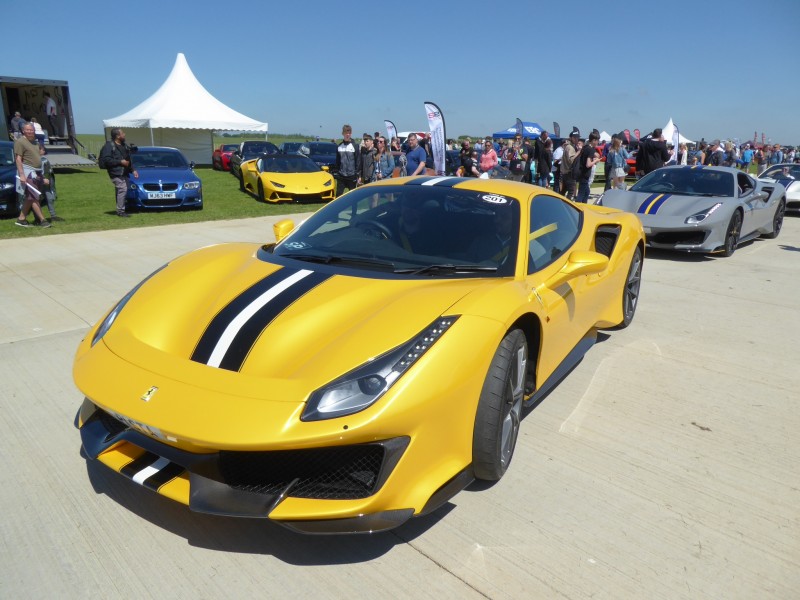
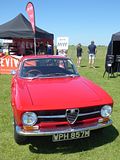
.JPG?width=180&height=120&fit=bounds)
.JPG?width=180&height=120&fit=bounds)
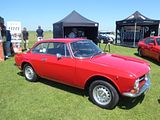
.JPG?width=180&height=120&fit=bounds)
.JPG?width=180&height=120&fit=bounds)
.JPG?width=180&height=120&fit=bounds)
.JPG?width=180&height=120&fit=bounds)
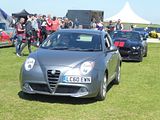

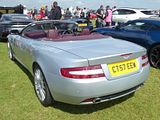
.JPG?width=180&height=120&fit=bounds)
.JPG?width=180&height=120&fit=bounds)
.JPG?width=180&height=120&fit=bounds)
.JPG?width=180&height=120&fit=bounds)
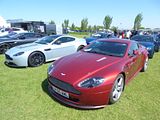
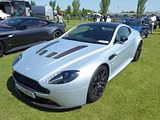
.JPG?width=180&height=120&fit=bounds)
.JPG?width=180&height=120&fit=bounds)
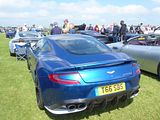
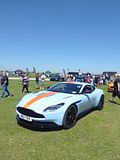


.JPG?width=180&height=120&fit=bounds)
.JPG?width=180&height=120&fit=bounds)
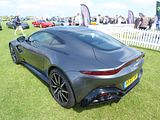
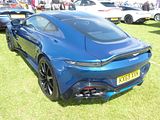
.JPG?width=180&height=120&fit=bounds)


.JPG?width=180&height=120&fit=bounds)
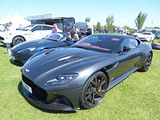

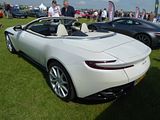
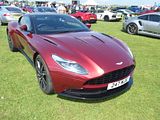
.JPG?width=180&height=120&fit=bounds)
.JPG?width=180&height=120&fit=bounds)
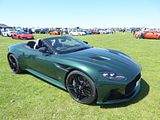


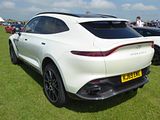
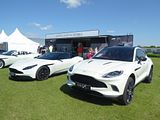
.JPG?width=180&height=120&fit=bounds)
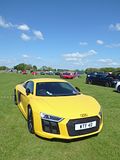
.JPG?width=180&height=120&fit=bounds)
.JPG?width=180&height=120&fit=bounds)
.JPG?width=180&height=120&fit=bounds)
.JPG?width=180&height=120&fit=bounds)
.JPG?width=180&height=120&fit=bounds)


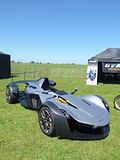
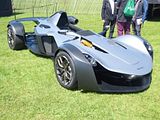
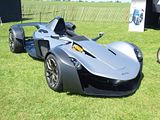
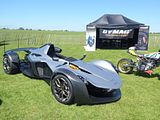
.JPG?width=180&height=120&fit=bounds)
.JPG?width=180&height=120&fit=bounds)
.JPG?width=180&height=120&fit=bounds)
.JPG?width=180&height=120&fit=bounds)
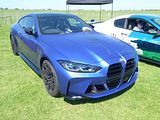
.JPG?width=180&height=120&fit=bounds)
.JPG?width=180&height=120&fit=bounds)
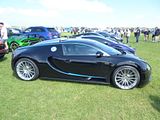
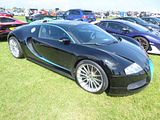
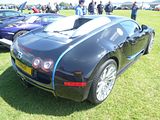
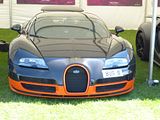
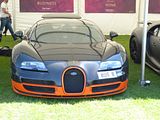
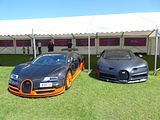
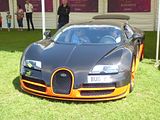
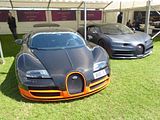
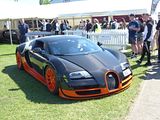
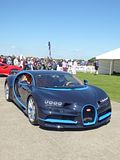

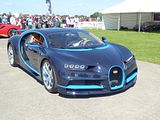
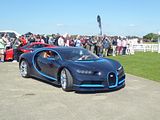
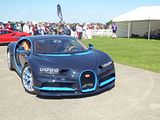
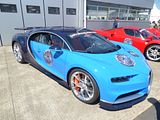
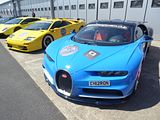
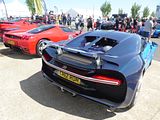
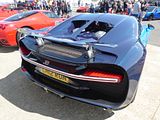
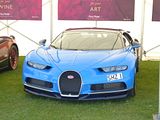
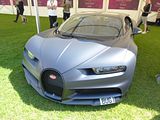
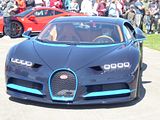
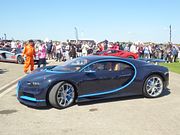
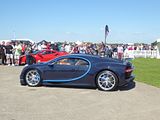
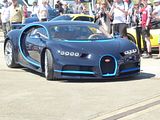
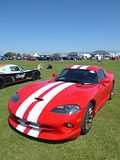
.JPG?width=180&height=120&fit=bounds)
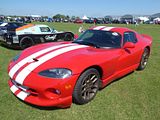
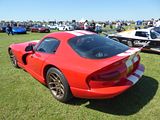
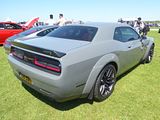
.JPG?width=180&height=120&fit=bounds)
.JPG?width=180&height=120&fit=bounds)
.JPG?width=180&height=120&fit=bounds)
.JPG?width=180&height=120&fit=bounds)
.JPG?width=180&height=120&fit=bounds)
.JPG?width=180&height=120&fit=bounds)
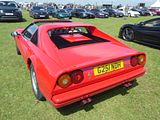
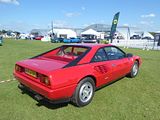
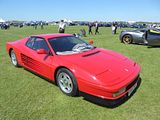
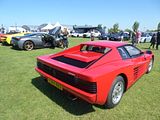
.JPG?width=180&height=120&fit=bounds)
.JPG?width=180&height=120&fit=bounds)
.JPG?width=180&height=120&fit=bounds)
.JPG?width=180&height=120&fit=bounds)

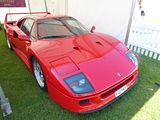

.JPG?width=180&height=120&fit=bounds)


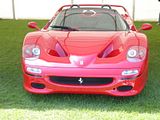
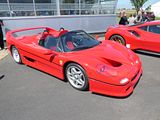
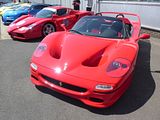
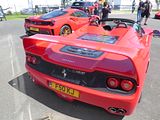
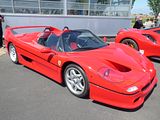
.JPG?width=180&height=120&fit=bounds)
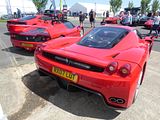

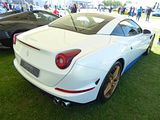
.JPG?width=180&height=120&fit=bounds)
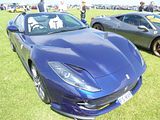
.JPG?width=180&height=120&fit=bounds)
.JPG?width=180&height=120&fit=bounds)
.JPG?width=180&height=120&fit=bounds)
.JPG?width=180&height=120&fit=bounds)
.JPG?width=180&height=120&fit=bounds)
.JPG?width=180&height=120&fit=bounds)
.JPG?width=180&height=120&fit=bounds)
.JPG?width=180&height=120&fit=bounds)
.JPG?width=180&height=120&fit=bounds)

.JPG?width=180&height=120&fit=bounds)
.JPG?width=180&height=120&fit=bounds)

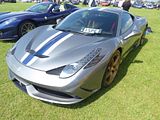
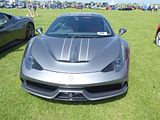
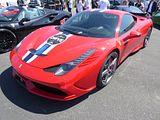
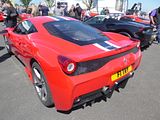
.JPG?width=180&height=120&fit=bounds)
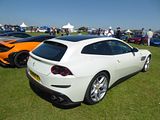
.JPG?width=180&height=120&fit=bounds)
.JPG?width=180&height=120&fit=bounds)
.JPG?width=180&height=120&fit=bounds)
.JPG?width=180&height=120&fit=bounds)
.JPG?width=180&height=120&fit=bounds)
.JPG?width=180&height=120&fit=bounds)
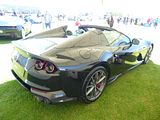
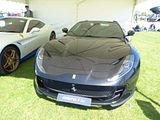
.JPG?width=180&height=120&fit=bounds)
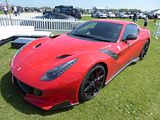
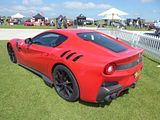
.JPG?width=180&height=120&fit=bounds)
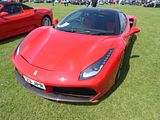

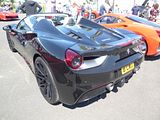
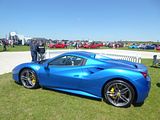

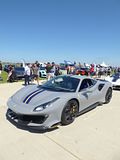
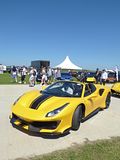

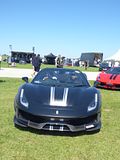
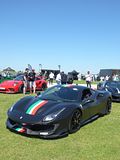



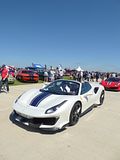


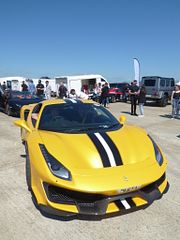

.JPG?width=180&height=120&fit=bounds)
.JPG?width=180&height=120&fit=bounds)
.JPG?width=180&height=120&fit=bounds)
.JPG?width=180&height=120&fit=bounds)
.JPG?width=180&height=120&fit=bounds)
.JPG?width=180&height=120&fit=bounds)
.JPG?width=180&height=120&fit=bounds)
.JPG?width=180&height=120&fit=bounds)
.JPG?width=180&height=120&fit=bounds)
.JPG?width=180&height=120&fit=bounds)
.JPG?width=180&height=120&fit=bounds)
.JPG?width=180&height=120&fit=bounds)
.JPG?width=180&height=120&fit=bounds)
.JPG?width=180&height=120&fit=bounds)
.JPG?width=180&height=120&fit=bounds)
.JPG?width=180&height=120&fit=bounds)
.JPG?width=180&height=120&fit=bounds)
.JPG?width=180&height=120&fit=bounds)
.JPG?width=180&height=120&fit=bounds)
.JPG?width=180&height=120&fit=bounds)
.JPG?width=180&height=120&fit=bounds)
.JPG?width=180&height=120&fit=bounds)
.JPG?width=180&height=120&fit=bounds)
.JPG?width=180&height=120&fit=bounds)
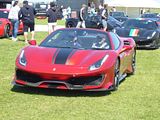

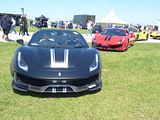
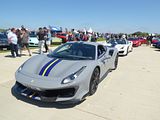
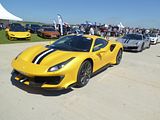
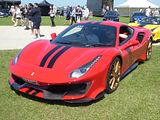
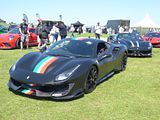
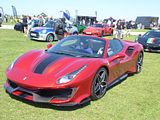
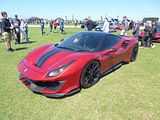
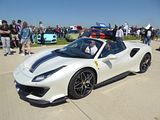
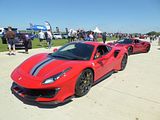
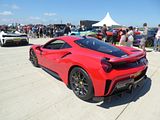

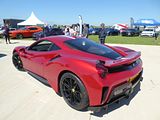
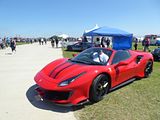
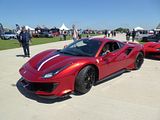
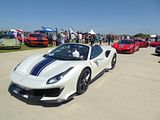
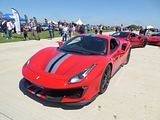

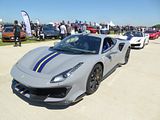
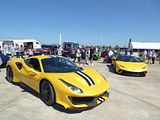
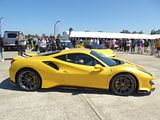
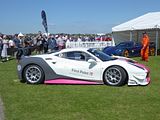
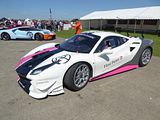
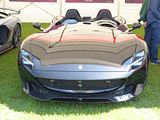
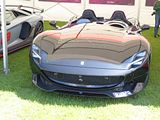
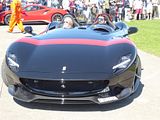
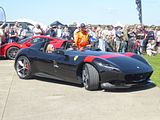

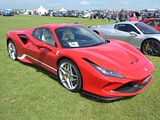

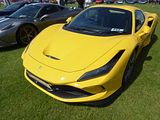
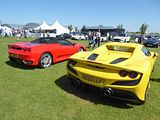
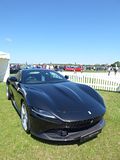
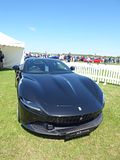
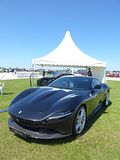
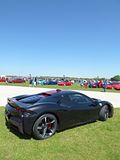

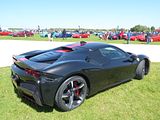
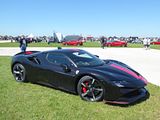
.JPG?width=180&height=120&fit=bounds)
.JPG?width=180&height=120&fit=bounds)
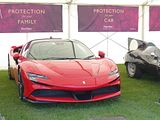
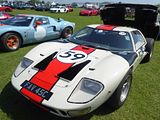
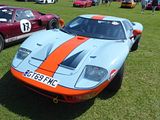
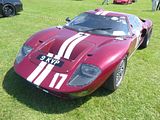
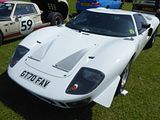
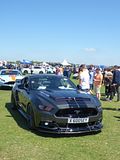
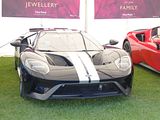
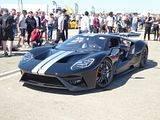

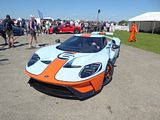
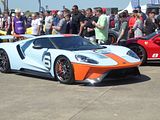
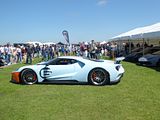
.JPG?width=180&height=120&fit=bounds)
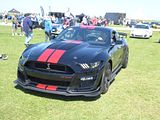

.JPG?width=180&height=120&fit=bounds)
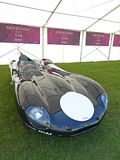
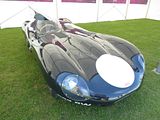

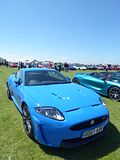
.JPG?width=180&height=120&fit=bounds)
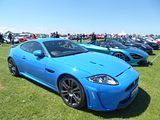
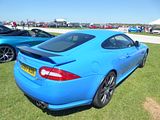

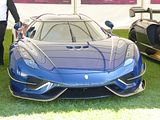
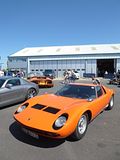
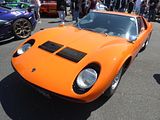
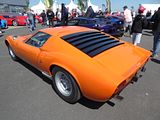
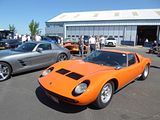
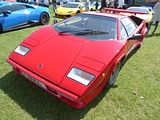
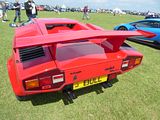
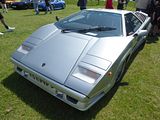
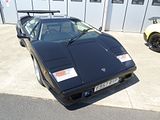

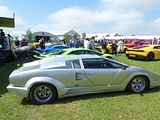
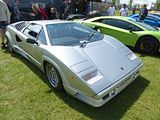
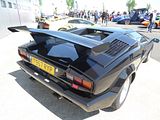
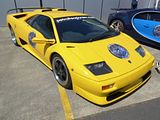
.JPG?width=180&height=120&fit=bounds)
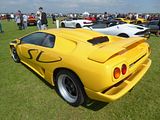
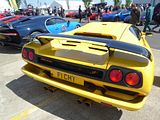
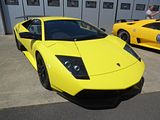
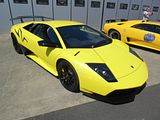
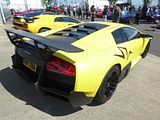

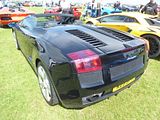
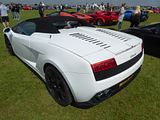
.JPG?width=180&height=120&fit=bounds)
.JPG?width=180&height=120&fit=bounds)
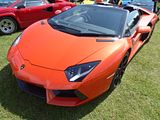


.JPG?width=180&height=120&fit=bounds)
.JPG?width=180&height=120&fit=bounds)
.JPG?width=180&height=120&fit=bounds)
.JPG?width=180&height=120&fit=bounds)
.JPG?width=180&height=120&fit=bounds)
.JPG?width=180&height=120&fit=bounds)
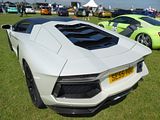
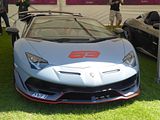


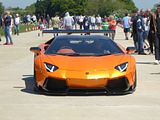
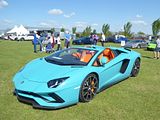
.JPG?width=180&height=120&fit=bounds)


.JPG?width=180&height=120&fit=bounds)

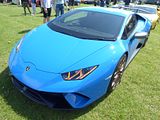
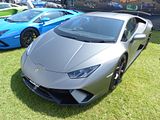
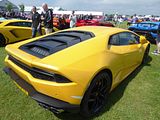
.JPG?width=180&height=120&fit=bounds)
.JPG?width=180&height=120&fit=bounds)
.JPG?width=180&height=120&fit=bounds)
.JPG?width=180&height=120&fit=bounds)
.JPG?width=180&height=120&fit=bounds)
.JPG?width=180&height=120&fit=bounds)
.JPG?width=180&height=120&fit=bounds)
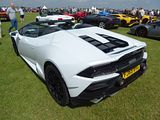
.JPG?width=180&height=120&fit=bounds)
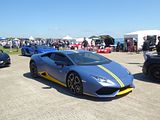
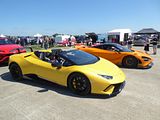





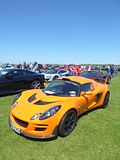
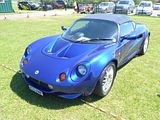
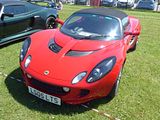





.JPG?width=180&height=120&fit=bounds)
.JPG?width=180&height=120&fit=bounds)
.JPG?width=180&height=120&fit=bounds)
.JPG?width=180&height=120&fit=bounds)
.JPG?width=180&height=120&fit=bounds)
.JPG?width=180&height=120&fit=bounds)
.JPG?width=180&height=120&fit=bounds)
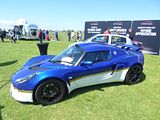
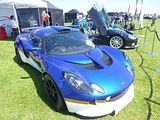
.JPG?width=180&height=120&fit=bounds)
.JPG?width=180&height=120&fit=bounds)
.JPG?width=180&height=120&fit=bounds)
.JPG?width=180&height=120&fit=bounds)
.JPG?width=180&height=120&fit=bounds)
.JPG?width=180&height=120&fit=bounds)
.JPG?width=180&height=120&fit=bounds)
.JPG?width=180&height=120&fit=bounds)
.JPG?width=180&height=120&fit=bounds)

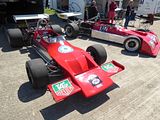
.JPG?width=180&height=120&fit=bounds)
.JPG?width=180&height=120&fit=bounds)
.JPG?width=180&height=120&fit=bounds)


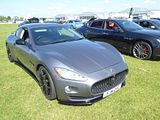



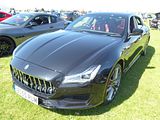
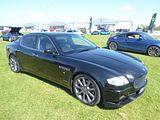
.JPG?width=180&height=120&fit=bounds)
.JPG?width=180&height=120&fit=bounds)

.JPG?width=180&height=120&fit=bounds)
.JPG?width=180&height=120&fit=bounds)
.JPG?width=180&height=120&fit=bounds)
.JPG?width=180&height=120&fit=bounds)
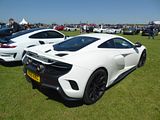
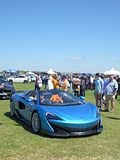
.JPG?width=180&height=120&fit=bounds)
.JPG?width=180&height=120&fit=bounds)
.JPG?width=180&height=120&fit=bounds)
.JPG?width=180&height=120&fit=bounds)
.JPG?width=180&height=120&fit=bounds)
.JPG?width=180&height=120&fit=bounds)
.JPG?width=180&height=120&fit=bounds)
.JPG?width=180&height=120&fit=bounds)
.JPG?width=180&height=120&fit=bounds)
.JPG?width=180&height=120&fit=bounds)
.JPG?width=180&height=120&fit=bounds)
.JPG?width=180&height=120&fit=bounds)
.JPG?width=180&height=120&fit=bounds)
.JPG?width=180&height=120&fit=bounds)
.JPG?width=180&height=120&fit=bounds)
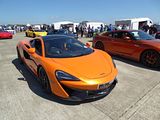
.JPG?width=180&height=120&fit=bounds)
.JPG?width=180&height=120&fit=bounds)
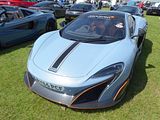
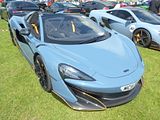
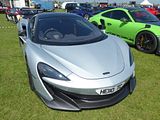
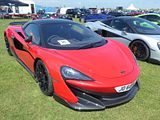

.JPG?width=180&height=160&fit=bounds)
.JPG?width=180&height=120&fit=bounds)
.JPG?width=180&height=120&fit=bounds)
.JPG?width=180&height=120&fit=bounds)
.JPG?width=180&height=120&fit=bounds)
.JPG?width=180&height=120&fit=bounds)
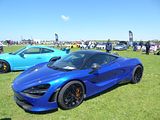

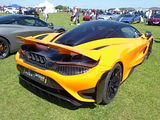
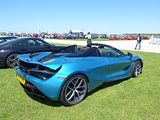
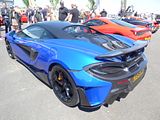
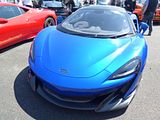
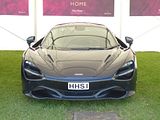
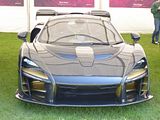
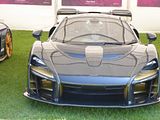
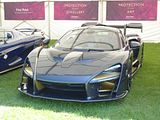
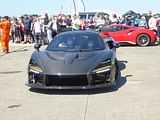

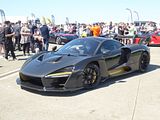
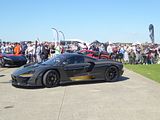
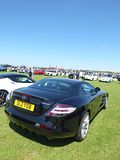
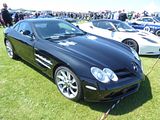
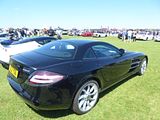
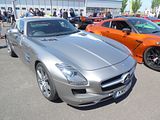
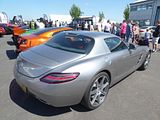
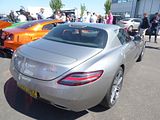
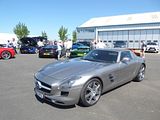
.JPG?width=180&height=120&fit=bounds)
.JPG?width=180&height=120&fit=bounds)
.JPG?width=180&height=120&fit=bounds)


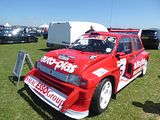
.JPG?width=180&height=120&fit=bounds)
.JPG?width=180&height=120&fit=bounds)
.JPG?width=180&height=120&fit=bounds)
.JPG?width=180&height=120&fit=bounds)
.JPG?width=180&height=120&fit=bounds)
.JPG?width=180&height=120&fit=bounds)
.JPG?width=180&height=120&fit=bounds)
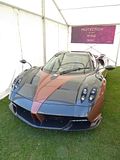

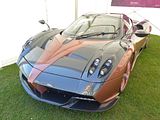
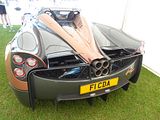
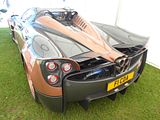



.JPG?width=180&height=120&fit=bounds)
.JPG?width=180&height=120&fit=bounds)
.JPG?width=180&height=120&fit=bounds)
.JPG?width=180&height=120&fit=bounds)



.JPG?width=180&height=120&fit=bounds)
.JPG?width=180&height=120&fit=bounds)
.JPG?width=180&height=120&fit=bounds)
.JPG?width=180&height=120&fit=bounds)
.JPG?width=180&height=120&fit=bounds)
.JPG?width=180&height=120&fit=bounds)

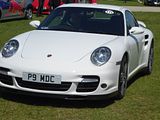
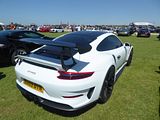
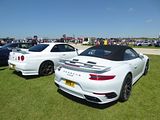



.JPG?width=180&height=120&fit=bounds)
.JPG?width=180&height=120&fit=bounds)
.JPG?width=180&height=120&fit=bounds)
.JPG?width=180&height=120&fit=bounds)




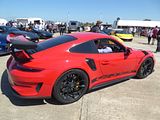
.JPG?width=180&height=120&fit=bounds)

.JPG?width=180&height=120&fit=bounds)
.JPG?width=180&height=120&fit=bounds)
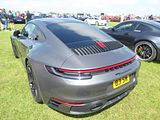
.JPG?width=180&height=120&fit=bounds)
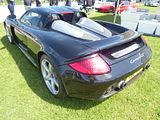
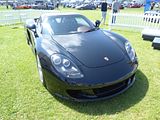
.JPG?width=180&height=120&fit=bounds)


.JPG?width=180&height=120&fit=bounds)
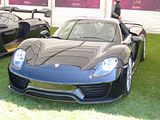
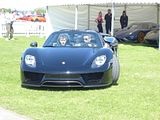
.JPG?width=180&height=120&fit=bounds)
.JPG?width=180&height=120&fit=bounds)
.JPG?width=180&height=120&fit=bounds)
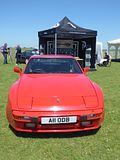
.JPG?width=180&height=120&fit=bounds)
.JPG?width=180&height=120&fit=bounds)
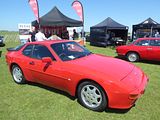
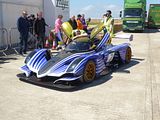

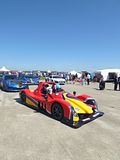
.JPG?width=180&height=120&fit=bounds)
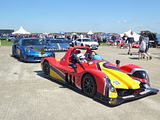


.JPG?width=180&height=120&fit=bounds)
.JPG?width=180&height=120&fit=bounds)
.JPG?width=180&height=120&fit=bounds)
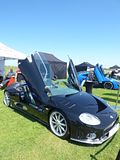

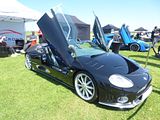
.JPG?width=180&height=120&fit=bounds)
.JPG?width=180&height=120&fit=bounds)


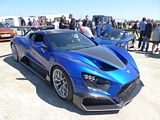
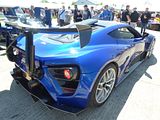
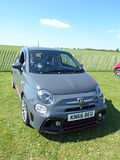
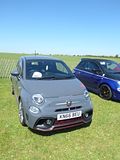
.JPG?width=180&height=120&fit=bounds)
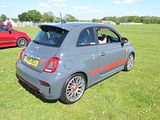
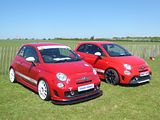
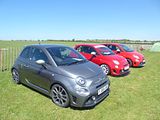

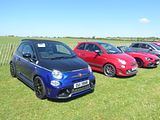
.JPG?width=180&height=120&fit=bounds)

.JPG?width=180&height=120&fit=bounds)
.JPG?width=180&height=120&fit=bounds)
.JPG?width=180&height=120&fit=bounds)
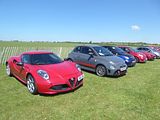
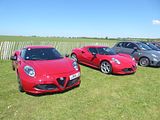

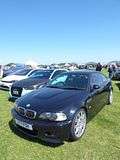
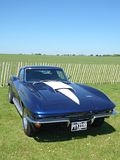
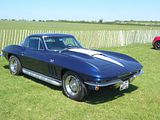
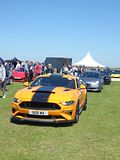
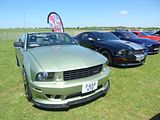
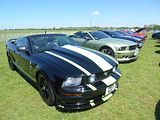
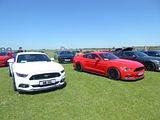


.JPG?width=180&height=120&fit=bounds)
.JPG?width=180&height=120&fit=bounds)

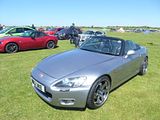


.JPG?width=180&height=120&fit=bounds)
.JPG?width=180&height=120&fit=bounds)
.JPG?width=180&height=120&fit=bounds)
.JPG?width=180&height=120&fit=bounds)
.JPG?width=180&height=120&fit=bounds)
.JPG?width=180&height=120&fit=bounds)
.JPG?width=180&height=120&fit=bounds)
.JPG?width=180&height=120&fit=bounds)
.JPG?width=180&height=120&fit=bounds)
.JPG?width=180&height=120&fit=bounds)
.JPG?width=180&height=120&fit=bounds)
.JPG?width=180&height=120&fit=bounds)
.JPG?width=180&height=120&fit=bounds)
.JPG?width=180&height=120&fit=bounds)
.JPG?width=180&height=120&fit=bounds)
.JPG?width=180&height=120&fit=bounds)
.JPG?width=180&height=120&fit=bounds)
.JPG?width=180&height=120&fit=bounds)
.JPG?width=180&height=120&fit=bounds)
.JPG?width=180&height=120&fit=bounds)
.JPG?width=180&height=120&fit=bounds)
.JPG?width=180&height=120&fit=bounds)
.JPG?width=180&height=120&fit=bounds)
.JPG?width=180&height=120&fit=bounds)
.JPG?width=180&height=120&fit=bounds)
.JPG?width=180&height=120&fit=bounds)
.JPG?width=180&height=120&fit=bounds)
.JPG?width=180&height=120&fit=bounds)
.JPG?width=180&height=120&fit=bounds)
.JPG?width=180&height=120&fit=bounds)
.JPG?width=180&height=120&fit=bounds)
.JPG?width=180&height=120&fit=bounds)
.JPG?width=180&height=120&fit=bounds)
.JPG?width=180&height=120&fit=bounds)
.JPG?width=180&height=120&fit=bounds)
.JPG?width=180&height=120&fit=bounds)
.JPG?width=180&height=120&fit=bounds)
.JPG?width=180&height=120&fit=bounds)
.JPG?width=180&height=120&fit=bounds)
.JPG?width=180&height=120&fit=bounds)
.JPG?width=180&height=120&fit=bounds)
.JPG?width=180&height=120&fit=bounds)
.JPG?width=180&height=120&fit=bounds)
.JPG?width=180&height=120&fit=bounds)
.JPG?width=180&height=120&fit=bounds)
.JPG?width=180&height=120&fit=bounds)
.JPG?width=180&height=120&fit=bounds)
.JPG?width=180&height=120&fit=bounds)
.JPG?width=180&height=120&fit=bounds)
.JPG?width=180&height=120&fit=bounds)
.JPG?width=180&height=120&fit=bounds)
.JPG?width=180&height=120&fit=bounds)
.JPG?width=180&height=120&fit=bounds)
.JPG?width=180&height=120&fit=bounds)
.JPG?width=180&height=120&fit=bounds)
.JPG?width=180&height=120&fit=bounds)
.JPG?width=180&height=120&fit=bounds)
.JPG?width=180&height=120&fit=bounds)
.JPG?width=180&height=120&fit=bounds)
.JPG?width=180&height=120&fit=bounds)
.JPG?width=180&height=120&fit=bounds)
.JPG?width=180&height=120&fit=bounds)
.JPG?width=180&height=120&fit=bounds)
.JPG?width=180&height=120&fit=bounds)
.JPG?width=180&height=120&fit=bounds)
.JPG?width=180&height=120&fit=bounds)
.JPG?width=180&height=120&fit=bounds)
.JPG?width=180&height=120&fit=bounds)
.JPG?width=180&height=120&fit=bounds)
.JPG?width=180&height=120&fit=bounds)
.JPG?width=180&height=120&fit=bounds)
.JPG?width=180&height=120&fit=bounds)
.JPG?width=180&height=120&fit=bounds)
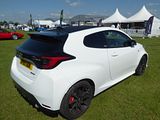
.JPG?width=180&height=120&fit=bounds)
.JPG?width=180&height=120&fit=bounds)


